LISTEN TO MY LATEST PODCAST EPISODE


Ultimate Guide to Creating Your Fashion Portfolio (in one weekend)
Table of Contents
#ez_toc_widget_sticky--1 .ez-toc-widget-sticky-title { font-size: 120%; font-weight: ; color: ; } #ez_toc_widget_sticky--1 .ez-toc-widget-sticky-container ul.ez-toc-widget-sticky-list li.active{ background-color: #ededed; } Table of Contents
Some links in this guide may be affiliate links, which means I get a small commission if you buy. I am only an affiliate for companies and tools I have personally used or personally vetted.
This is not your average blog post on “how to put together a fashion portfolio” with a few tips.
It is THE definitive guide to fashion portfolios.
IMPORTANT! Before you start reading, know that every single fashion portfolio example featured in this guide resulted in paid work – either a freelance client or a fashion job.
This guide is thorough, and it will answer alllllll your questions.
I know because before writing it, I surveyed my email list (13k+ people at the time) and asked, “what questions do you have about your fashion portfolio?”
I got hundreds of questions! And I’ve answered all of them.
First, I interviewed dozens of hiring managers and fashion recruiters to get different perspectives.
Then I combined that with my knowledge from:
- My 15+ years of experience in the fashion industry (working in-house and as a $100k+ freelancer)
- The 100s of portfolios I’ve seen and critiques I’ve done
- The insights I’ve learned from interviewing 100s of fashion industry professionals on my podcast
We’ll get to “how to” stuff in a second. But first, consider a powerful mindset revelation I had while writing this guide:
“If fashion designers just looked at their portfolio the way they look at designing products (clothes, bags, shoes, whatever your category is), it would be SOOOO much easier to get it done!”
It’s so obvious in hindsight, yet I’ve never heard anyone talk about this idea before.
Most fashion designers get stuck in the black “portfolio” hole because we have a personal attachment to it.
It’s our baby . We feel like it defines us as a person.
But what if you looked at your portfolio like you look at designing a collection for an employer or freelance client ?
As a fashion designer, you know:
- How to design great product.
- What details need to be added or removed.
- When that one extra seam line or trim or pop of color is too much or just enough.
- What styles don’t belong and should be dropped from an assortment.
And the same is true when it comes to your portfolio.
You’ve just never looked at it this way.
Easier said than done, I know!
But try to reframe your approach. I think it’ll make things a lot easier for you.
Your Fashion Portfolio In A Weekend: How Does That Actually Work?
Here’s the framework I’ve created for you to get your portfolio done in a weekend.
Depending on your experience, you may need more (or less!) time. If you need to design a new collection to try and break into a new category, a student, or are new to the industry , you may need more time to get things together.
(I cover tips and strategies for fashion designers of all levels in this guide – freelancers and employees alike. Don’t worry, I’ll answer your questions soon.)
But no matter your skill or experience, your portfolio should never take more than a month . That is plenty of time, start to finish.
Here’s roughly what your schedule will look like.
DAY 1: Organize Your Work
- collect / scan / organize assets for 3-5 projects / collections (we’ll cover step by step how to choose and what you should include)
- conceptualize / sketch your layouts for each project (we’ll walk through what order to present your work and example layouts you can use for inspiration)
DAY 2: Put Your Book Together
- make sure every item in your book passes the Portfolio Golden Rule (we’ll go through exactly what this is and how to apply it to your work)
- this should be easy once you’ve done all the other work
- turn your physical book into a digital one (PDF) or vice versa (do the format you’re more comfortable with first, and then convert to the other)
Three Tips To Get The Most Out Of This Fashion Portfolio Guide
First, a heads up about three things.
1. Your fashion portfolio is not a science, it’s an art.
A lot of you wanted specific answers to “science-y” questions like:
“How many pages should it be?” “How many projects is enough?” “How much inspiration is too much?”
Those are hard questions, and it often “depends.”
I’ve done my best to give rough guidelines and frameworks to figure these things out based on your unique situation, but there are a lot of variables.
Your experience, your skills, whether you’re looking for freelance or full-time work, and other factors make concrete answers difficult.
To help you as much as possible, I give some “numerical” suggestions. But they’re flexible – use your judgment.
2. You may notice some repetition in my advice.
As I wrote this guide and answered each question about fashion design portfolios, I noticed patterns.
Answers started looking similar, even to different questions.
So, you may notice some repetition. I edited it as much as I felt appropriate while still addressing your concerns. I know it’s easy to feel like your unique situation is different, and I wanted to give your questions the attention they deserved.
But the truth is, your fashion portfolio shouldn’t be that complicated. Deep down, you know that. And you probably know the answers to a lot of the questions you’ve asked.
Because sometimes we all just need someone else to tell us the answer and reassure us.
That’s my goal with this guide.
3. If you get only ONE thing out of this guide, let it be this:
While writing this guide, I created something I call the Portfolio Golden Rule .
Any question you have about your portfolio? The Portfolio Golden Rule will help you answer it.
We’ll go through many examples and I’ll show you why it’s so relevant, but if you only learn and remember one thing, it’s this:
The Portfolio Golden Rule
“this [project/collection/design] speaks to the brand, tells them that i understand their market, customer and aesthetic, and visually shows them that i am the right [designer/td/pd/etc] for them.”.
This is a litmus test for everything you put in your portfolio. If you can’t say yes, it likely doesn’t belong.
HERE’S EXACTLY WHAT WE’LL COVER
Chapter 1: fashion design portfolio layouts: digital and physical books.
- What is the industry preferred format for a fashion design portfolio? Digital or physical book? Both?
- What books / sizes / specs etc are best for physical fashion portfolios?
- What’s the best platform to digitally create your fashion design portfolio?
What’s the best way to share your fashion design portfolio as a PDF?
Can you bring an ipad to a fashion interview (instead of a physical portfolio), chapter 2: fashion design portfolio pdfs: digital tech tips, how do you make sure your files aren’t huge (for emailing).
- What specs should you use for the best on screen presentation?
- Should you use Illustrator, InDesign or Photoshop to put your fashion portfolio together digitally?
How do you know the color on your screen isn’t going to be compromised when printing pages for your fashion portfolio?
The last (and arguably most important) tech tip: backup your work, chapter 3: fashion portfolio overload: how to stay organized, what if you haven’t solidified your category in the fashion industry and want to keep your options open, what if you’ve done work in many fashion design categories and feel like you have 10 different portfolios, how much should your fashion portfolio differ from one application to the next, chapter 4: what to do when you’re stuck on your fashion portfolio.
- How to simplify the fashion portfolio process by doing 2 easy things
CHAPTER 5: What (and How Much) to Include in Your Fashion Design Portfolio
How much work should you include in your fashion portfolio, what kind of work should you include in your fashion portfolio research, ideation, sketchbook, technical, etc.
- Here are specific details about what The Process Portfolio may include
How do you choose what projects / pieces to include in your fashion portfolio?
What is the best order to layout your fashion portfolio.
- The biggest mistake fashion designers make when laying out their portfolio
CHAPTER 6: Can You Include Client / Company Work in Your Fashion Portfolio?
- How do you navigate including client work in your fashion portfolio?
- What are the ethics around sharing tech packs / graded specs / other technical details in your fashion portfolio?
What if the original work wasn’t 100% self generated (ie licensed / private label)?
How do you include work that was done collaboratively as a team in your fashion design portfolio, chapter 7: portfolios for fashion design students and entry level jobs.
- What expectations do employers have for recent fashion grads or entry level fashion designers?
How do you make sure your fashion portfolio looks professional and not like a student’s?
What should you include in your fashion portfolio if you don’t have much experience / only school work, chapter 8: fashion portfolios for a new category or job.
- How do you put together your portfolio for a “new to you” category / role in the fashion industry?
How do you show you’re capable even though the fashion role is “new to you”?
Chapter 9: fashion portfolios for technical design or merchandising jobs.
- How do you put your fashion portfolio together if you’re not a “designer”?
What should a fashion patternmaker / technical design / product development / visual merchandiser portfolio look like?
Chapter 10: job interviews and your fashion portfolio: meeting brand expectations.
- What do employers expect to see / look for in your fashion portfolio?
- When looking for fashion design roles, how can you anticipate individual brand’s expectations and meet them?
- What is the scope of work fashion brands want to see in your portfolio? (Full seasons? One project?)
How much do employers want to see conceptual vs commercial work in your fashion portfolio? Does it matter if the designs went into production / stores?
Chapter 11: finding fashion portfolio examples & inspiration.
- How do you find the best fashion design portfolio examples? And how do you know if they’re any good?
How do you not get discouraged when you start finding fashion portfolio examples that are better than yours?
Chapter 12: fashion portfolio checklist (and more layout examples that have resulted in paid work).
- Your Fashion Design Portfolio Outline + Checklist
- Fashion Portfolio Layout Examples (with critiques + comments)
CHAPTER 13: Getting Fashion Portfolio Feedback
- How do you stop feeling protective about your work and gain courage to get feedback on your fashion portfolio?
Where’s the best place to get constructive feedback on your fashion portfolio?
- Where are forums where you can get feedback on your fashion portfolio?
- How do you know if the people you’re sharing your fashion portfolio with are trusted and vetted?
What’s the best way to get constructive feedback on your fashion portfolio?
What do you do with negative feedback on your fashion portfolio, chapter 14: updating your fashion portfolio and being prepared for opportunities.
- How do you make sure you’re prepared for fashion design opportunities that fall in your lap?
How do you casually pitch your fashion portfolio at a random opportunity / when a stranger in the industry shows up? (The fashion designer’s ‘elevator pitch’.)
- What are the best practices to keep your fashion portfolio up to date?
CHAPTER 15: Protect Your Fashion Design Portfolio
How do you protect the fashion designs you create for test projects, how do you avoid plagiarism / protect your fashion design work online, chapter 16: fashion portfolio motivation: competition and staying relevant, how do you stay motivated when you aren’t making any progress on your fashion portfolio, how do you compete with people willing to work for free or cheap to “gain a fashion portfolio”, how do you stay ahead of the competition with your fashion portfolio, how do you show you’re still relevant if you’ve been out of the fashion industry for a while.
- Why your fashion portfolio will never be perfect (or completely done)
Quick announcement, in case you missed it! EVERY portfolio example featured in this guide has successfully landed a job or freelance client.
Ready? Let’s do this.
Chapter 1: Fashion Design Portfolio Layouts: Digital and Physical Books
The type of portfolio layouts you need will vary if you’re looking for a full-time job or remote freelance clients. For most full-time fashion design jobs, you likely need both digital and physical, and for remote freelancing, a digital version is enough. Digital doesn’t have to be a website, though. A simple PDF can suffice.
True Story: In my 10+ years of being a freelance fashion designer, I never kept a “physical” portfolio. The majority of my work was true remote freelance (not abusive “temp jobs” ), and most clients came from trusted referrals and networking. Often, we never even meet before beginning a project. If there is an in person meeting, I bring catalogs and physical samples to share, or they’re already familiar with my work from the referral. Sometimes, I’ll put a quick PDF together to show them relevant work examples or some ideas for their project, but I’ve never had an up to date “book.” I am not an exception. Most of the successful freelancers I know, have interviewed on my podcast, or who are students in my FAST program – designers, TDs, PDs, patternmakers and more – don’t keep a physical portfolio, and often don’t even update their digital one.
Let’s look at some more specific questions about layouts.
What books / sizes / specs etc are best for physical fashion portfolio layouts?
Depending on the types of brands you work with (Gucci vs Walmart), this may vary. But in general, you want your portfolio to show that you put some creativity and care into it.
While researching for this guide, I talked to a lot of hiring managers and recruiters in the fashion industry. The consensus is that no one wants to see a generic folder from Staples with sheet protectors like these.

Your portfolio shouldn’t look like a board meeting report!
You are a FASHION DESIGNER! Show that you are CREATIVE!
You don’t have to spend a lot, just get handy with your DIY skills.
First, figure out what size you want your portfolio to be.
Choose a default paper size. Bristol board works well, so pick a mid paper weight and one of their standard sizes. I’d suggest a size with “some” impact like 11×14″ or 14×17.”
The larger the size, the heavier the paper you’ll need. Go to a local craft store to feel for yourself and pick something sturdy for your size.
Next, make your own book.
There are plenty of DIY ways to work with a small budget. Pinterest has great options. Spend 20 minutes, find inspo you love, and make it. Get crafty with something around your house or cover a cheap piece of lightweight wood with fabric.

You’re a fashion designer, and you’re creative. You can do this.
Where do you get large pages printed for oversized portfolios?
Don’t print your work directly on the large pages of your fashion portfolio. Instead, print on standard printer size cardstock or a nice presentation paper (I love Epson’s presentation paper , but get whatever you can locally that’s a step up from plain printer paper).
Cut out projects by hand or use a paper cutter, and collage your layout onto the Bristol board using removable / repositionable tape .
This works great because you 1) get to reuse your Bristol Board pages over and over and 2) can easily customize your portfolio for any opportunity.
How you “artistically” lay your printed pages out on the Bristol Board is up to you, but use your creativity to assemble the pages in a way that represents your aesthetic. Here are a few examples.
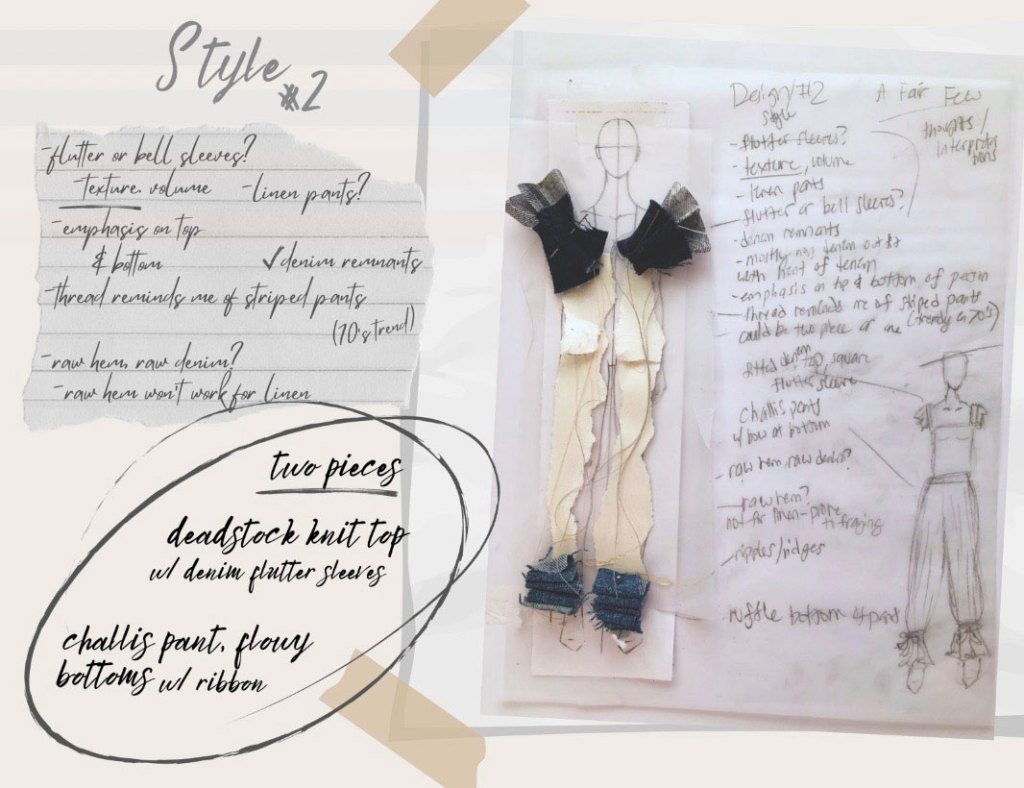
Be mindful of how “creative” you get. If you’re going after high fashion brands, you can be more artsy. If you work with less fashion forward brands, it shouldn’t feel too abstract.
Pro Tip : Include fabric and color swatches in your physical portfolio to add a touch and feel aspect. Even if you have to buy some random fabrics from the store for self-directed projects (which yes, are ok to have in your portfolio), it adds dimension and shows you’re thinking about the design as a whole. You can also add these to your digital book as scans or photos.
What’s the best platform to digitally create your fashion design portfolio online?
I feel really strongly that you *don’t* need a website. For years, I used a simple PDF portfolio for my freelance career. It’s what I teach my FAST students to do as well. And many, MANY (!!) of them are extremely successful without a website.
So, create your fashion portfolio as a PDF (specific tech tips in just a sec).
It’s easy to put together, doesn’t require messing with websites, HTML, URLs or anything like that. Whether you’re becoming a freelancer or looking for your dream job , it works great.
Don’t send giant email attachments, so use a free Dropbox account.
I recommend Dropbox or Google drive over WeTransfer or other file sharing services because Dropbox/GD links don’t expire.
Dropbox/GD can also save you in a pinch when you accidentally hit send and 30 seconds later realize you wanted to change “just one more thing!” Edit your file and the recipient will never know. Make sure to link to a folder with the PDF, not the PDF itself! The link can sometimes change even if you save with the same file name.
Pro Tip : create clean links in your emails, it just comes across that much prettier. Just highlight the text you want to link and click the “link” icon in your email provider to paste the link.
Here’s the difference:

Quick story about one of our very successful Freelance Accelerator : from Surviving to Thriving (FAST) students, Alexandra Agreda , who sends a PDF. Her clients love it! “Literally every time I link a few of those PDF bad boys from my dropbox into an email I get such amazing feedback, clients are always so impressed!”
If you really want to create a fashion portfolio website, here’s my best advice.
First, pick a platform and move on.
It’s about your work…not the platform.
There are a lot of fashion portfolio website options out there. They include:
- StylePortfolios (part of StyleCareers)
- Squarespace
They all work fine. So just choose one.
If you’re active on LinkedIn, put it there. If you apply to a lot of jobs on StyleCareers, put it there. If you have a friend who swears by Behance, put it on Behance.
Spend ONE hour MAX looking at the options, make a decision and move on. Your focus should be on your work, not the platform.
And remember…if a website terrifies you, then stick with a PDF. I promise, it works great.
I asked a lot of fashion recruiters and hiring managers about this, and their thoughts varied. Some brands really want the tactile experience of a book, some are ok with digital only.
This is a judgment call based on the types of brands you’re interested in working with. The more “fashion-y” a brand leans, the more important it’ll be to have a physical book and create a tactile experience during your interview.
Pro-Tip : If you choose to go digital only, compensate by bringing a sample garments to show during an interview. (This is actually a great strategy even if you have a physical book.)
Whatever format(s) you choose for your fashion portfolio layout, be familiar enough with your book that you can quickly navigate to the work they’ll want to see.
Pull irrelevant pages out of your physical book or create shortcut links on your iPad home screen.
No one wants to watch you fumble through a ton of pages looking for that perfect project.
Because even 30 seconds feels like an eternity in an interview.
Chapter 2: Fashion Design Portfolio PDFs: Digital Tech Tips
What is the best software to layout your fashion portfolio.
It’s less about the software, and more about what you are comfortable with.
If it’s just a page or two, Illustrator might be easier.
If you’re mocking up a whole book and know InDesign, that may be your best option ( if you already know how to use it).
If you love Photoshop and that’s where you’re comfortable doing layouts (not my personal choice, but you do you), then run with it.
Do it in Canva, or MilaNote, or Figma!
Just choose the easiest option.
The number one mistake many designers make when putting their fashion portfolio PDF together is creating HUGE files that are impossible to email to brands.
Export vector artwork (or even entire layouts) as JPGs and then merge them into your PDF.
Depending on what software you’re using, you may need to do some googling on how to export.
I’ll show you how to export from Illustrator and merge into a PDF using Acrobat.
Depending on your version of Illustrator and Acrobat, the settings and how to do this may vary slightly, but it should look something like this:
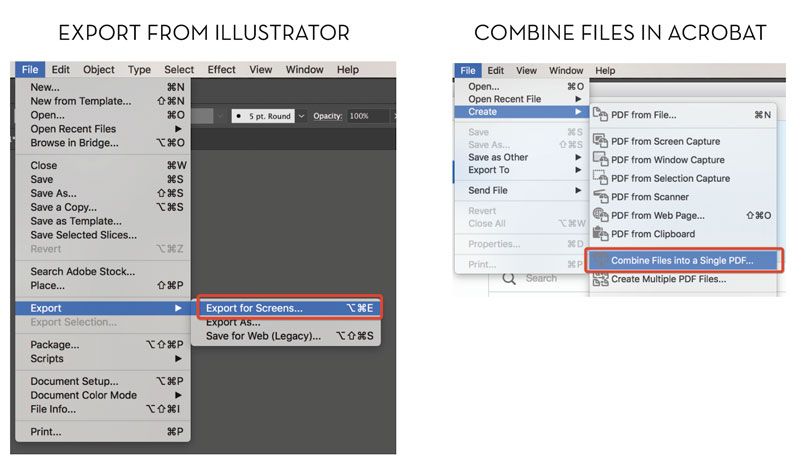
If yours looks different, Google “how to export a JPG from [software xx version]” and “how to merge JPGs into a PDF in Acrobat [xx version].”
If the JPG exports are still too big, try a screenshot (cmd+shift+4 on a Mac, or use Snipping Tool for Windows). I’ve had mixed luck with this compared to exports.
What specs should you use to maximize on screen presentation?
The standard for optimal viewing and file size is 72 DPI or PPI (Dots / Pixels Per Inch). This is in contrast to 300 DPI which is used for printing.
That means for every square inch of space, there are 72 or 300 pixels or dots. Any less than 72 for screen and 300 for print, and things can start to look pixelated or blurry.
For your online fashion portfolio, 72 DPI is sufficient, although I know some fashion designers who like to use 150 DPI, the middle setting between print and screen. It’s a happy medium between better resolution (in case the recipient zooms in or prints a copy) and file size.
Pro Tip : Higher resolution will mean higher file size, so keep an eye on that and choose a balance between the two.
When you set your DPI, there is another variable to consider:
What size is the page / artwork that you’re exporting?
A sketch at 100px X 100px @ 72 DPI will display tiny, while a sketch at 1000px X 1000px @ 72 DPI will display huge. They’re both the same resolution, but they’re very different sizes.
Here are my best tips:
If you’re using a platform or template like StylePortfolios or LinkedIn:
Follow the recommended sizes on their site. If they don’t have them, move onto the next suggestion.
If you’re creating the pages for your own website:
A good rule of thumb for most desktop / laptop browsers for “full page*” layouts will look something like this:
Width : 800-1000px.
Height : 1000px (if your layout is any taller, consider splitting it into two images)
*I reference “full page” in relation to “full pages” in your printed book. If you’re showing smaller bits, like just one flat sketch, you’ll probably want to use a smaller measurement.
If you’re creating your digital fashion portfolio as a PDF:
- Set your page size to standard printer paper size (8.5×11 or A4)
- Save each page as a JPG
- Merge JPGs into one PDF (and easily adjust the page order based on the recipient…more that on soon)
If you’re not sure how to export and adjust settings for JPGs, here are tutorials for Illustrator , Photoshop and InDesign .
Unfortunately, you don’t!
There are a lot of variables, and color will look different on your screen vs my screen vs your coworker’s iPhone screen. The same is true for printers.
When putting together your portfolio, it’s advisable to work in the CMYK color mode since that’s the go-to for traditional printing, giving you colors that can be more accurate. However, there are also RGB printers out there, so it’s always smart to check what your print service provider needs and tweak your work to match.Not only will color print different on different printers, it can print differently based on paper, and even external factors like weather (humidity, temperature, etc). Having a screen and printer that is calibrated is expensive and time consuming to set up and maintain.
Plus, there are some colors that are impossible to print (like neons) unless you have a full blown professional printing press.
So, get it close by printing a few variations, adjusting a few times if needed, and moving on.
I’ve always printed sheets of color swatches that have a couple options for each color and compare Pantone swatches to the paper printout to pick the best option. I’ve used this method for catalog, line sheets, and presentations, and it works great.
My swatch pages look like this:

Don’t over tweak this. It’s impossible to get perfect, and anyone who’s been in the industry for a while knows this and will understand. Besides, you’ll be including fabric and color swatch clippings in your printed book (yes, you should), and any hiring manager will know this is the color reference. As long as it’s visually close enough to be considered the same color, it’s fine.
My favorite (and the easiest) way to do this is with Dropbox. A free account may be enough. If not, the yearly fee is reasonable.
It automatically keeps everything synced on folders you choose on your computer. Plus, you can easily access and share your files from anywhere.
Chapter 3: Fashion Portfolio Overload: How to Stay Organized
You may have hundreds of files scattered on your hard drive, DropBox, cloud storage, and jump drives…or if you’re new to the industry, you may not have enough work for any one category. Either way, it can be OVERWHELMING. Luckily, there are really simple tricks to get organized and figure out what to show.
In this chapter, we’ll cover:
- What to include if you haven’t solidified your category yet
- How to narrow down YEARS of work in different categories
- What to do if you’re trying to keep your options open in different categories (ie shoes vs bags vs womenswear)
First, when it comes to your fashion design portfolio, understand this:
Footwear brands don’t care that you’ve designed best selling denim collections.
Kidswear brands don’t care that you’ve designed evening gowns that showed at NYFW.
Menswear brands don’t care that your own “little” brand of lingerie won you awards.
When a brand is hiring you as a FASHION DESIGNER and the goal of your portfolio is to show off your DESIGNS, you need to include designs that SPEAK TO THEM.
You need to pick your NICHE/CATEGORY/MARKET. It’s the best and easiest way to:
- help you stay focused
- show brands why you are the right candidate
There is a place on your resume for all of these other accomplishments (find more resume advice in episodes 6 , 11 , 29 , and 53 of the Fashion Designers Get Paid podcast ) and it doesn’t mean they don’t care about your experience.
But when it comes to your portfolio, the goal is to SHOW them visually you understand their brand and your work speaks to their aesthetic and their customer.
Soon, we’ll go through how many projects you should include and how to choose them, but for now, your goal is to focus on what work speaks to the brands you want to work for.
Let’s look at a few different scenarios.
If you’re somewhat new to the industry and have done a little bit of everything, or if you have a long career in many categories, you might have a variety of projects to show.
If you have enough work that speaks directly to them, leave the irrelevant work out.
Your fashion portfolio is about quality, not quantity. If they want to see more, they’ll ask.
But if you insist, you can include a few different projects from different categories.
Just make sure you show the most relevant work first.
Do this by reordering the pages in your PDF or linking directly to a specific page on your website.
Hiring managers spend a few seconds looking at each candidate, and you have one chance to make a great first impression.
The statistic is 6 seconds for a resume. I’m not sure what it is for a portfolio, but it can’t be much more.
Sometimes, an explanation is all you need:
“As a recent grad with internship experience at a couple different brands, my portfolio shows a variety of work. I included the collection I helped on for XYZ brand, which has a similar aesthetic to [YOUR BRAND NAME]. I also included some work from ABC brand, even though it’s not the same market, because it shows my ability to [do tech packs / sketch flats / spec fabric], which I know is a big part of this job.”
You need to choose the few projects you want to focus on. I firmly believe that you cannot be an EXCEPTIONAL mens, womens, kids, and lingerie designer.
Do NOT include all of your work (especially if there is a huge spread from active to shoes to sportswear).
Desperation mode is real when you’re looking for a job and need work. It’s easy to say “oh, I can do anything, I’ll take anything.”
But this doesn’t speak well to brands.
It doesn’t show them that you are 100% invested in their market, have the confidence to say “ this is what I do, and I do it really well, ” and, “I love this category and I can do an exceptional job for you.”
It shows them that you are desperate and you are willing to take anything.
Which is not the kind of person anyone wants to hire.
It’s like dating.
Do you want the guy (or girl) who hasn’t been on a date in 3 years and is willing to settle for anyone?
You want the guy (or girl) who, even though he hasn’t been on a date in 3 years, stands up strong and knows what he’s looking for…even if it’s really hard to find.
Contrary to what I just said, you can present yourself with experience in different categories.
Here’s some marketing lingo: VERTICALS vs HORIZONTALS.
This diagram shows what this means for fashion categories:
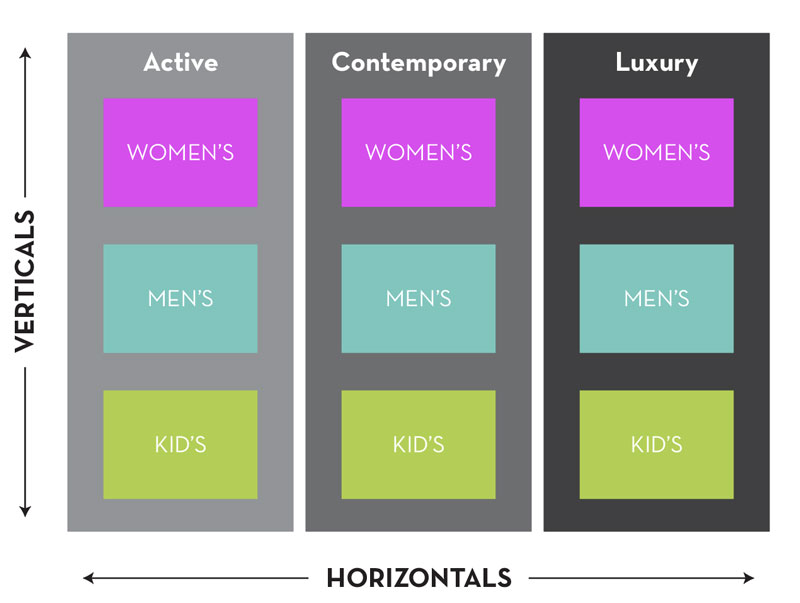
MAYBE you can do everything in one vertical / category (ie activewear for mens/womens/kids). You keep up on the fabric and you keep up on the styling (which arguably can somewhat crossover for ages / genders). That can work.
MAYBE you can do everything in one horizontal / category for a specific market (ie knits vs wovens vs dresses). You keep up in the trends for contemporary women’s, and yes, this may include knits + wovens + dresses.
Disclaimer : Different size fashion brands may want people who are more or less versed. At large brands, your job may be as specific as men’s woven plaid shirts. At small brands, you may do a little bit of everything, men’s and women’s active and outerwear. So take this into consideration when preparing your portfolio.
There are a lot of variables, and again it comes down to:
If the answer is a blaring yes, include it.
If it’s a blaring no, cut it.
If you’re not sure, put it in the maybe pile.
(Like my mom used to always say when trying on clothes, “go with your gut, you know when it’s right.”)
But be critical.
You’re a fashion designer, and this is your job. You understand aesthetics and you have a good eye. Use your senses to really pick the best items that pass the Portfolio Golden Rule .
Your fashion portfolio could vary A LOT, or NOT THAT MUCH depending on how focused you are on your job or freelance hunt.
If you’re looking for women’s activewear, then your digital fashion portfolio should speak to that and you shouldn’t have to make many changes, if any at all.
With a strong representation of activewear on your site or PDF, that should be enough to get an interview.
For your interview, there are tricks you can use to easily update your physical book and really WOW them.
A few swaps of a style or two here and there to make sure your designs speak to that brand is all it takes.
What exactly does that mean? Look through the brand’s styles and pick out a few key prints, details, or aesthetics and make sure there’s a sliver of that in your book.
How do you do that? Since your layouts are assembled with removable tape, swap out one or two styles or CAD pages to show something that speaks to them.
If the brand always uses lace or sequin accents, make sure you’ve got a piece or two that show that.
If they always have super strappy details, include a strappy piece.
If they use a ton of stripes and polka dots, put a stripe or dot in.
You don’t need to redesign the whole collection, just create a new piece or two to make sure something on that page resonates with them.
This may also mean updating a really trendy style that’s now dated. Like swapping a skinny for a wide legged crop, or a racer back for a muscle tee.
Think about it this way:
What are one or two things you could change that would catch their eye and make them think “ah, she gets us! She is up on the trends!”
It really just takes ONE OR TWO things that they’ll see at a glance to speak directly to them. And then BOOM. You are leaps and bounds ahead of the competition.
And I know this may seem like a lot of work…but here’s the thing:
You shouldn’t be applying to 300 jobs or pitching 300 brands and throwing your generic portfolio at every fashion industry opportunity to see what sticks.
You should be thoughtfully choosing the work you want and customizing your fashion portfolio for the opportunities you want the most.
This may mean picking just 10 jobs or pitching 20 brands and sending them something customized.
I promise, you’re better off investing more time per job application or freelance pitch to make sure your resume and portfolio is exactly what they want to see.
Later, we’ll talk more about what you can do if you want to change categories or industries. But at some point, depending on where you are at in your life / career (age, financial status, etc), you may need to choose the path of least resistance.
It is easy to get pigeonholed in fashion, and if you’ve done missy denim for the last 5 years, that’s probably what you’re going to have the best chance of when it comes to getting a job with your portfolio .
When it comes time to changing categories, your relationships and network are going to do better for you than your portfolio .
Pro Tip : I always suggest being super niche and focused. I would pick 1 niche, 2 at the most, and focus your efforts there. It makes your life 10000% easier, and makes it easier for brands to see you as a qualified candidate. This is especially true if you’re active on LinkedIn and trying to network there. It’s really hard to have a dialed in profile if you’re spread too thin. Psst… follow me on LinkedIn , I’m super active!
Chapter 4: What to Do When You’re Stuck on Your Fashion Portfolio
First, you’re not alone. I have been there. We all have been there. It is a hard place to get out of.
You know the 3 simple steps:
- Take what you have
- Thin it down to what sends the right message
- Tie it up with a pretty bow
But you’re overwhelmed and stuck!
Here are my best tips on how to overcome this.
It includes taking small steps and following the simple plan of action.
Avoid the “blank screen paralysis.” Don’t even launch a new document yet.
Instead, start with culling down your work first.
Simplify this by doing these two things:
1: PICK YOUR CATEGORY(IES)
Based on what market(s) you want to go after, you may not have to dig through ALL your old work.
Once, I was going to 2 trade shows back to back and updated the PDF version of my fashion portfolio to share with a few brands I wanted to connect with. One was a golf show, and one was an outdoor show. I easily knew what projects to even consider for each version and immediately knew what projects would speak best to each market. There’s no point in showing golf polos to outerwear brands or vice versa.
Do the same for your work, and only consider the work that would be relevant to the category(ies) you’ve chosen.
2: REDUCE THE TIME SPAN
Most brands don’t care to see what you did 10 or 20 years ago. Picking stuff from the last 5 (or even 2-3) years is sufficient. If they want to see more, they’ll ask. But focus on the last few years. This easily cuts your work down by A LOT.
Now, depending on your category / market, the time span of what’s relevant may vary.
If you’re in a fast trend driven market, pay more attention to showing just the past few collections that reflect that.
If your category is timeless / not so trend driven (a lot of my work has been that), you may show older stuff too.
This is a decision you need to make for yourself.
Again, follow this:
Once you’ve figured that out, you may still have work stored ALL. OVER. THE. PLACE.
If you have files in a kajillion different places (Dropbox, your hard drive, USB sticks, etc), tackle one at a time, and stay organized.
Here’s a great system I used when culling my work together.
First, decide where to keep all the files you’re “considering.” Make a folder called “PORTFOLIO-DATE” with the current date.
Second, go through each batch of files. Try not to get too distracted by the memories or distraught by old designs, and transfer projects into the “PORTFOLIO-DATE” folder.
Don’t be too selective yet. Go with your gut and grab the best projects that have a chance of consideration (based on your chosen category).
If each project has multiple files, stay organized by creating ONE folder inside your “PORTFOLIO-DATE” folder for each project. It will probably look something like this:

In just a few hours, you’ll have all your files in one spot.
And boom. You just cut your work down from 100s of projects to (hopefully) 10 or 20.
Feel better already? Yeah, me too.
Chapter 5: What (and How Much) to Include in Your Fashion Design Portfolio
Whether you’re looking for a job or looking for freelance clients , it’s tough to choose what work to include in your fashion portfolio. In all the research I did for this guide and phone calls I had with designers like you to make sure it was the best possible, the biggest hangup you have is about choosing what work to include.
As fashion designers, we love our work and have a personal attachment to it.
But this is also your job (yes, this applies to freelancers too). We have to know where to cull down, when to drop certain styles, and what options are truly the best.
Now, here are some specific strategies.
Remember, your portfolio is about quality, not quantity.
Include designs that best speak to the brands you are applying to work for or pitching to , making sure they pass the Portfolio Golden Rule .
A good starting point is to include 3-5 projects in your portfolio. If you’re earlier in your career, 2 may be enough. If you’ve been doing this forever and have 6 or 7 that are fantastic and relevant, include more.
2-4 pages per project is usually enough, depending on the size of the project and the size of your (physical) book.
Whatever you do, include the projects (and pages!) because they warrant inclusion.
Not just because you love them!
Generally speaking, your physical book will likely have more work examples than what you send in an email / online application.
Your digital fashion portfolio is only going to show the best of the best for the brand you’re sending it to. (Psst! And remember, as a remote freelancer , you likely don’t need a physical book.)
There’s a good chance they’re receiving hundreds of applications…so if you send 9 projects and only 2 of them really resonate, they’ll get distracted by all the irrelevant clutter before they even realize that 2 of them match their aesthetic.
So just send the 2-3 that speak to them!
In my Freelance Accelerator : from Surviving to Thriving program, I talk about the idea of The Process Portfolio .
Simply put, it means that your portfolio should show the process you go through as a fashion designer.
Brands want to see where your ideas come from and how you work.
Where do you get inspiration?
What makes you tick?
Where does your POV (point of view) come from?
I realize a lot of times in fashion, ideas are copied. And you may do a lot of work that is “inspired” by other brands or what you see on the runway. I have done it for a lot of clients, and you may have too.
So, let’s look at two different and opposite scenarios. If you fall in the middle, adjust accordingly.
SCENARIO ONE: YOU CREATE FROM SCRATCH
You are one of the few (lucky?) fashion designers who actually gets to create from scratch and execute your vision. You collect tears from Architectural Digest and photos from nature and collage them into a beautiful moodboard .
Your sketchbook is full of drawings and magazine tears and doodles that magically turn into finished garments.
It’s the fashion designer’s dream.
And then there’s the rest of us…
SCENARIO TWO: YOU CREATE FROM OTHER CREATIONS
You are one of (most) fashion designers who is given direction (from executives or buyers or sales people) to “make it like this” as they hand you a sample garment or show you a picture. It happens.
All. The. Time.
The four step “design” and development process basically looks like this:
- Receive “inspirational” garment.
- Sketch a flat in Illustrator, maybe adjust a bit, and assemble a tech pack.
- Send tech pack and “inspirational” garment to factory.
- Product gets made.
A lot of my work leans closer to scenario two than one, and for my fashion portfolio, sometimes I’ve worked backwards to fill in the “process” part after finished garments were created.
Because here’s the thing:
Sometimes when we’re up against tight deadlines and don’t need to share our work in big meetings with fancy presentations, we don’t always have time to make beautiful moodboards, or any moodboards at all.
So what do you do for your fashion portfolio?
You create the “process” and ideation after the designs are done.
What would moodboards and inspiration have looked like?
Work backwards. (No one’s going to know, and you’re not the only one to do it. Promise.)
So, what exactly should The Process Portfolio include?
Here is a list, but know that NOT everything is required.
We’ll go into more details about each one next, but this is an overview of what you CAN include:
- Moodboards / tears / collages for color / style / print / trim inspiration
- Rough hand sketches / iterations / design process / sketch book pages
- Fashion illustrations
- Digital (read: Illustrator) fashion flats
- Digital 3D renderings (CLO, Tukatech, Browzwear, etc)
- Technical sketches / closeups / tech pack snippets
- Photos of finished garments (flat lays, mannequins, models, press, etc)
Depending on your strengths, you may have more of one thing (ie hand sketches vs tech sketches) than another. But there’s no perfect science. (Remember, portfolios are an art!)
Make a judgment call using your eye as a fashion designer and the tips in this guide. Whatever you include, it should pass this:
Here are specific details about what The Process Portfolio may include (relevant for freelancing too):
Required: some kind of inspiration, such as moodboards / tears / collages for color / style / print / trim inspiration.
The inspiration part of your fashion portfolio is non-optional, even if it means you have to create it after the fact like we talked about before. At the very least, you should have a collage of inspiration.
This may be just for the product + color, or may include other inspiration / collages for things like trims and prints if that was part of the work as well.
Here are some examples of mood board pages from portfolios that have successfully landed clients:
This mood board layout from KPS Apparel includes garment references from other brands (yes, that’s totally fine!) and draws inspiration from textures and colors found in nature.

Drawing inspiration from landscapes, lifestyle pics, and even garments from other brands, you can showcase your color story and silhouettes, as Vinicius Benetti Gennar did in this moodboard.

Moodboards and inspiration are not one size fits all. Yours may be for any combination of color, silhouette, print, trims, etc, and you may have more than one board.
Whatever your inspiration includes, here’s a great trick you can use to really stand out when they see your fashion portfolio.
Include a few current tears or screenshots from the right competitors in your inspiration!
Yes, inspiration comes from other places. Your moodboards will include non-fashion related photos like nature or architecture too. But for most brands – high fashion perhaps being an exception – competition is part of the inspiration process.
Show them that you’re paying attention to the competition, and you know who it is, by including it in the moodboards.
“How much inspiration should I include?”
Include enough that it shows how your brain processed getting from one idea to the finished product, but not so much that your book feels like just a giant collage of inspiration.
My general rule is to keep your inspiration around 15-25% of the entire project. So, if your project was 4 pages, 1 page of inspo would be sufficient.
For alllll the tips on building out your inspiration, check out my guide on moodboards and guide on trendboards .
OPTIONAL: Rough hand sketches / iterations / design process / sketchbook pages
Not everyone sketches by hand – I don’t! So I don’t include this kind of stuff. My fashion portfolio skips straight from moodboards to fashion flats.
If you do hand sketches or have sketchbook pages with ideas, include them. They can be rough and done in pencil on scrap paper with barely legible callouts. If they show your process, include them.
Here’s a good example of a sketchbook page by Jacqueline Schumann . Through the rough sketches and notes, you can see her thought process and how the design was developed. I also love how she incorporated actual materials to make it more tactile.

If this isn’t you, then skip it and move on.
True Story: In 2017, I chatted with a design director at Anthropologie and she told me they do all their sketches by hand and hardly use Illustrator (#mindblown and #whaaaaatttt?!). So depending on your category or what brands you’re talking to, this may be required.
OPTIONAL: Fashion illustrations
Use some accurate self assessment and only include these if they look really good. I’ve seen a lot of portfolios from fashion designers that include “meh” illustrations. Just because you created it, doesn’t mean it belongs.
Be critical with yourself, and really think about your category to decide if this makes sense. Illustrations are likely relevant for high end brands, but not for the majority.

REQUIRED: Digital (read: Illustrator) fashion flats
Required. REQUIRED. REQUIRED! Pretty much every brand wants to see your CAD work to know you can sketch digitally .
Unless you’re offering freelance services that don’t include fashion flats (like consulting or sourcing or product development), flats are required!
You must show you can create accurate flats with correct details (stitching, trims, where there is fullness, what kind of pleats, etc) that can be read and interpreted by vendors or buyers. These are not beautiful fashion illustrations, but rather should accurately convey the design so it can easily be interpreted.
Too often, I see student sketches that emulate the silhouette, but are missing construction details. Here’s an example of what you do versus don’t want to show:
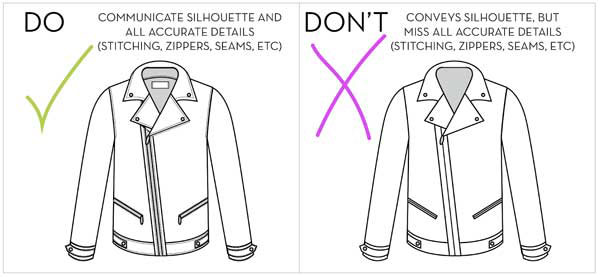
OPTIONAL: Technical sketches / closeups / tech pack snippets
I don’t think you need to have a ton of these, but a couple screenshots or printouts can be really valuable.
However, if you’re offering tech packs as a freelancer, or it’s a part of the job description, then include tech sketches and tech packs.
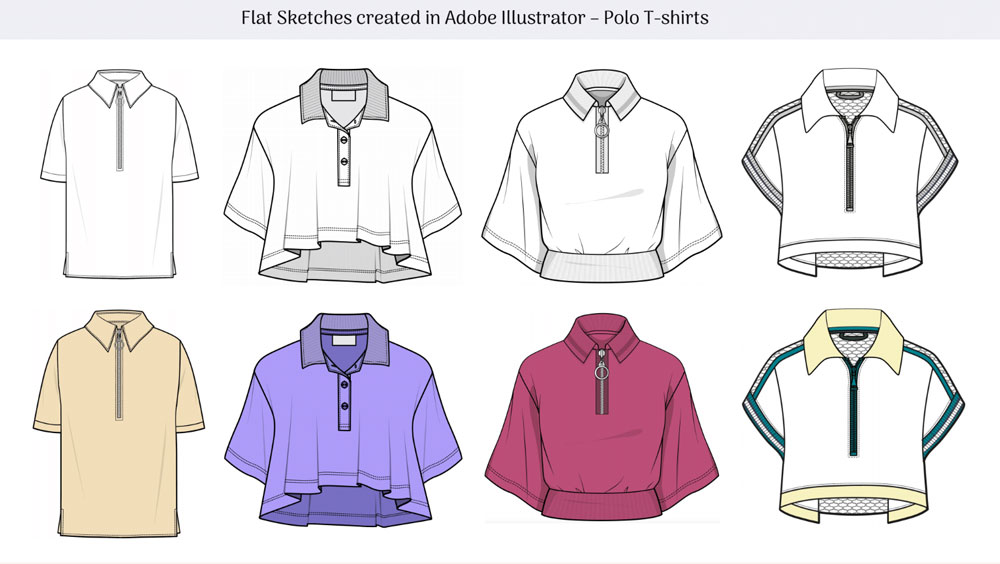
If it’s not listed, do some critical thinking.
Is it a small brand where, as a fashion designer, you’ll be responsible for design, tech packs , and proto / fit comments? If so, then include more of this stuff in your application. Address that point accordingly in your email, showing them that you are paying attention to what the job entails (they’ll appreciate it, I promise, and NO ONE does this!):
“I also included a few tech pack examples with proto comments so you can see how I work on that process. Since you’re a smaller brand and this role requires someone who can wear a lot of hats, I wanted to show you that this is something I can make sure gets done right to ensure accurate samples and keep production on track.”
Pro Tip: In talking with loads of hiring managers – in fashion and beyond – it’s unbelievable the number of applications and emails they receive that are generic copy and paste. If you take the extra time to personalize your communication and just show them you are paying attention, you will already be in the top 10-20% of candidates.
If it’s a large brand and roles are very segmented (i.e. your job may really only be design, and tech designers / product developers will do all the tech stuff), it’s going to be less relevant.
Again, this is a case by case scenario and use your best judgment based on the situation to decide what you include or not.
However, an exception is for entry level / recent grads. Most of the work you’ll do for the first few years is technical / spec work (even if you’re in a “design assistant” position), so it’s more important to include this work when you’re starting out.
If you want to show some tech work, you don’t need to include entire completed tech packs. A few tech / detail sketches and one or two screenshots is usually sufficient.
Here are some examples…

If you know how (and you probably should) to create complete tech packs , it’s a great idea to bring a few examples to an interview (just have them printed out and in a separate folder you can share).
But unless you’re a technical designer (which we’ll talk about later), or you’re pitching tech packs as your freelance service , you don’t need to include full blown tech packs in your fashion portfolio.
OPTIONAL: 3D Renderings (CLO, Tukatech, Browzwear, etc)

Effective 2023, I have added 3D renderings to the list of things to include in your fashion portfolio. As time goes on, I am seeing more and more brands wanting designers, TDs, pattern makers, etc, who have 3D experience. I am also seeing freelancers in my FAST program who have learned 3D making faster progress and getting more clients than designers who haven’t.
I believe we are at the 3D tipping point – you’re not behind yet, but if you don’t learn it, you will be. I’ve even heard of some buyers who won’t look at designs unless there’s a 3D render. WOAH.
Pro Tip: CLO, Tukatech, and Browzwear are some of the more popular 3d software options. If you haven’t learned those quite yet, get started now. In the meantime, I highly suggest checking out NewArc.ai . It’s an AI software that creates a 3D rendering from a black and white flat sketch in just a few seconds. It’s super easy 3D fashion design software for beginners and experienced fashion designers alike!
Here’s an example of a 3D render I made in NewArc.ai . (All that in just 12 seconds!)
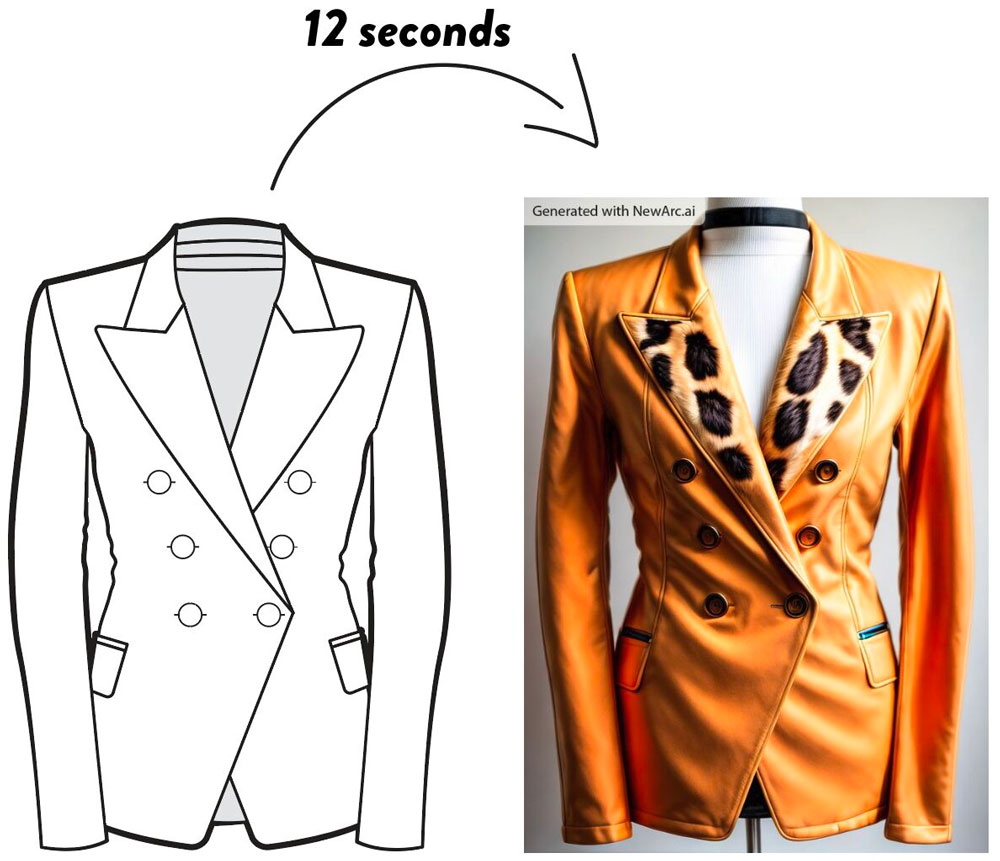
OPTIONAL: Photos of finished garments (flat lays, mannequins, models, press, etc)
These are nice to have but not required. I know it’s not always possible to get your hands on them, or perhaps some of the best designs you did never went to production.
If you can get them, great. If not, don’t panic.
If you do include them, make sure they’re professional.
We all know what DIY photography of a handmade garment looks like. This works for Etsy (where I found these examples), but they do not belong in your portfolio.

If you have photos that look somewhat professional, include them.
But they don’t actually have to be “professional!” You can do wonders with your smartphone and some physical samples or fabric swatches.
Here are some examples of pics I took with my iPhone when I only had a fabric submit (I mocked up a few different colors of the fabric in Photoshop). It’s much better to show this than just the fashion flat.
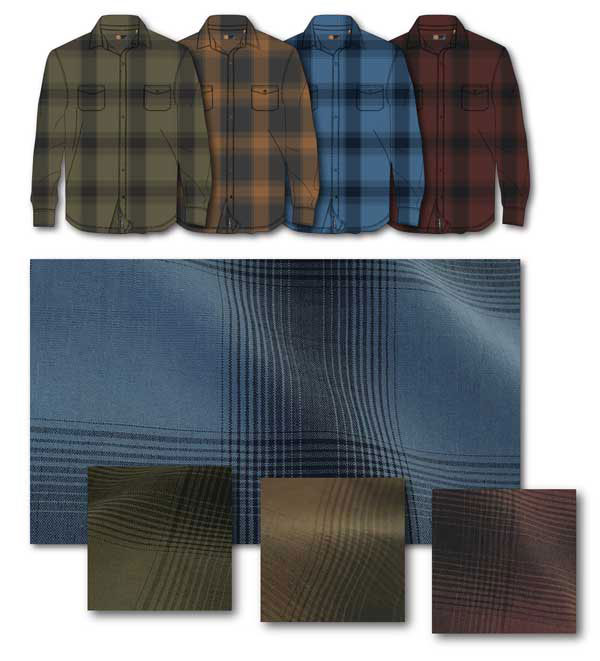
Pro Tip: It’s much easier to DIY closeup photos of a design or fabric than to try and capture the entire garment or use a model. The best solution I’ve come up with over the years is to shoot in natural light (outside) in the shade, put a few soft ripples in the fabric, and shoot at an angle to add some depth of field.
But, if you can’t get finished photos of your work, don’t worry. It’s not mandatory.
Make sure that everything passes this:
If you’re still unsure, here is some specific advice.
What if you’ve designed huge collections of 14-16 pieces and aren’t sure if you need to include every piece?
I tend to choose the statement pieces that really show my design skills, and leave out some of the mainstream essentials that fill out the collection. Here’s another example from my $100k+ freelance career of an entire assortment I designed versus what I showed in my portfolio:
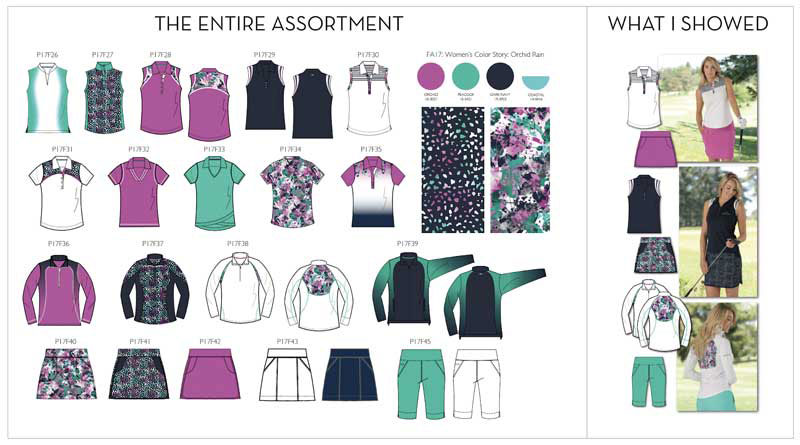
What if you have a plethora of work that includes recent projects for your current employer, various freelance projects over the years, designs from your own “little” fashion brand, or self directed / test projects?
Use your best judgment based on what will resonate with the brands you’re talking to. But there is a balance of showing your aesthetic as a fashion designer and showing that you’ve done designs that have actually been made. It shows you understand the process from start to finish, not just how to sketch beautiful garments.
Choose a happy medium of what best speaks to the brand and what went into production. It will show you have the right eye and understand the lifecycle of design.
Follow the “logical” order that things would happen in real life.
Your portfolio doesn’t have to be a structured order of page 1: inspiration, page 2: flats, etc. There can be a “collage” like layout to your portfolio just like your mood boards.
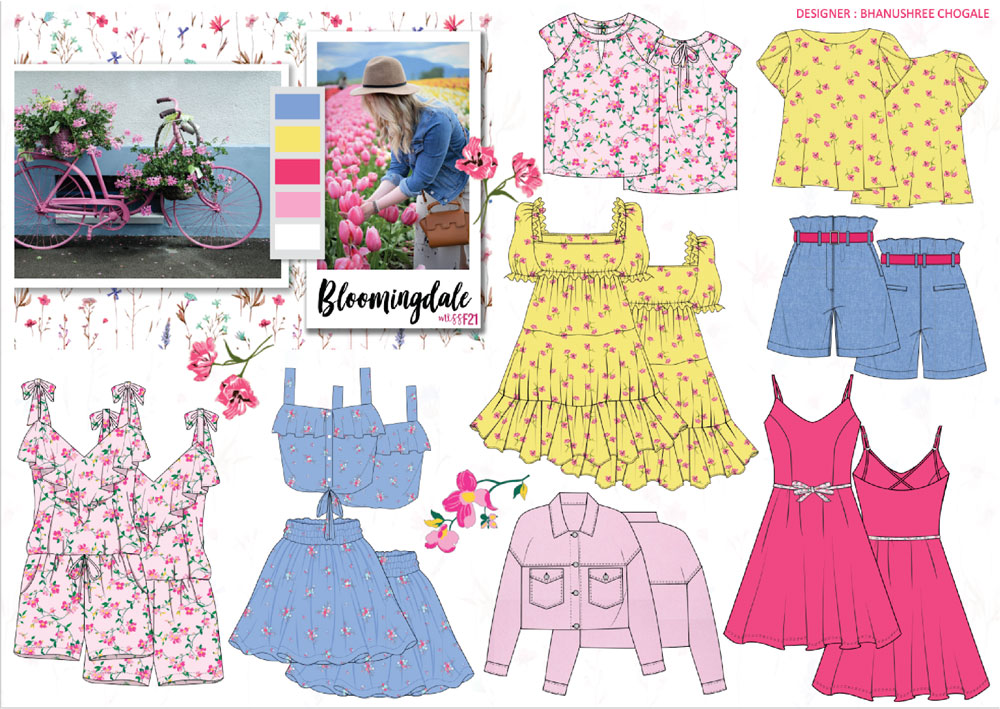
Here’s a quick summary of the order and what you CAN include:
- Make sure you have at least one “page”, but any more than 3 is probably overkill. The only time you’d have up to three is if you need additional pages for things like trims / prints etc as relevant.
- If you have pages from your sketchbook or some hand drawings that show how your ideas come to life, include them. If not? No sweat.
- Only include these if they’re really good. They can be digital or hand, but since most brands don’t require you to do these as part of your job, only include them if they enhance your presentation.
- Since you (most likely) already know that Illustrator proficiency is required for 99% of fashion design jobs, AI flats are non-optional. Make sure they include accurate details, construction, etc. This isn’t just to show you know how to sketch a black and white outlined garment in Illustrator, but that you understand how to communicate the design to a factory / buyers. Stitching, closures, realistic frills (pleats, fullness, ruffles, etc) should be included, and they should be drawn to accurate proportions. This is not a 9-heads sketch, it’s a proportionate sketch that conveys the design.
- Don’t go overboard with this in your fashion portfolio (unless you’re a technical designer – more on that later). If you don’t have these details because you A) did a self directed project that didn’t include tech packs or B) did a freelance project that was for design only or C) for whatever other reason you just don’t have them, that’s OK! Including a few technical sketches can be great to show you know how to do this, but you’re not obligated.
- Effective 2023, I’ve deemed this optional. But the more time that goes on, the more 3D will become a mandatory part of a fashion designer’s portfolio. Start learning CLO, Tukatech, or Browzwear. Use NewArc.ai for quick mockups!
- Nice to have, but not required. If you have samples and can snap a few close up or detail shots like the examples we already looked at, that’s great. If you handmade the garments (for school work, self directed project, or your own fashion brand), only include photos if 1) the finished garments look professional and not handmade and 2) photos look professional. No offense, but no brand wants to see photos of your friend wearing a handmade dress modeling in your backyard. You’re better off leaving these out and just showing moodboards + flats + other collateral.
The Biggest Mistake Fashion Designers Make when Laying Out Their Portfolio
The biggest mistake fashion designers make is showing each part of the process separately.
As we’ve discussed with The Process Portfolio , it’s best to show the evolution of each project or garment from start to finish.
But I’ve seen a lot of designers present their work by “type.” The organization looks something like this, each one represented as its own website page or section of their portfolio:
Design : Photos of finished products (on models, flat lays, etc) Fashion Flats : Illustrator flats Illustration : Fashion illustrations Inspiration : Moodboards Technical : Tech packs
When a brand looks through this, there is a big disconnect. Other than tech packs, which arguably can be shown as their own “thing” (more on that in a sec), brands want to see what moodboards led to what flats led to what finished garment (product photos if available). They want to see the flow of where things started and where they ended up.
They want to see THE PROCESS PORTFOLIO !
But what about the “tech packs shown as their own ‘thing’”? How does that work? Where does that fit into the “process” part of the fashion portfolio?
Tech packs are the one thing I think can stand alone for a few reasons.
- It’s not that important to show this as part of the process. It doesn’t really show what your thought process is as a fashion designer, which is one of the main goals of your portfolio.
- An example tech pack or two shows a brand that you can do tech packs. All they need to see is, at a glance, you know how to do them. It’s not so much about connecting that tech pack to the design, but that you understand and know how to put together this document.
- I don’t suggest showing actual tech packs because I consider them proprietary information. As a result, your tech pack examples may be self-generated and you won’t be able to connect them to a specific design.
Chapter 6: Can You Include Client / Company Work in Your Fashion Portfolio?
Is it ok to include company or client work in your fashion portfolio.
Disclaimer: I am not a lawyer and I cannot give you legal advice. Everything here is my opinion and not to be taken as fact.
Depending on what you have or have not signed, use your judgment as to whether or not you can include company or client work in your portfolio.
If the design is publicly available in the market? Then it’s likely ok to share.
But if you signed an NDA (non-disclosure agreement), then you may not even be able to say you did work for that brand.
If you are unsure, ask. Read any documents you signed and go in prepared:
“I read the NDA I signed and wanted to clear up a few things. Since the work has already gone to market, I wasn’t sure if it was ok if I included it in my portfolio or not. Can you let me know: is it ok if I include the original sketches, flats, and photos of the finished product in my portfolio? It would be a great way for me to show other brands what I am capable of as a designer.”
If you need further clarification, consult a lawyer.
Bottom line: don’t share things that aren’t yet publicly available in the market, and if you signed any documents or are unsure, ask for explicit permission about what you can / cannot share.
What are the ethics around sharing company or client tech packs / graded specs / other technical details in your fashion portfolio?
This is a fuzzy area since this information is never released to the general public. Unlike a design, which ultimately is taken to market and is no longer a secret, tech packs and graded specs can be considered proprietary information.
I lean on the side of caution with this and would only consider these two options:
- Ask for permission. I have never done this, and my bet is that most brands will say no. I imagine most brands won’t even love that you asked in the first place. Which is why I would lean towards option two.
- Create a sample tech pack / graded spec to show you know how to do this. Take it a step further by creating a sample tech pack using a garment from your own closet. This way, you can take photos and do “mockup” proto / construction comments. This shows you know how to use a TP as a tool to communicate changes to the factory (more on this when we get to tech designer portfolios).
First, here’s a quick explanation of what this kind of work is!
Licensed means you are using artwork owned by someone else (ie Disney, or the University of California – licensing is very common for “character” designs and collegiate work). Brands will “license” (pay a fee and perhaps royalties) the artwork.
Private label means buying ready made products from a supplier and putting your/another brand’s labels/hang tags on them. Many retailers do this, like Nordstrom. They’ll buy a bunch of sweaters from a supplier, and just put their “Nordstrom” label in it. If you want to learn more, here’s a great write up on private label from industry expert Kathleen Fasanella (who I also interviewed on my podcast) .
So, when it comes to licensing and private label in your portfolio, there’s a difference between trying to pass something off as your own and the obvious situation where you didn’t create the work.
Most people are going to know that you didn’t create the Mickey Mouse emblem on that kids sweatshirt, and hiring managers will understand it was licensed artwork.
But if you’ve done license work for Coach where you placed their prints on new products, it could be misleading and people may think that you created the prints.
With private label, there’s pretty much no design work done, so I wouldn’t include that. You can talk about how you understand the private label business, but don’t pass designs off as yours unless you designed them.
To clear up any confusion, you can add a note under the project name, like “Licensed Work,” or “Private Label Collection.” Many brands will have a general understanding of what that means.
Or include a disclaimer to explain what you did / didn’t create:
“Designed original garments and placed existing logos / graphics / prints from licensor.”
As a designer, a lot of the work we do will be done as a team. Even if you came up with the original concept, there were probably meetings (with clients, executives, buyers, etc) where revisions were made and the design morphed into something that differs from your original concept.
If you’re working as an assistant or intern, there’s a chance that a lot of the work was done as a team. You may have only been responsible for interpreting hand sketches into Illustrator flats, or gathering initial inspiration from Pinterest while the design director really drove the creative vision.
As much as this can feel like a gray area, it doesn’t have to be. There are simple ways you can present this work in your fashion portfolio with a simple disclaimer.
Depending on your role in the project and what you feel comfortable presenting (accurate self assessment), you may or may not need to include a disclaimer.
If you interpreted someone else’s hand sketches into digital flats and laid out the presentation boards, include this work in your portfolio, disclaimer probably necessary.
If you were given 3 “inspirational” garments and told to “create a few options based on these,” Include the work in your portfolio, disclaimer probably not necessary.
Use your best judgment and do what feels honest and genuine to you.
If you do need to include a disclaimer, here’s my best advice:
For your digital / PDF book (anything someone may see without you there to explain it), be clear about your role. Don’t mislead – so if the project spans multiple pages, include it on all pages. Something simple like this is sufficient:
“As part of a team project, I was responsible for translating hand sketches into digital flats, coloring up and laying out finished line sheets.”
Brands understand, especially when you are starting out as an assistant or intern, that you aren’t going to have designed the entire collection. They’ll be glad to see you played a role and understand the process, but they don’t expect you to have done it all.
Chapter 7: Portfolios for Fashion Design Students and Entry Level Jobs
What expectations do employers have for fashion design students and entry level jobs.
First, let’s get one thing straight. Brands know that you are a recent grad and entry level. They don’t expect you to know everything or have a ton of work experience (check out episode 18 of my podcast with Dior Bediako from Pepper Your Talk for more on this).
They also know what you’re getting (and not) at school. I talked to a few industry experts in NYC who told me they see trends in what skills recent grads do (and don’t) have coming out of FIT / Parson’s.
They know your Illustrator or 3D skills are not as good as they need to be (I have 100+ free tutorials to help you with that).
They know you don’t know everything (no one ever does!).
Which is why, by reading this guide, you’re already 10 steps ahead of all those other grads (great work, you should be proud!). If you can show you know just a little more than them, you already have a leg up.
When it comes to what employers expect to see in your fashion portfolio, make sure you include flats and tech packs that are technically accurate and detailed, and any 3D work .
They want to know that you understand what stitching goes where, what closures the garment has, and show you have knowledge of garment construction .
I know this is boring stuff, but when you’re hired as an entry level employee in the fashion industry, you’re not going to be designing.
You’re going to be doing more of the grunt and production line work like sketching flats, 3D rendering, and creating or updating tech packs. (Which is why it’s important to show this work in your book.)
“Design” is left to more senior staff, so while having a good design eye is great, most likely you’ll need to show that you’re sharp on the technical side of things and understand construction. (And yes, this is true even if you’re going for a “design” job and not a “technical” job.)
What about the senior collection you designed? Should you include that?
I’ll be blunt, and I’ve heard this from other industry professionals.
Your student collection is often the thing brands care the least about.
I say this lightly and with exception, but for most brands and where most opportunities exist, this is reality. Your chance of getting hired at a high fashion brand that’s looking for the next up and coming designer like you to bring fresh life to their line is pretty slim. Not to be a dream crusher, but this is reality.
Here’s the thing: school work is very conceptual, and most brands are very commercial.
You need to evaluate your body of work, and decide whether it should be in there.
If you have an internship (read: real life) project that’s more relevant, you should probably give that precedence and put your senior project second or third (or leave it out altogether if you have “enough” real life examples).
“Enough” is a judgment call. Most brands / hiring managers will take a few seconds to look at your “real” life experience and gloss over your senior project. It’s harsh, but they really just don’t care that much (and it’s not relevant to the job requirements).
Focus less on showing fancy illustrations and photos of your finished garments (often what I see in a lot of student books) and more on showing accurate and detailed Illustrator flats / tech sketches / 3D renderings.
Remember, they’re not hiring you as a fashion illustrator or seamstress, they’re hiring you to sketch flats in AI, do 3D mockups, and work on tech packs.
Remember, brands know you’re a recent grad. Don’t hide it or feel ashamed.
But, there are a few things you can do to make your book look more professional.
One of the biggest red flags that screams “ STUDENT !!!” is showing photos of your hand sewn designs that your classmate modeled in your poorly lit apartment.
I don’t mean to hurt your feelings.
Because honestly, my sewing abilities are not production line quality and I don’t have any friends who are models or photographers either.
Here’s proof (yes, these are – obviously – my handmade designs from way back when I was trying to get started as a designer):

Back around 2005 when these photos were taken, I thought they were fabulous. And I know some of you have photos just like this because I’ve seen them in your portfolios.
Like I did, you probably think yours are fabulous. But they do not belong in your portfolio.
Unless your garments / model / photos of your own work really come off “professional,” leave them out.
The other thing that screams “ STUDENT !!!” is showing tiny projects that attempt to showcase a multitude of skills.
It usually looks something like this:
- 3 fashion flats
- 1 photo of a visual merchandising display
- 2 textile prints
- 1 moodboard
- 2 fashion illustrations
And it comes off like this:
“Here are a bunch of random bits I did for all my different classes.”
None of them have anything to do with each other, and it’s all over the place.
You’re better off showing just 1 or 2 complete, PROCESS PORTFOLIO projects from school work, and any relevant design / flats / tech work / 3D renders you’ve done as part of an internship (or class).
It’s ok if you don’t have much experience, we all start somewhere. But do your best to get at least one internship to gain some real life work opportunities. Even if internship projects are done as a team (as they most likely will be), you can still include the designs in your portfolio as we already discussed.
If you don’t have any experience outside school, then show your school work. Just make sure the sketches from your collections (no matter how conceptual your designs may be) show that you understand how to emulate accurate construction and finish details in Illustrator.
You can also do some more “commercial” self-directed projects that directly speak to the category of jobs or clients you’re reaching out to.
Bottom line, don’t worry about your flats looking immaculate, worry about them looking accurate. And bonus points if you include a few closeups of how closures or pockets are constructed, a few tech pack sample pages to show you know how to spec the fabric and colorways, and some 3D renders.
Chapter 8: Fashion Portfolios for a New Category or Job
As fashion designers, it’s easy to get pigeonholed in one category or role. Maybe you’re stuck in denim and want to do lingerie, or a tech designer and are dying to work on the creative side. In this chapter, we’ll go through a few strategies you can use to create opportunities for yourself to break into that new fashion design job.
How do you put together your fashion portfolio for a “new to you” category or job in the fashion industry?
Fashion designers do get pigeonholed. And many opportunities to design in a new category are because of your network, not because of your portfolio.
The kind of jump you want to make is going to impact your success rate as well. Swim to active is a shorter jump than swim to knit sweaters. Think about the crossover in knowledge about fabrics, construction, trims, finishes, etc.
However, I firmly believe that you can create opportunities for yourself.
It’s going to take work, though!
Your best chances for success are getting yourself into the right network and connecting with the right people to create this opportunity for yourself. From there, you may have to do a test project to show you’re capable.
If you’re not putting yourself out there and networking, the next best is SHOWING brands that you understand their aesthetic and know how to design into their category with self directed projects.
Or you’re finding friends (or people) with startups in this category and doing projects (for free or at a reduced rate to help build your fashion portfolio…more on this later).
Somehow, you are creating collections to show that you can and want to design into this category.
How do you put together a fashion portfolio for a “new to you” role or category?
Create a body of work. Self directed, for a friend’s startup, for your own fashion brand, doesn’t matter.
Just create something .
There are no rules as to how much, but two or so small capsule collections or one larger assortment should be a good starting point.
Now, it’s major disclaimer time.
This will be hard.
Chances of approaching a fashion recruiter to help you find opportunities in new categories? TOUGH. I know because she told me this in a podcast interview .
Chances of landing a job on StyleCareers with no resume experience in the new category and just self directed work? SLIM.
Chances of finding an opportunity in a “new to you” industry through relationships and some good ol’ fashioned networking? YOUR BEST BET.
Your best opportunities will be discovered amongst your network, your contacts, and getting yourself out there. I know those are really vague instructions, but this is what you have to do.
It means talking to people you know in the industry and telling them what you’re working on.
It means going to events / mixers / meetups and having conversations.
We’ll go through some tips on how to have these conversations later, but if you’re really stuck, then start with the book Never Eat Alone . I can give you a few pointers, but this is a guide on your fashion design portfolio, not a guide on networking 🙂
Follow this:
(I told you there’d be themes and repetition in my fashion portfolio advice!)
If the jump between categories is big, focus on showing you know fabrics and construction for that new category. This may mean some extra education on your side to learn this stuff.
One of the biggest barriers a brand may have in hiring someone new to a category is the steep learning curve. They may not have time to train you, so if you can show that you’re up to speed and willing to put in the extra effort (on your own time) to learn, you’ll put them at ease.
Also, you don’t have to know it all. No one ever does! But showing a base understanding and knowledge will give you a huge head start.
If a random opportunity falls into your lap and you’re not prepared with anything to show, there are some “tricks” you can use.
If the opportunity is a last minute call for a full time or temp job, it’s best to go into a meeting with something, even if it’s just a few rough sketches you did the night before to show your ideas.
If it’s for a true, remote freelance opportunity (not a “temp job”) , the scenario may be different.
For example, I’ve gotten freelance work for a running project, even though I didn’t have any running stuff in my portfolio (and I didn’t do any test projects to prove I could do it). Instead, I got the work because of two reasons:
- I was referred by a trusted client
- I put together examples of similar projects (yoga, golf) that were “close enough” in design / fabric / construction
Either way, think about how you can get creative when you present your work.
Let’s say you landed a meeting for women’s active but don’t have any direct experience. How can you combine experience from other projects (or even your life) to show you’re capable?
It may look something like this:
“I don’t have any one project that falls directly into women’s active, but let me explain why I know I can do a great job for you.
1. I’ve done swim before, and am knowledgeable about performance fabrics and construction. The learning curve will be quick and I am willing to put in any extra time outside of my duties to get up to speed.
2. I’ve worked in the industry for X years and understand the entire design process. I know from industry friends that there’s not a huge difference amongst most categories.
3. And last? I am the target market! I’m an active [yogi / runner / whatever you are] and honestly, I live and breathe this stuff. I see it at the gym almost daily, and I’m always up on the trends and what people are wearing.
I’m also fully prepared to do a test project to show you what unique ideas I can bring to the table and show you I understand your brand aesthetic and target market.”
These are ideas. Get creative on how you show you’re capable.
Remember, your network and contacts are the number one resource you have.
In all my years of freelancing, I never landed a new gig in a new category because of my portfolio or self-directed projects. It was all through networks and contacts or because I created and asked for an opportunity.
Golf turned into running, yoga, and high performance outerwear, and even an opportunity to design women’s underwear. I never had any of this work in my fashion portfolio, but good contacts and referrals got my foot in the door.
Chapter 9: Fashion Portfolios for Technical Design or Merchandising Jobs
How do you put a technical design fashion portfolio together (or a merchandiser, pattern maker, etc).
Just because a lot of “non-design” roles aren’t as visually “sexy” as a fashion designer portfolio, it doesn’t mean there aren’t a lot of visual aspects to your job that you can show.
Many of the same rules apply to a “non-designer” or technical fashion portfolio as a designer one with a few adjustments.
Just like a fashion designer, you should still focus on creating THE PROCESS PORTFOLIO .
We’ll go into specific ways you can do this for different roles, but think about where your work starts, your process, and the finished product.
If you can document this in your portfolio, you will effectively communicate your skills to any brand.
Your digital representation of your work (web / PDF) is going to be similar to a designer portfolio:
Show various projects from start to finish in a cohesive way.
Your physical book will most likely be different.
For pattern makers and technical designers, a beautiful large bound fashion portfolio will not be as important. You’re probably going to share paper patterns, spec charts, tech packs marked up with comments, and before and after photos of how garments fit. Since these are much more technical, they can be presented in a much less sophisticated way. That doesn’t mean using a generic 3-ring binder, but it doesn’t have to be as artsy as a designer’s book. Use your judgment and use something you feel good about.
I want to be transparent that none of these are my job (meaning my portfolio doesn’t represent this type of work).
But, I have talked to and interviewed many hiring managers and fashion recruiters, and I have coached hundreds of TDs, PDs, patternmakers and more on how to create a portfolio that stands out.
This advice works!
Here are ways you can create The Process Portfolio no matter your job role.
Patternmaker
For patternmaker work, you may have to create sample / self directed projects to share since a lot of your work may be proprietary. Or, just get creative. Include a cropped screenshot, not the entire pattern. Use your judgment!
Consider if this is what fashion designers follow:
Here’s how we could translate that for patternmakers:
“This [pattern / before + after fit photo / etc] shows the brand that I understand how to create and adjust patterns that make great fitting garments.”
To do this, show your process. This may differ for each of you, but here are some things to think about.
What do your patterns look like when they first start out?
If they’re on pattern paper, take a photo to show how you lay them out. Next, maybe you transfer to digital. What does that look like compared to paper? A juxtaposition of these two formats may show that on paper, you’re getting shapes right, but on digital, you’re looking more at optimal layout for fabric consumption and print directionality.
Next, show a photo of some fittings, either on a dress form or model. Unlike design photos, these don’t have to be professional photos. Regular iPhone snaps are good enough, as you’re just trying to show things you notice in the fit and what adjustments you make to the pattern to correct them. Include photos to show how you pin or mark with chalk.
Next, you probably start making adjustments to the pattern. Show a before and after photo of that pattern piece with a note about what adjustment you made and why (ie: increased curve to fit better around bustline). Pairing your note of those adjustments with the photos of how the product fits before and after is a very powerful way to show your process and that you know how to make a great fitting garment.
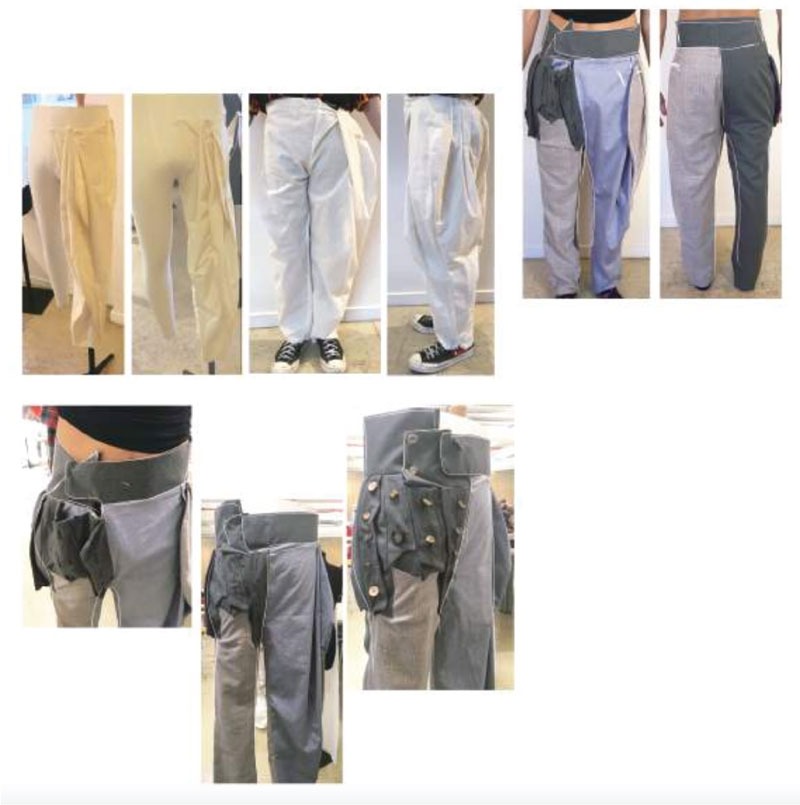
Bonus Points : consider doing some timelapse videos for interest. If you draft by hand or drape in muslin on a mannequin, set up an overhead camera (as simple as a smartphone with a tripod rig and a timelapse app ) to record your drafting in timelapse.
One of my FAST students, Alexandra Agreda, is a very successful freelance patternmaker. She has a timelapse video of drafting a digital pattern in her portfolio. (You can hear how she quadrupled her income and took 20 months off in this Fashion Designers Get Paid podcast episode .)
Technical Design (TD) / Product Development (PD)
For TD / PD work, you may have to create sample / self directed projects to share since a lot of your work may be proprietary.
(Further discussion about this in Chapter 6: The Do’s and Don’ts of Including Client Work in Your Fashion Portfolio.)
Depending on the company, TD/PD may be multiple jobs or just one. To keep things simple, we’re going to discuss on a broad scope and assume it’s one job. If your role is more specific or a little different, adjust accordingly.
Here’s how we could translate that for TD/PD:
“This [tech pack / before + after fit photo / proto comment sheet] shows the brand that I understand how to create and use tech packs that result in accurately produced garments.”
To do this, show your process. This most likely starts with tech sketches and tech packs – and yes, it’s as simple as showing what your tech packs look like!
But beyond that, show how you do proto / fit / construction comments. Instead of just showing a tech pack where it starts, show how it evolves.
What do your comment pages look like from one proto to the next?
How do you track / convey changes to POM’s or tech sketches?
How do you use a tech pack to make sure products get made right?
Including this kind of work in your portfolio immediately lets brands know you have skill and expertise to meet their needs.

Visual Merchandiser
Depending on the brand and what this role really means, there could be variations in your portfolio / work. For this example, we’ll assume visual merchandising to mean creating trade show / in store / window displays.
Consider that this is what designers follow:
Here’s how we can translate that for visual merchandisers:
“This [project / window display / trade show booth] shows the brand that I understand how to creatively merchandise products in a way that connects with customers and entices them to buy.”
To do this, show your process. Of all the “non-design” roles, this one will look most like a designer portfolio.
Do you have moodboards or sketchbooks where you collect ideas? Show these! Do you create mockups in Photoshop or Illustrator? Show this!
Whatever your process is, show where you start and how you end up with the finished trade show / in store / window display.
Bonus Points: consider doing some timelapse videos for interest by setting up a camera (as simple as a smartphone with a tripod rig and a timelapse app ) to record you assembling the displays.
Chapter 10: Job Interviews and Your Fashion Portfolio: Meeting Brand Expectations
What do employers expect to see in your fashion portfolio for job interviews.
I have a great article on how to prepare for a fashion job interview .
But let’s talk about portfolios specifically.
A lot of this is repetitive to what I’ve already written, but during my research and talking to hundreds of fashion designers about their portfolios, this question came up over and over and over.
So, I’ll address it on its own.
The three main things brands expect to see is that you:
- Understand their design aesthetic
- Stay up to date on trends
- Know the design process
Understand their Design Aesthetic
This should be clear by the work in your portfolio. If you’re not sure what their design aesthetic is? You better do some research and figure it out. Go shopping to see what they have in their stores. Look on their site, check out their Instagram feed. Know who the competition is and show you’re paying attention to them. This is your JOB!
If you have projects that are close but not a perfect match, that’s ok. If your work is in the same general category, your digital fashion portfolio is probably enough to get you a job interview.
When you go to the meeting, make a few small edits to your physical book to really show them you’re the right candidate.
Since you assembled your portfolio with repositionable tape, just swap out one or two designs.
Pull something prominent from their design aesthetic and figure out how to incorporate one or two pieces into your portfolio to show that.
Maybe it’s adding lace or studs to a garment, a paisley print or stripe because those are staples for their brand, or something else.
Use your eye as a fashion designer to figure out what would speak directly to them and incorporate it.
Stay Up to Date on Trends
“How do you show brands you’re looking at the same trends they are?”
This should be clear in your work. It may (again) mean swapping out a few key pieces in your book if you haven’t updated it in a while.
If you can catch their attention with just one or two key trend items and make them think:
“Oh, yes, we’re working on [that same key trend item] right now too!”
This is HUGE. They will know you are looking at the same stuff and boom, just like that there’s a connection made.
If you’re not sure how to stay up to date on trends if you’re a freelancer or are in between jobs, I have a massive list of the best free and cheap trend forecasting resources !
Know the Fashion Design Process
Simply put, this comes right back to The Process Portfolio .
Show at least your ideation (moodboards, sketchbook pages, etc) and flat sketches. Beyond that, you can incorporate hand sketches, illustrations, tech sketches, and finished product photos if you have them and as appropriate for the job / brand.
As we already discussed, if the brand is small and your job would entail design + tech work, showing tech packs is probably a great idea. If they’re high fashion and illustration or hand sketches are important, include that.
Remember, your fashion portfolio is not one size fits all. It’s an art, not a science.
Adjust accordingly based on who you’re interviewing with and what the job expectations are. The extra time investment in doing some small customization for each opportunity will increase your chances 10x.
Conceptual versus commercial can depend on the brand. If it’s high fashion and cutting edge runway styles, conceptual will likely be best.
But most brands fall into the commercial category. The work and designs you include should be relevant to them.
Whether or not your designs went into production or stores I don’t think really matters.
Of course it’s important to show some designs that did make it to production (if you have that), but it’s also ok to include great work that didn’t make the cut.
A great design is still a great design. Whether it went into production or not is often secondary.
Chapter 11: Finding Fashion Portfolio Inspiration & Examples
For a bunch of examples in one spot, check out my other post with 13 fashion design portfolio examples (that are landing paid work) .
How do you find the best fashion design portfolio inspiration and examples?
There’s a lot of junk on Google, Pinterest, StylePortfolios.com, Behance, Coroflot, etc.
How do you know if a portfolio is actually good? Did it land a job? Or a paying freelance client?
If you’re poking around on the internet, you likely have no idea whether that fashion portfolio got “results” or not.
So let me do you a HUGE solid.
In case you didn’t know, every single portfolio example in this guide has landed paying clients or fashion jobs. Here are some more fashion portfolio examples, and yes, these too have landed paid work.
These are some snippets of fashion designer Andressa Iop ’s portfolio. I love how you can see the design development process from the inspo, mood board, up to the complete collection line sheet.
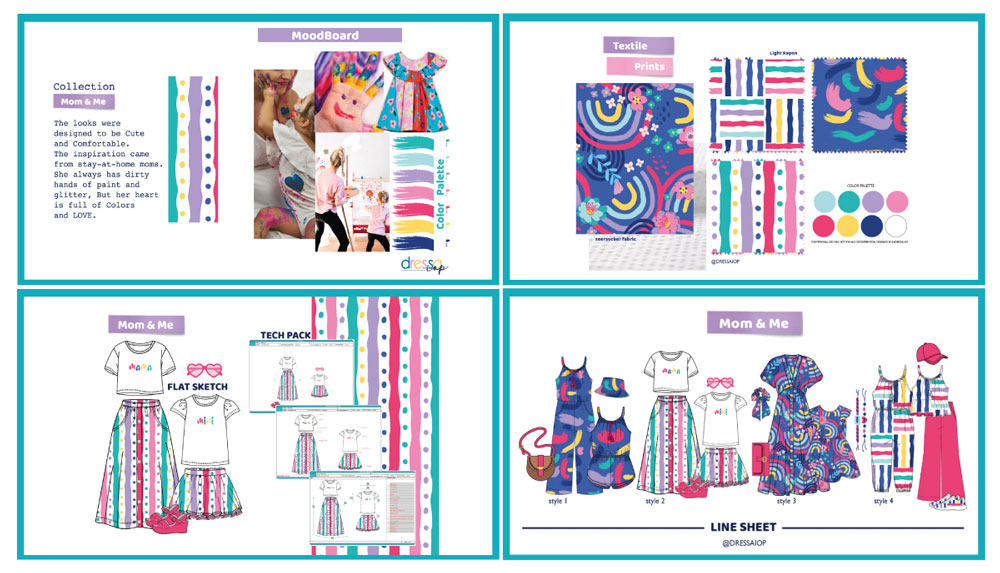
This portfolio by Jacqueline Schumann is a great example of a niche portfolio. Jacqueline is a denim designer with a focus on circular fashion. In her portfolio, you can see samples of her denim design work along with her design philosophy.
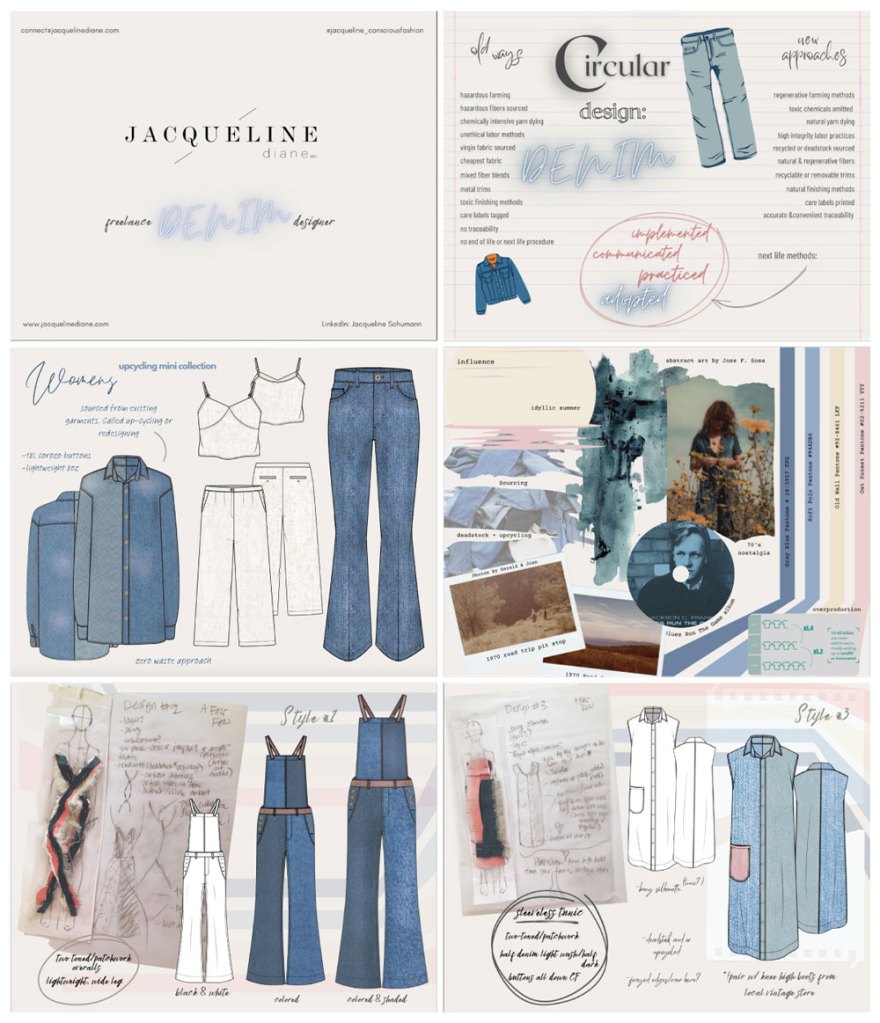
There are more examples throughout this guide, all of which have resulted in paid work (freelance clients or a job) or take an hour or two poke around Pinterest (that’s my top choice for inspo). That’s plenty of time to find 3-5 good examples you can use as inspiration and reference for your own book.
Then get to work.
That moment you feel like your book is looking amazing for the first time in a while…
You’re proud! You’re confident! You feel good about your portfolio!
And then, because you’re addicted to Pinterest and the internet and can’t stop browsing all the fashion portfolio sites, you keep looking at other people’s work.
It’s hard not to compare yourself.
The solution is simple.
STOP looking at other people’s portfolios.
STOP comparing yourself to other fashion designers.
STOP being obsessed with making yours the best in the world and spinning your wheels on it for months, or even years.
Adhere to the one weekend timeline I gave you at the beginning of this guide, get it done, and then STOP.
Let yourself carry the feelings of confidence and pride into your next interview.
It will show, brands can sense this.
Chapter 12: Fashion Portfolio Checklist (and more layout examples that have resulted in PAID work)
Your fashion design portfolio checklist + outline (for job seekers & freelancers ).
Whenever I was updating my portfolio or adding a new project, I would follow this list to ensure I didn’t miss anything. I’ve shared it with my students over the years, and they’ve told me it’s made the process a lot easier.
- Can be as simple as a small collage of 4-8 photos
- A page or two from your sketchbook, not every style needs to be represented
- Flat sketches in color (black and white versions optional), ok to include back / side / close-ups as relevant
- Use software like CLO, Tukatech or Browzwear, or NewArc.ai for quick mockups (literally seconds)
- A few illustrations (hand or digital)
- A few samples of construction callouts, close-ups of details, or artwork placement specs
- Professional looking photos of the entire garment, close-ups of detail, or even fabric swatches (can be on a model, mannequin, flat lay, or press pics)
*As of 2023, I believe 3D renders are optional but are quickly becoming required. Start learning now!
For easy reference, here is a printable PDF version of the checklist !
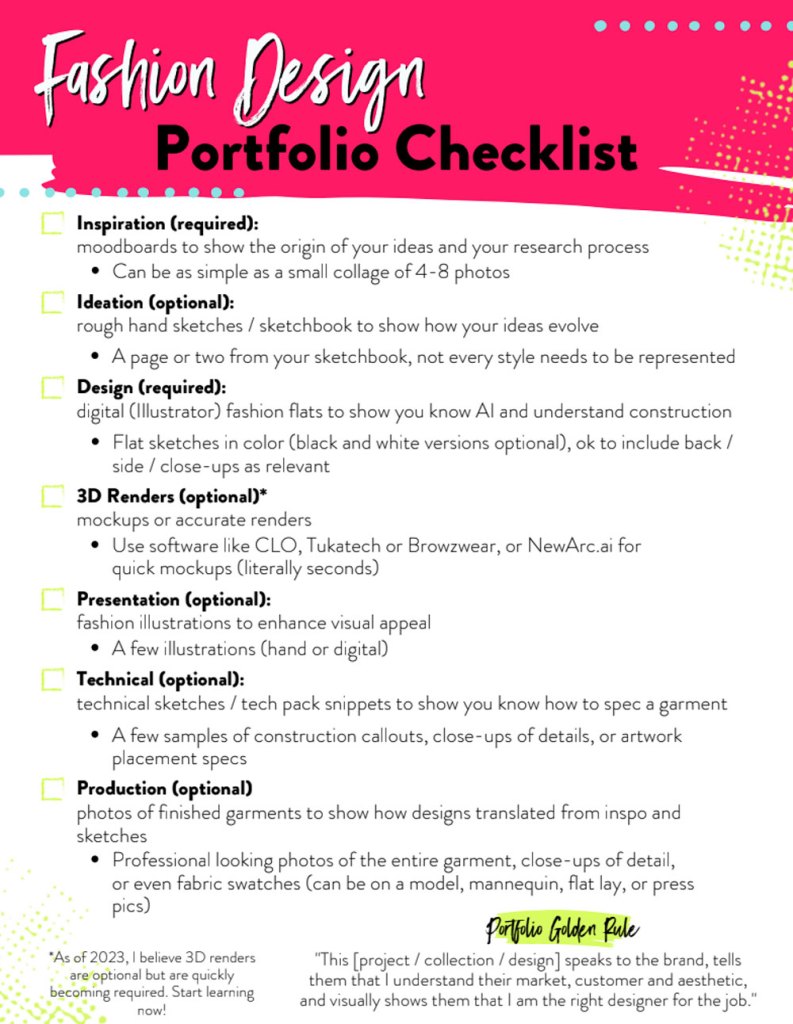
(Read Chapter 5 for a lot more detail on exactly what to include in your fashion portfolio.)
Start gathering relevant documents and files, only choosing what you *genuinely* think should be included.
As always, does it pass this test?
That will always give you your answer.
Once you’ve figured out what to include, you need to lay it all out.
Everyone’s process is different, and it will vary for your digital book vs your physical one.
You may start by “wire-framing” out a few layout options on paper.
You may print everything out and put it together paper doll style.
You may start by pushing artwork around in an Illustrator document (that’s where I’d begin).
Choose the medium that you’re most comfortable with and run with it. Just like how you approach designing a collection, every fashion designer has their own method.
There’s no right or wrong way.
But to give you some layout ideas and inspiration, let’s look at some work from other people.
Fashion Design Portfolio Examples That Have Resulted in PAID Work
Use these for finding jobs or finding freelance clients ..
I love these portfolio pages by Sasha Souki . In just a glance, you can see how she conceptualized her work using some photo inspos, a color palette, and the full collection line-up with rendered flats.
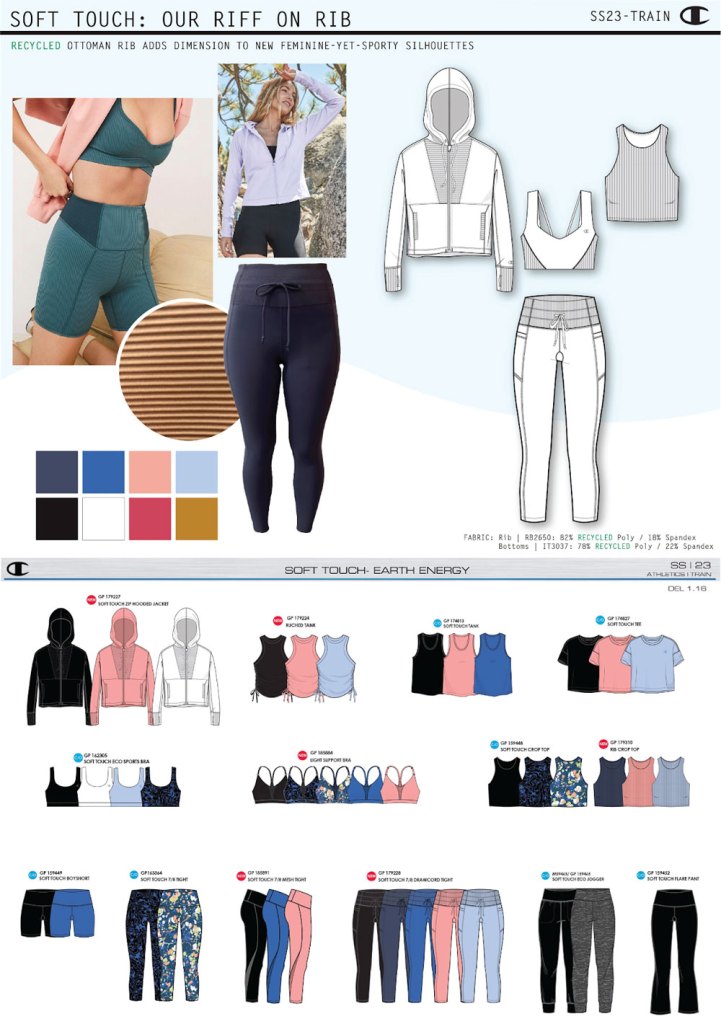
This next one by Gretchen Johnson is a great example of a portfolio showcasing a full concept- to-final-product, complete with a mood board, rough sketches, tech sketches, and final product shoots.
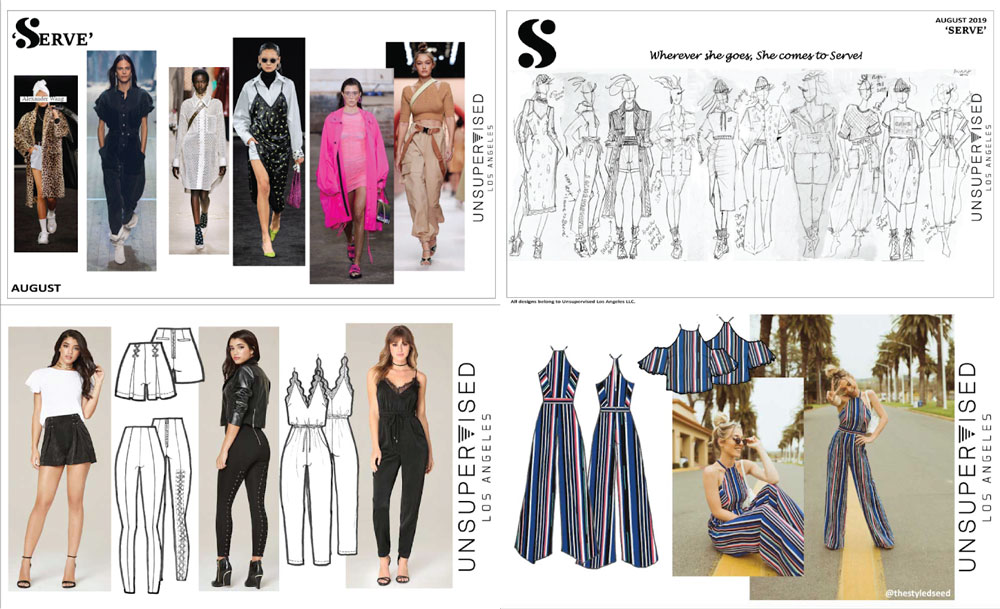
Last, I’ve included an example of my own work from when I was making $100k+ a year as a freelancer . I picked this layout for a few reasons, but the main one being that that is for a single design. I’ve done a lot of freelancing for brands where we develop key items instead of full collections, so I wanted to show how you can share this in your book. Also, if you look closely, you’ll notice a competitor (LuluLemon) product in the inspiration.
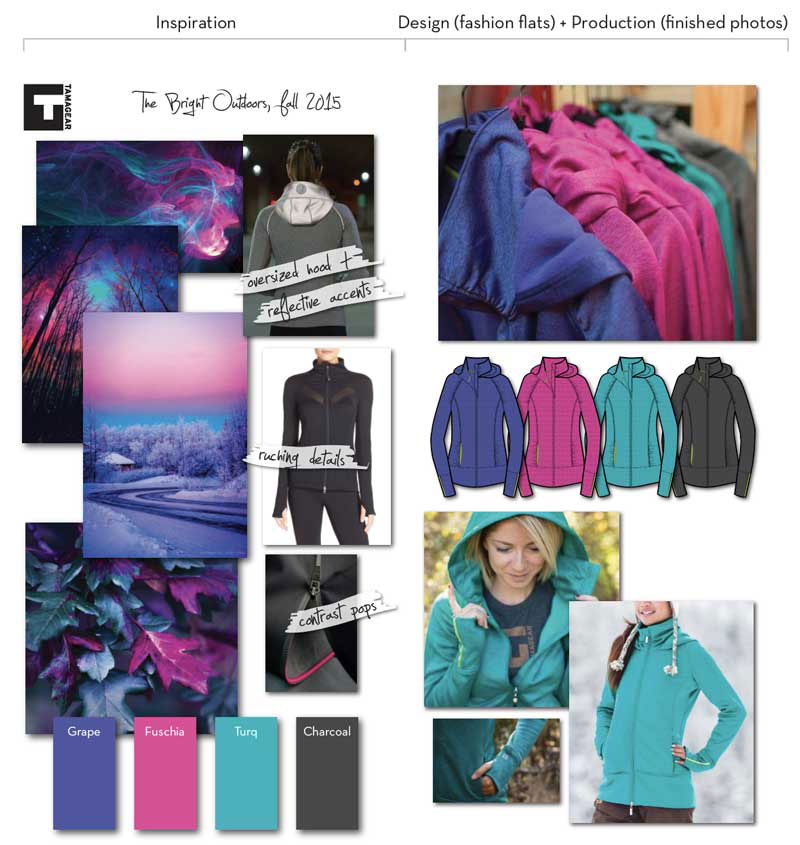
Notice the variation in these layout examples. They don’t all go in an exact “order.” They don’t all include sketchbooks or production photos. Some are more artsy, some are more commercial.
So, use this inspiration, your imagination and design eye, and put something together that will speak to the brands you’re going after, whether you’re applying to jobs or becoming a freelancer .
Remember, ART, not SCIENCE!
Chapter 13: Getting Fashion Portfolio Feedback
If you’re working with a recruiter, that’s a great place to ask for feedback.
Your network is another amazing option.
If you had / have an internship, surely someone there would be happy to help you out.
Otherwise, start finding people and building industry relationships.
See what’s going on in your community (even small cities have people interested in fashion).
See who you can connect with on LinkedIn.
(I am super active on LinkedIn, give me a follow ! And while I don’t do portfolio reviews – except for students inside my FAST program – I share a lot of tips, and there’s a lot to learn from other people there.)
Start engaging, having conversations, and getting to know people.
But the ABSOLUTE best place to get feedback on your fashion portfolio?
From jobs or opportunities you didn’t get.
This is the most valuable feedback you can get.
I listened to an interview about how to be a fashion designer with Susan Lazar , and every time she showed her collection and the buyer didn’t buy, she asked for feedback on what they would like to see.
She implemented the feedback, and kept going back.
Finally, she got a yes.
Because here’s the thing.
When someone tells you “no,” the most valuable lesson you can learn is finding out what you could have done to get a “yes.”
How exactly do you do this? If you can get them on the phone, that’s ideal. That’s not always possible, so email is your next best option.
Here’s a script you can use:
*****************
Dear [NAME],
Thank you so much for the opportunity to [interview / apply] for the [job role] at [brand name]. No hard feelings that it wasn’t the right match.
Would you be able to do me a small favor? I am working really hard to find a new opportunity in [category / market] and it would be really helpful to get some feedback on why it wasn’t a good match.
Can you let me know what was missing from my [resume / portfolio / interview] that would have made me the perfect candidate? No matter what it is, I won’t be offended, but the feedback would help me know what skills I can work on improving.
Thank you so much! [NAME]
You might not hear back.
You might get a generic reply like “you just needed more experience.”
But you might get something really constructive back that lets you know exactly where you have gaps.
Then you know what you need to work on.
And the worst place you can go for feedback on your fashion portfolio?
Your friends and family…unless any of them work in other creative design industries. I’m not saying you can’t share your hard work with them, but they’ll just say, “oh, it looks so good, don’t change a thing!”
Meanwhile, you’re screaming, “no, help me!”
It’s like asking if those jeans make your butt look fat. You really want to know (in the nicest way possible), but they’re just going to tell you you look great.
It’s not just about WHO you ask, it’s about WHAT you ask.
Do you know what happens when you ask a generic question? You get a generic reply!
Here are a few terrible, generic questions you can ask about your fashion portfolio and the replies you can expect. Chances are, you’ve had these exact conversations about your portfolio.
QUESTION: What do you think? REPLY: It looks great! You did an awesome job.
QUESTION: Can you give me your feedback? REPLY: I think it’s really good!
QUESTION: Do you like it? REPLY: It’s perfect! Nice job 🙂
These questions solicit positive replies that don’t do you any good. Instead, here are the three questions you should be asking to get quality, constructive feedback.
- What’s confusing?
- What’s missing?
- What do you want more of?
This will make someone think more critically about what they’re looking at, and it will get you specific feedback about what you need to change.
Preface with a disclaimer like this:
“I really want your honest opinion, I promise you won’t hurt my feelings. I value your input and really want you to be constructive so I can make my portfolio the best possible.”
The answers may not be what you want to hear.
It may feel like they are calling your baby ugly.
But you will get quality feedback that you can use to improve your work instead of fluffy feel good one-liners.
Take time (a day or two, not too much) and decide what to do with it. You don’t have to implement every piece of feedback, but examine all of it critically and with an objective eye.
My guess is that most of the time, you’ll know deep in your gut the feedback is right, especially the negative stuff.
Because sometimes, the feedback we know is true is the hardest to get.
If you really don’t agree and can justify (read: justify, not get defensive) why you shouldn’t take it, then move on.
Whatever you do, graciously thank whoever gave you the feedback, and send them an updated version of your work to show what changes you made.
Do this as a kind gesture to say “ Thanks, I do really value your input and I implemented it. ” It goes a really long way and will make that person much more likely to help you in the future.
I no longer provide individual portfolio reviews (aside from some special opportunities for my Freelance Accelerator students!), but I can’t tell you how many people I’ve given feedback to over the years who I never heard from again. When they came asking again, I had to ignore their requests.
The handful of people who did follow up, I was thrilled to help them again!
Here’s the bottom line about feedback: if you aren’t going to do anything with it, stop wasting everyone’s time by asking for it.
Chapter 14: Updating Your Fashion Portfolio and Being Prepared for Opportunities
How do you make sure your fashion portfolio is updated and you’re prepared for opportunities that fall in your lap.
Why does it always seem like when an opportunity presents itself, you’re never ready.
So, how do you make sure you’re prepared? Well, first, it shouldn’t take you that much time. If you’re perfect for this serendipitous opportunity, you should have some base of fashion portfolio to start with.
Under ideal circumstances (if, after reading this guide, you put your portfolio together using the strategies I’ve given you), you may be able to just make a few quick edits like swapping out some key trend driven items for things that are relevant right now.
An afternoon “should” be all you need.
Second, if you’re actively job hunting, you must be prepared. Spend a weekend and get your book updated.
Now, if it’s really a last minute scramble, pull together what you can. Don’t put the pressure of a “perfect” portfolio on yourself.
If you’re getting opportunities from referrals, you already have a leg up.
Every time I would get a new referral and they wanted to see work, I’d spend an hour or two putting together a custom PDF showing a few relevant examples. I never kept my website up to date with new work, and many other fashion designers I know, both in-house and freelancers, don’t either.
Deliver the examples like this:
“I put together a few quick PDFs with projects I’ve done that are similar to yours. It’s nothing fancy, but I wanted to show you some examples of designs with a similar aesthetic from past clients.”
If it’s an in person meeting, maybe in addition to your “outdated” portfolio, grab a catalog or lookbook from the current season (the one that’s already at market), a few physical samples (brands are always impressed when you bring physical samples to an interview), and your sketchbook.
“I really appreciate you seeing me, I brought my formal portfolio for reference, but didn’t have time to do a full update and that work’s a little dated. To show you some more relevant stuff, I brought my sketchbook, a few samples and the lookbook for the season that just launched.”
Sometimes, all it takes is an explanation.
It’s one thing to be unprepared (don’t do that), but it’s another if you’re not actively searching and the brand needed you to start yesterday. Explain why your fashion portfolio isn’t fully updated, and bring whatever other supporting material you can to show recent work.
I’m including this question not because I think it’s something you should do, but because a lot of you asked it.
When it comes to these random opportunities when you run into someone at an event you think may be a good match for work, you may think the best thing you can do is bust out your phone and start scrolling through photos of your work.
Don’t do it. Please, just don’t.
It’s like sharing your vacation photos. Sorry, but no one really wants to see them.
If it’s a networking event specifically for job hunting (like a job fair), that’s different. Show up with your book (physical or digital on an iPad) and be prepared to show your work.
But casual events like meet and greets or happy hours are not the right time to bust out your portfolio! (Unless you get really deep into a genuine conversation and they ask. Use your gut!)
Here is what you should be prepared for:
At these casual get-togethers, have your 10 second “elevator” pitch dialed into something like this:
“I’m a contemporary menswear designer and work mostly with startup and independent designers.”
“I’ve been a swimwear designer for over a decade and have done work with brands like ABC and XYZ.”
Keep it simple, and if there’s an opportunity, it will present itself.
Here’s an example of how that happened to me during a conversation at an industry event:
Me: “I do contract design and development work for active and lifestyle brands.”
Industry guy: “Oh, really? What kind of brands have you worked with, I may need someone like you.”
I’ll tell you what the rest of this conversation should look like in a minute, but first, notice what these “elevator” pitches have in common…
They’re short and they’re specific (read: niche).
If there is an opportunity, the person you’re talking to will connect with that niche and the conversation should start to flow naturally.
Don’t think about this like networking or trying to find work. Think about it like having like minded conversations with people who are in the same industry as you.
Michele Mavi, a career expert and recruiter at Atrium Staffing, says it well in her article on networking .
Just this simple mindset shift can do wonders and change the tone of the conversation from “ I am looking for work and will take any opportunity ” to “I really love working in fashion and meeting people like you.”
And it’s that second attitude that will come off more natural, more genuine, and will open more doors than you may realize.
So, continue the conversation as organically as possible, and when it comes time to part ways, if you think there may be an opportunity for work or to share your fashion portfolio, close with something soft like this:
“It’s been great chatting, do you mind if I grab your contact info? I’d love to follow up with some ways we might be able to work together in the future.”
It’s best to get their contact info so the control is in your hands to follow up…and then, you do just that. Follow up. Send them a soft pitch about how you can help them out .
Now that you know what to say, let’s talk about a few things you don’t want to say.
If you’ve been guilty of sounding like this, don’t feel bad. We’ve all been there, and we’ve all kicked ourselves later for having said something we shouldn’t have.
Don’t beat yourself up, just be aware and try to do things differently next time.
It surprises me how many people I’ve heard say something like this:
“I’m looking for new opportunities and am pretty much willing to do anything – I have experience in footwear, accessories and handbags.”
Here’s the thing:
No one wants someone with a little experience in everything who’s willing to do anything .
You sound desperate AF.
Instead, here’s how the conversation can go:
You: “I’m a freelance handbag designer and work with brands like ABC and XYZ. What about you?”
(Remember, this is a two way conversation. Make sure to ask about them too, it’s surprising how many people don’t do it, and it can go a long way. Plus, asking and learning about the other person will help you discover opportunities you may miss if you talk about yourself the whole time.)
Them: “I work at AAA footwear brand doing women’s design.”
You: “Oh, what a small world, I’ve actually done a lot of women’s footwear in my past.”
Them: “Oh really? You know, we’re always looking for freelancers who have footwear experience.”
BOOM. There is your conversation and your opportunity.
If you start out with “ I’m looking for new opportunities and am pretty much willing to do anything – I have experience in footwear, accessories and handbags ,” the person has glazed over before you’ve even gotten to what categories you can do.
Seriously, watch interactions like these with other people. One guy starts rambling about how he’s looking for any kind of work he can get and all the lengthy experience he has, and the other person totally checks out.
Keep your line simple and clear. If there is an opportunity, listen for clues and guide the conversation.
Like your fashion portfolio, this is an art, not a science. Practice as much as you can, and you’ll get better with time.
Chapter 15: Protect Your Fashion Design Portfolio
As fashion designers, we become really protective of our work. And we often wonder, how do we protect designs we do for test projects, or things we share in our online fashion portfolio? In this chapter, we’ll go through what your options are and the best way to do this.
Unfortunately, you may not like all my answers, but I’ll do my best to give you solid advice.
Test projects are the evil beast that reside in our industry. I understand their importance, and am even a proponent of them. However, I 100000% believe you should get paid .
You may be able to avoid sending work in email and say you’d rather present it in person. If you get kickback from the brand and they want you to send it digitally, that’s a call you have to make.
Your choices:
- If they won’t agree to seeing the designs in person, this could be your first red flag. You could end the conversation here knowing that if this is a brand that’s going to steal your ideas, it may not be a brand you want to work for. They could also just be really busy and want to review your work before wasting anyone’s time. Use your gut.
- If you do send it digitally, there is always a risk, and there’s not much you can do about it. Watermarks won’t do anything, and you can’t copyright designs. So even if you put your logo on the corner and note that it was designed for a test project, and only send a jpg, as far as I know, you don’t have any recourse (again, I am not a lawyer).
As much as I’d like to help change the way our industry works in regards to test projects, I’m just not sure it will happen.
When I wrote the Ultimate Guide to Being a Freelance Fashion Designer , I talked a lot about putting our foot down to “freelance” gigs that are really “temp jobs” without benefits.
But test projects are another beast.
First, they happen in other industries, like programming. My husband is a developer and always has to do test projects for new opportunities.
Second,I understand the point. I do a lot of hiring, and I always require a mock or test project (but I always pay!).
It’s a big time and cost investment to hire a new person (employee or freelance), and it’s fair to do due diligence. Yes, your portfolio shows your designs, but it’s hard to vet your work ethic without doing a small project.
As much as I wish you could all put your foot down to this, I think it can do more harm than good.
The industry is competitive, and at some point, you have to prove you are the right candidate.
But, there is a fine line between a test project and abuse.
Depending on how badly you want an opportunity vs how ridiculous you think the request is, make a judgment call.
A 3-4 piece capsule collection and a color palette feels reasonable.
A 12-14 piece assortment with 3 prints and multiple colorways feels unreasonable.
Use your gut as to what you think is fair vs what seems abusive.
There’s not much you can do.
You have to show your work, and unfortunately, anyone can rip it off. There’s nothing watermarks or self imposed copyrights will do to protect you.
So instead of worrying about how you can protect old work, invest your energy in creating new work.
Now, I know for textile designers who often sell prints they’ve already created, this is a whole different scenario. If that is you, take the advice Michelle Fifis shared in episode 8 of my podcast and instead of showing finished work, share more of your behind the scenes process.
Chapter 16: Fashion Portfolio Motivation: Competition and Staying Relevant
Don’t be too hard on yourself.
Focus on when you do have energy and inspiration and stop trying to force things. Some days are harder than others. If it’s not working, come back to it tomorrow.
There are a lot of different strategies out there to help you accomplish your goals. It may be deadlines, it may be asking someone else to hold you accountable.
The reality is, if you’re procrastinating a lot, it’s likely something deeper. Something emotional that is keeping you stuck.
Do some serious self reflection as to why you’re not making progress and work on the root of it.
It’s hard to compete with these people, and there’s even a time and place that I recommend fashion designers do this.
There are brands that want a less expensive option and are willing to invest time in training someone. There are also brands that want to pay for the right expertise.
I think at some point, this is just how it is, in many industries.
A lot of us started out here. I did. My first job paid just $22k/year. I got my experience, and I moved my way up.
I’ve also worked with a lot of brands who are happy to pay a fair rate for someone more experienced who can work independently and get the job done without a lot of handholding.
There are opportunities out there for everyone at every pay scale, so just let this one go.
The people who work for low rates to gain experience are not your competition. The brands that want to hire people like that will not be your best jobs.
So instead, focus on finding brands that care about hiring the talent with the right skills. They are out there.
We’ve already discussed a ton of ways you can do this. Here’s a quick recap:
- Follow the Portfolio Golden Rule . A niche book will get you so much further than something that showcases a variety of projects. Here it is, once more for good measure:
“This [project / collection / design] speaks to the brand, tells them that I understand their market, customer and aesthetic, and visually shows them that I am the right designer for the job.”
- Spend the extra time to customize your email / application. Show that you’re paying attention and address the points in the job description. No one wants a copy / paste generic email.
- Do your research! Be familiar with the brand, and know the competition. This doesn’t mean “ oh yeah, I remember going to DressBarn with my mom when I was a kid. ” This means going to DressBarn before your meeting and checking out their assortment online. It also means checking out the competition, which might require going to Chico’s and Kohl’s to see what they’re showing too.
- Be proactive and come to a meeting prepared with a test project. It’s not dissimilar to the Briefcase Technique , coined by one of my mentors, Ramit Sethi. Talk about standing out from the competition! You will blow them out of the water.
- Bring your portfolio to the interview! Whether it’s on an iPad or in a physical book, don’t show up empty handed assuming they already looked at your work online. It seems obvious to me, but I guess this is something fashion school doesn’t tell you, because it’s a mistake a lot of entry level fashion designers make. Sorry, it’s not your fault.
- Spellcheck! Ok, arguably, we didn’t discuss this yet. But DO NOT have spelling errors in your portfolio, on your website, or in your correspondence. Details are important in fashion, and they’re also important in how you present yourself.
But beyond that, there’s one simple thing you can do that most people don’t.
Be excited. Be enthusiastic. Show that you want this opportunity.
I talked to multiple hiring managers and fashion recruiters while writing this guide, and they said things like this:
“If one of these candidates would show up on time, prepared [do your research], have a few questions for me, and show some enthusiasm about the opportunity, I’d hire them on the spot.”
I actually couldn’t believe how many people told me designers would show up 20 minutes late. Even worse, if the manager did reschedule, they’d show up 30 minutes late next time and still expect to get the meeting. NO WAY. If you can’t be on time for an interview, you are DONE.
When it comes to asking questions, don’t worry about being the best. Just go in with some curiosity to show your interest. Brainstorm beforehand, or don’t be afraid to turn their questions around on them. “I’d love to know, what’s the biggest challenge your team faces during the design process? ” This will give you great insights into how you can help them solve those problems. (Psst, I have a whole article on how to prepare for a fashion interview !)
It seems like nowadays, a lot of candidates are showing up and just looking for a paycheck.
You may be saying, “Heidi! That’s not me, no way!”
I know, I know. Maybe your nerves get the better of you and you freeze. I understand, these situations can be stressful.
And I know, that’s easier said than done.
Because I have been there.
Back in 2004, I totally bombed an interview that I really wanted.
The job was a graphic design position at (now defunct) Sports Authority. I way over hyped myself for the opportunity, and dreamed, “this could be my foot in the door to break into the fashion industry.”
The opportunity had fallen into my lap when a recruiter called and asked if I could interview in 2 days.
Just like you, I scrambled in major panic mode to get my fashion portfolio together.
I thought I was prepared. I felt proud. I felt confident.
But in hindsight, I think it was my desperation (and lack of interview practice) that killed it for me.
It was during a time when I hated life and was working as a receptionist. I was dying for anything better.
And as soon as I walked into that giant office building for what felt like the biggest opportunity of my life, panic and overwhelm took over.
Things got fuzzy. Literally.
My vision blurred and my ears filled up with a high pitch ringing.
The last real detail I remember is sitting down at the oversized dark brown conference table across from 3 really rigid looking “adults” (at 22, I still felt like a child) wearing suits.
And I just shut down.
To this day, it is still one of the most intense moments in my career where I just crumbled. I had a total out of body experience, and I have no idea what I even said in the interview.
All I know is that my chest and face burned bright red, and I fumbled a lot.
I walked out of that interview and barely made it to my silver Nissan Altima in the sprawling parking lot before I had a full melt down in the driver’s seat of my car. I called my mom from my flip phone and just bawled. Snot faced, teary eyed, can barely speak bawled.
(Thanks mom for talking me off the ledge and telling me it would all be okay. You are right, these things happen for a reason.)
I know how much pressure interviews are. If you haven’t yet, you’ll bomb one eventually.
You just have to get it out of your system. It’s like a rite of passage or something.
Apply for a few “tester” gigs that you don’t really want just to practice your interview skills.
And then, take a big breath for the opportunity you really want, straighten up your backbone, and walk in confidently.
Do your research, and be prepared (and early).
Show up, and just be yourself.
Show them why you’re a good fit and how you can help with design (or patternmaking / TD / PD).
And for pete’s sake, be enthusiastic!
(For more insanely brilliant and actionable advice on preparing for an interview, this is one of the best articles out there .)
The first important thing you have to do is explain why you’ve been out of the game for a while. If there’s a big gap in your resume, don’t panic, just explain it.
Maybe you took some time off to raise a family. Maybe you had a hard time finding work for 6 months and worked retail in the interim.
Whatever it is, explain the gap.
All it takes is one sentence, as Shellie Simpson, Talent Director for the fashion division of recruiters at Atrium Staffing shares in episode 53 of my podcast.
Now, how do you show you’re still relevant? If you didn’t already guess, you do this by adhering to…
Because as a fashion designer, it’s your job to stay relevant. And even if you haven’t been for the last year (or three), you need to show that you are relevant now.
Do your trend research.
Get back up to speed in your category.
And then, show that in your book.
Depending on how long you’ve been out of the game, that may mean doing a self directed project. That may mean just making a few updates to your book.
Look at your fashion portfolio with the same eye you use to do your fashion design work: what needs to be added / adjusted / taken away to make this just right for the end consumer (the brands you want to work for)?
Depending on how badly you want the opportunity, it may mean doing a capsule collection or showing them a few ideas before they ask you to. (This is actually a great strategy no matter what!)
As Bjorn shares in episode 1 of my podcast, you’re going to be asked to do a test project anyway, so if you really want to get your foot in the door and ahead of the competition, be proactive and go in with one already done.
If you want some serious inspiration, I highly recommend these other 2 episodes from my podcast.
Nicola Osborne took a 12-year career break to raise her family, and then landed a job back in fashion.
Kate Knight took a decade long career break after burning out , and broke back in as a freelance fashion designer.
Anything is possible. It takes work, but you can get there.
A closing note: Why your fashion portfolio will never be perfect (or completely done)
A guy named Nathan Chan of Foundr says:
“If you’re not embarrassed by the first version of your product, you’ve launched too late.”
It rings true for pretty much everything I’ve done in my fashion design career and life.
Remember my designs I shared earlier? Embarrassing. Here are a few more:
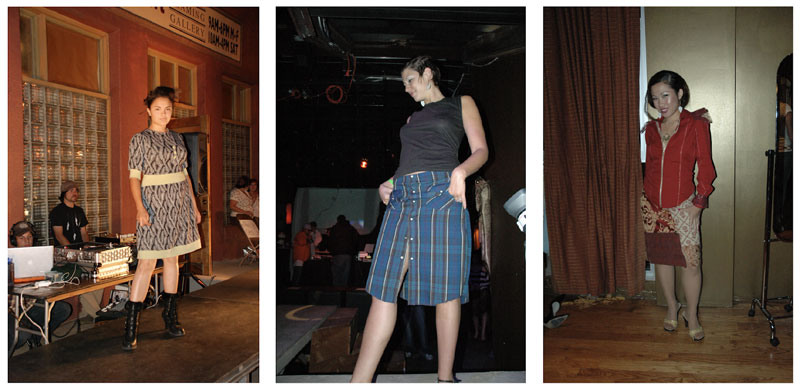
But with time, I got better. Here were some of my designs a few short years later in 2007ish (to this day, I am still proud of this collection):
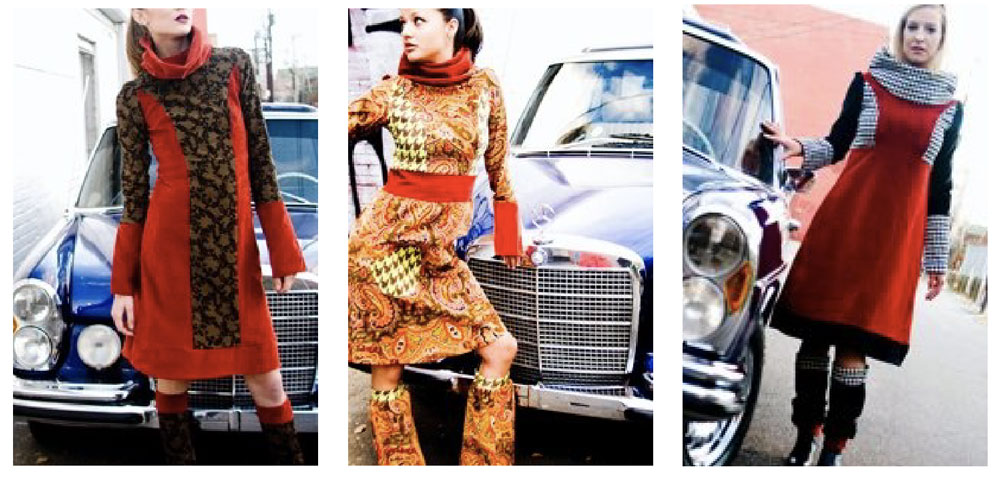
My first YouTube video ? Embarrassing.

But with time, they got better. More professional. Like this .

My first fashion portfolio? Embarrassing.
I did, contrary to my advice in this guide now that I’ve learned a thing or two, include photos of friends modeling my handmade clothes. Some of the ones you’ve seen in this guide were included in my portfolio.
I did not have any real life experience. I did not show that I understood construction or how to create accurate flat sketches. It did NOT pass the Portfolio Golden Rule .
But somehow, the photos of my handmade clothes combined with my Illustrator skills combined with the enthusiasm, ambition and drive they saw in me, I got my first dream job working in fashion.
Some may say it was luck. And for a long time, I thought that’s all it was. Now, I won’t deny that luck plays a role in everything.
But as time went on, as I learned more lessons about life, I realized many things.
As much it’s about being an amazing fashion designer…
As much pressure as we put on ourselves to have the best book…
As much as it feels like your fashion portfolio is the difference between getting the job or not getting the job…
Enthusiasm and ambition and drive go a long way.
Show that you are the kind of designer who does an exceptional job…simply because you just care that much.
Remember how we talked about wanting this so badly it’s an extension of your being? This is the ambition they need you to have.
Show them you are the kind of designer who sees what needs to be done and then does it…without being asked.
Remember how we talked about doing a test project before your interview? This is the proactive attitude they care about.
Show them that you are the kind of designer who takes action…instead of just thinking about doing something.
Remember Jasmine’s story? These are the kinds of risks they want to see you taking.
Because that, combined with your “not perfect but good enough” portfolio, is what will get you ahead in this insanely cutthroat industry.
And if you don’t look back in a year or two and feel embarrassed about the first (or even just the previous) version of your book?
Then you, my friend, launched your portfolio too late.
P.S. If you enjoyed this guide, consider sharing it with a friend. I’m sure they’d appreciate it, and I would too 🙂
Where are you in your fashion career?
Total beginner....
You need experience, but feel like brands aren’t willing to take a chance on you.
In a rut...
You feel like everyone else is getting ahead in fashion and you’re being left behind.
Craving more...
You’re sick of your career in the hands of toxic corporate bosses.
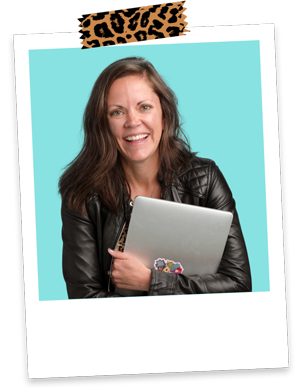
Hi, I'm Heidi
Copyright Successful Fashion Designer © 2024
Disclosure and Terms & Conditions
Free resources handpicked for you!
I need Fashion Manufacturing Help
I need Fashion Design Help
I need Fashion Career Help
12 + 1 Fashion Portfolio Examples & How to Build Yours
Browse through some outstanding examples and learn how to build your own striking portfolio with flying colors!
- August 9, 2022
If fashion is your passion, then you are at the right place! We selected some exceptional fashion portfolio examples so you can draw inspiration and learn how to create your own portfolio.
If you have already read our article on how to build a fashion portfolio, you are probably wondering how others succeeded. Let's take a look!

Get early access to our fashion portfolio website builder and become a portfolio expert in no time!
Fashion portfolio examples
Here are the 12 most inspiring fashion portfolio examples.
1. Paolo Belleri

Paolo's fashion portfolio
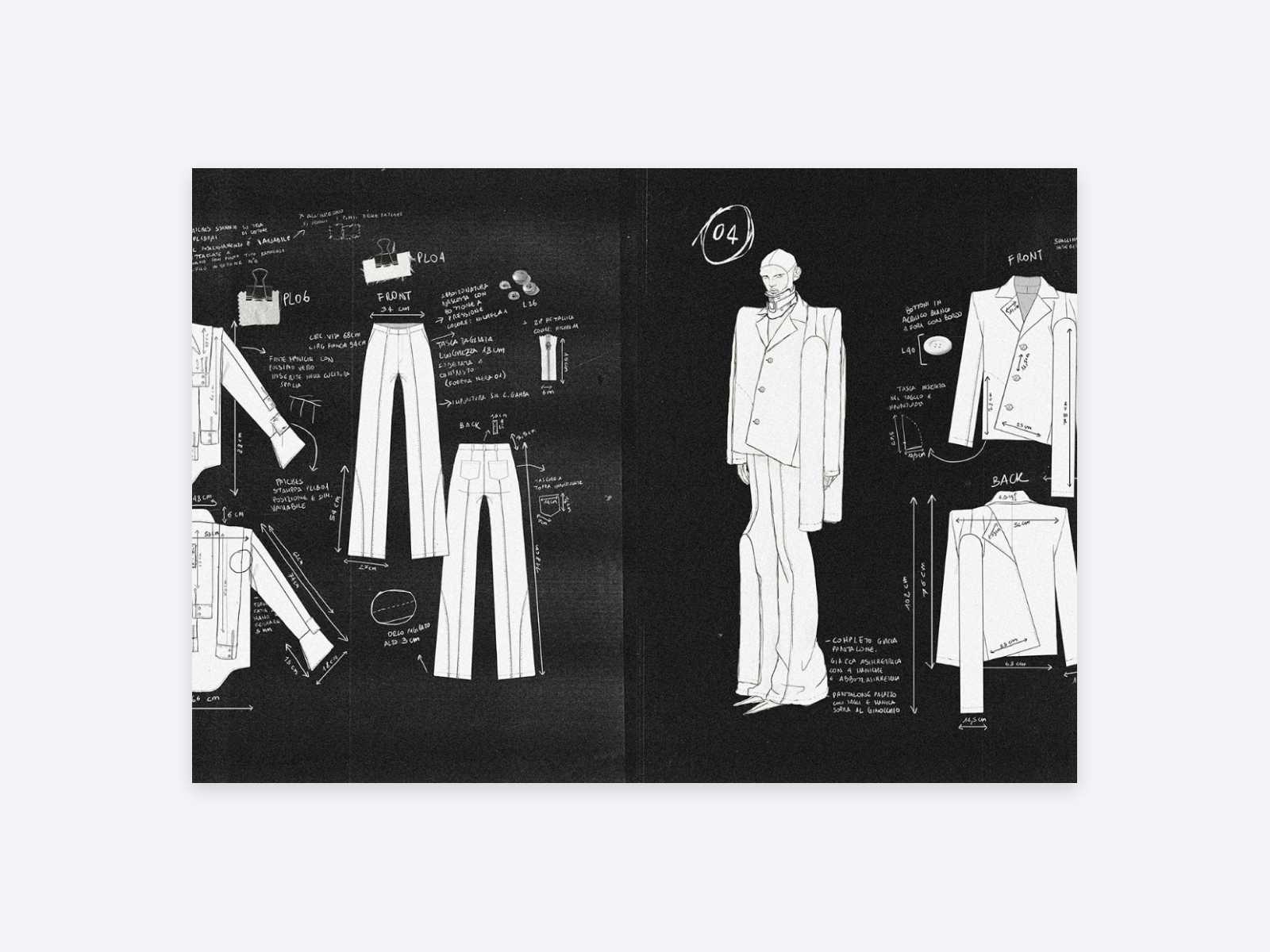
What can you learn from Paolo’s portfolio?
- A strong front page Paolo’s portfolio is about daring to be different and making unusual choices. His offbeat front page and the black and white color choice bring a rock'n'roll vibe that we love.
- Outstanding fashion sketches Paolo chooses a unique approach with his fashion sketches. The pitch black background and white chalk-like sketches complement each other. Interested in illustration? Learn how to make an illustrator portfolio .
- Images that are matching the design The image selection fits perfectly with the mood of the design and the portfolio itself. You can feel the 80s and an edgy vibe coming through Paolo’s fashion portfolio.
2. Monika Misiak

Monika Misiak's fashion portfolio
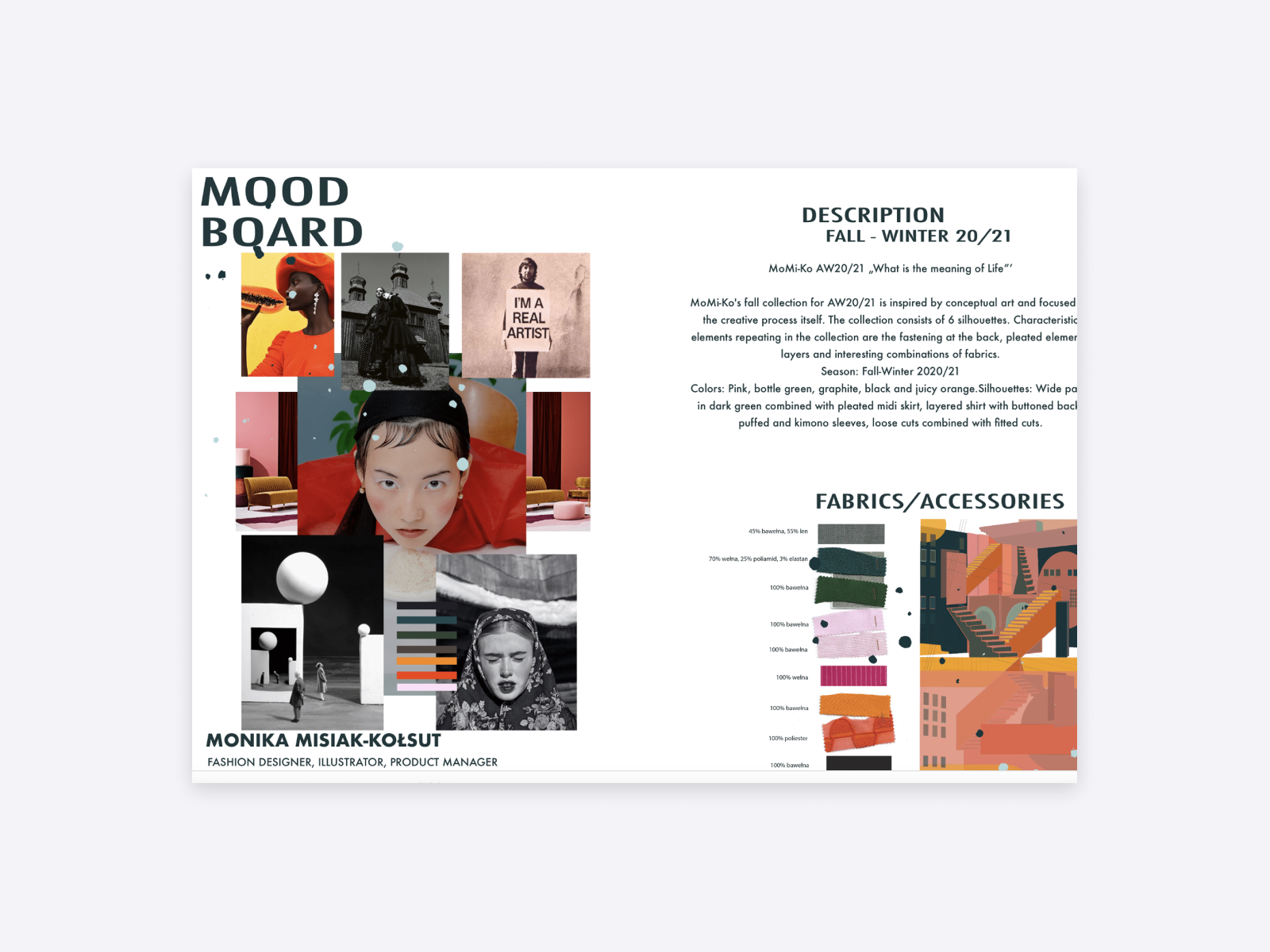
Monika's fashion portfolio
What can you learn from Monika’s fashion portfolio example?
- A detailed bio Monika starts her portfolio with a precise bio, from which you can learn a bit more about her journey as a fashion designer and her accomplishments
- Mood board with a context Monika’s mood board includes a bit of background information on the colors and the silhouettes she's using in her collection.
- Fashion sketches and photos Next to her fashion sketches, you can find photos that match the mood of the drawings. She uses restrained colors, which radiate discreet femininity.
3. Tannistha Manna
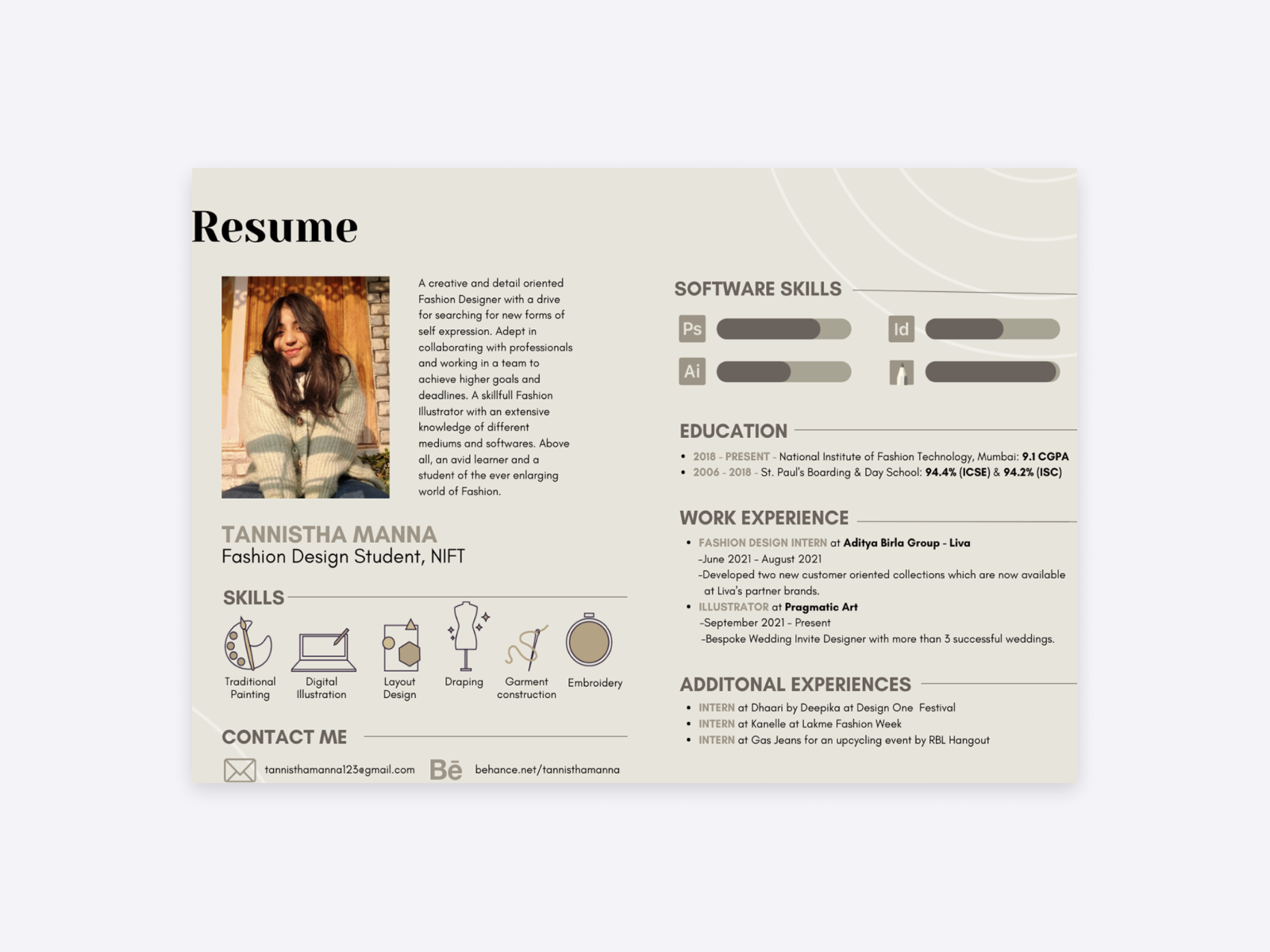
Tannistha Manna's fashion portfolio
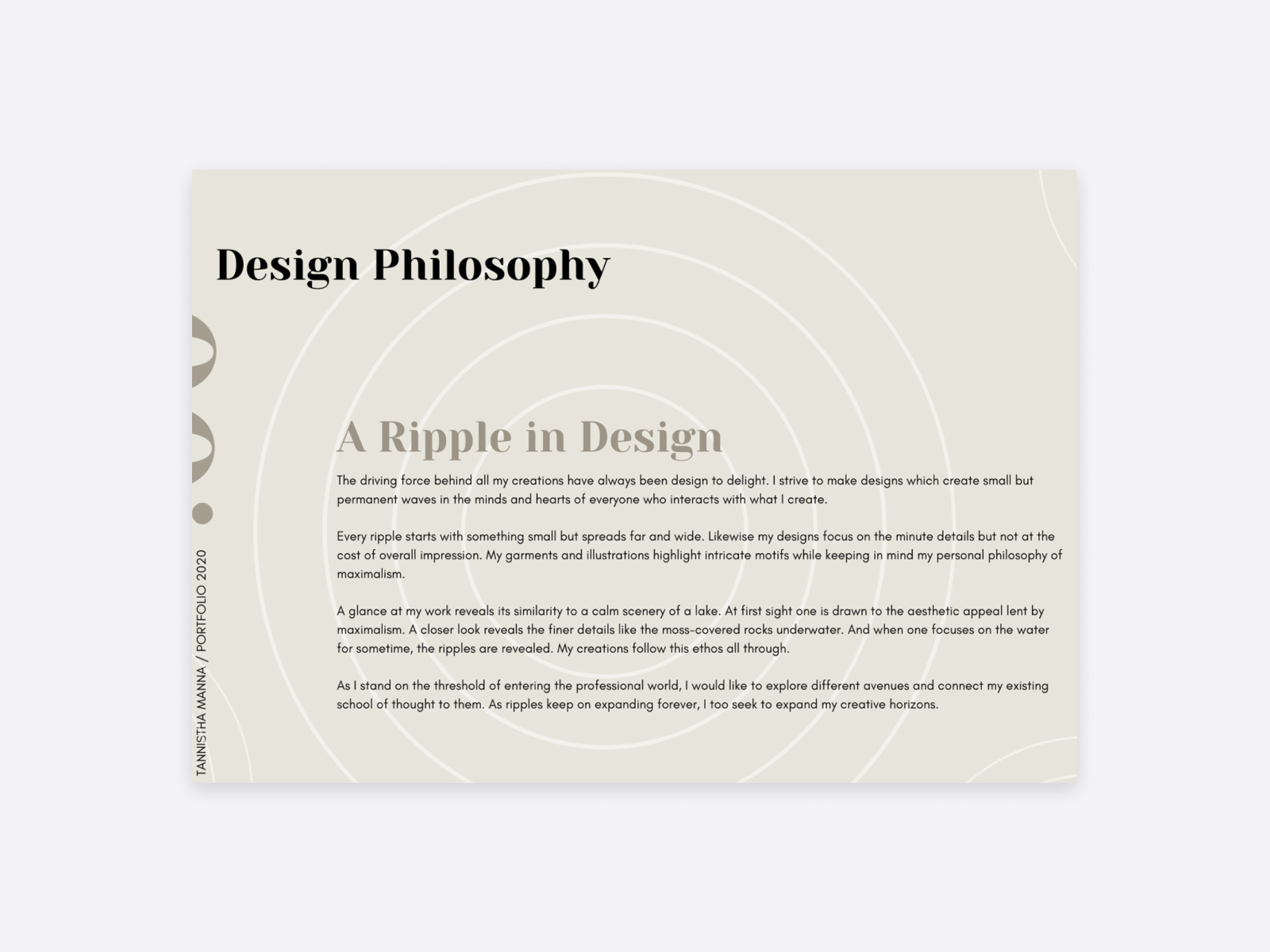
Tannishta's fashion portfolio
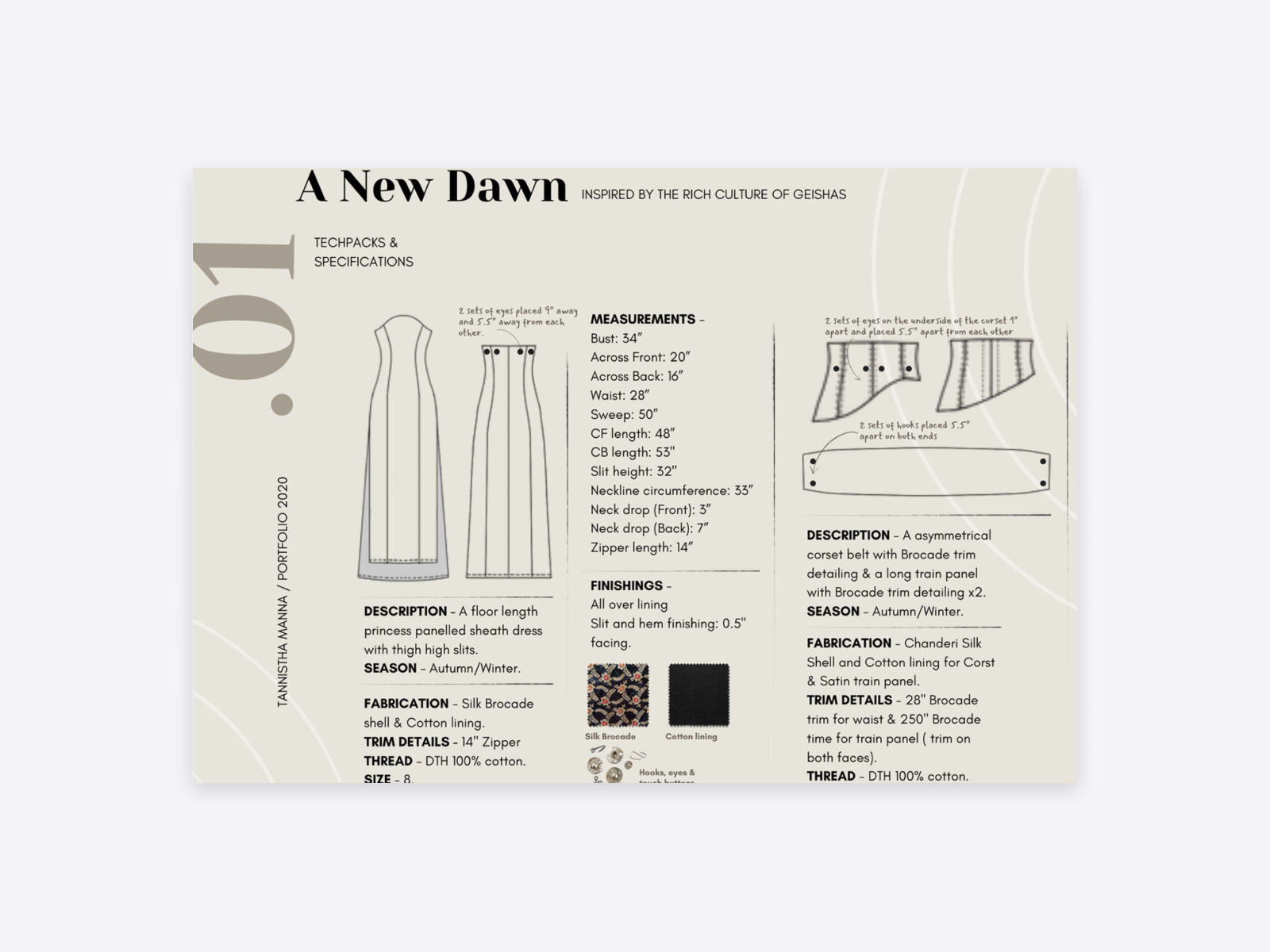
Tannistha's fashion portfolio
What can you learn from Tannishta’s fashion portfolio?
- An innovative resume Tannistha’s resume is the perfect combination of copy and design. You can gather just the right information about her without being overwhelmed. You can find the contact information, her school and work experience, and her software skills.
- Design philosophy This is one of the key takeaways from her portfolio: by putting philosophy behind your designs the viewer is able to put them into context.
- Techpacks and specifications One of the greatest assets of Tannistha's portfolio is that she's not afraid to get into details with her designs. It's clear, transparent, and on point, so you can easily follow her design process.
4. Chris Pack

Chris Pack's fashion portfolio
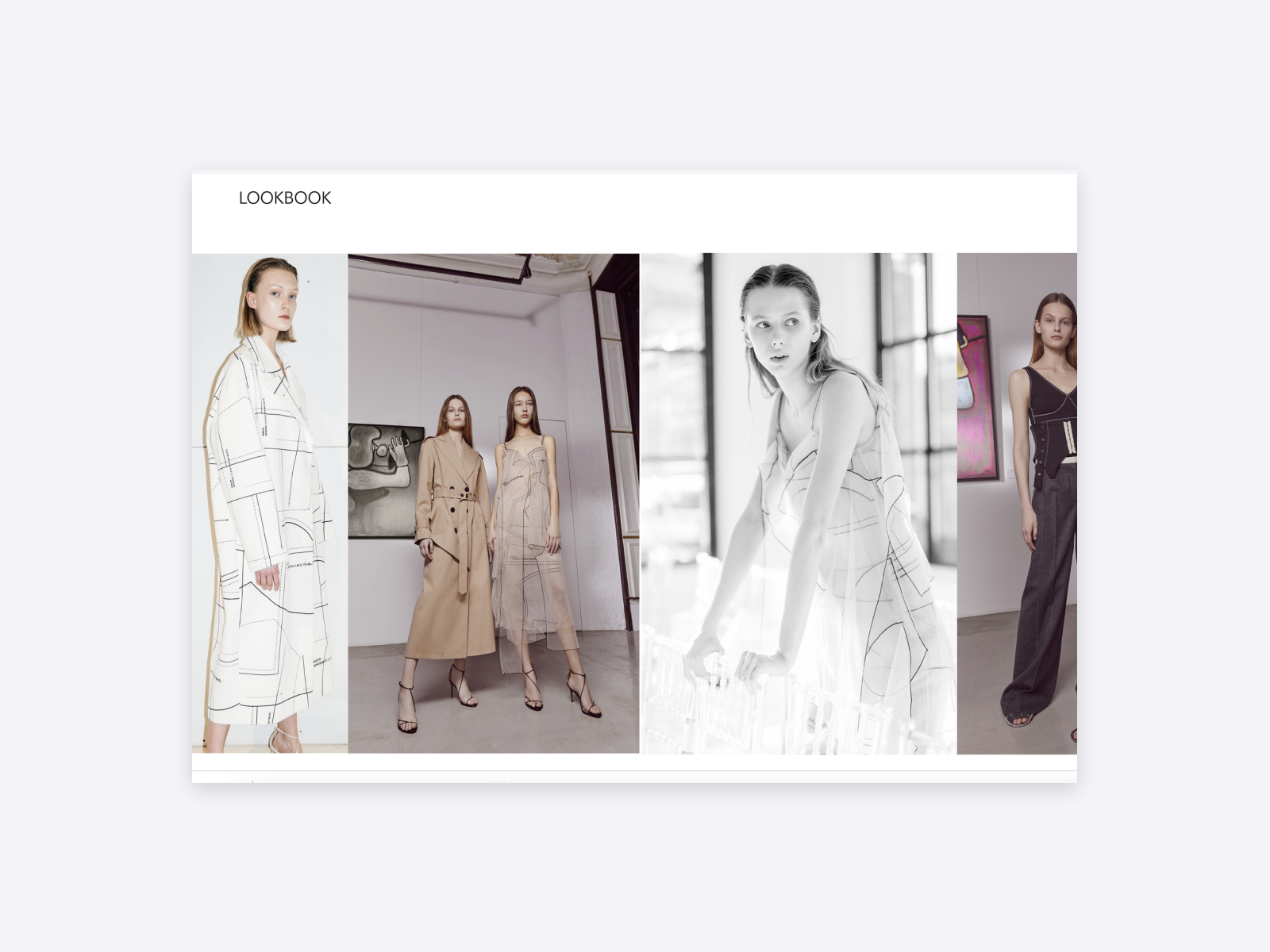
What can you learn from Chris Pack’s portfolio?
- Inspiration/design development Chris has detailed and illustrated a page on how and where he gathers inspiration. He includes architectural and interior design, next to fashion design collections.
- Lookbook A lookbook is a must when it comes to fashion portfolios. This is an ideal way to showcase your ready-to-wear designs on models, so your visitors can see the entire process of your design method and the latest results of it.
- Fashion sketches Another example of a clear and transparent fashion sketch. On the right-hand side, Chris included some snippets from the fabrics and the details, which make the design even more complete.
5. Simran Chopra
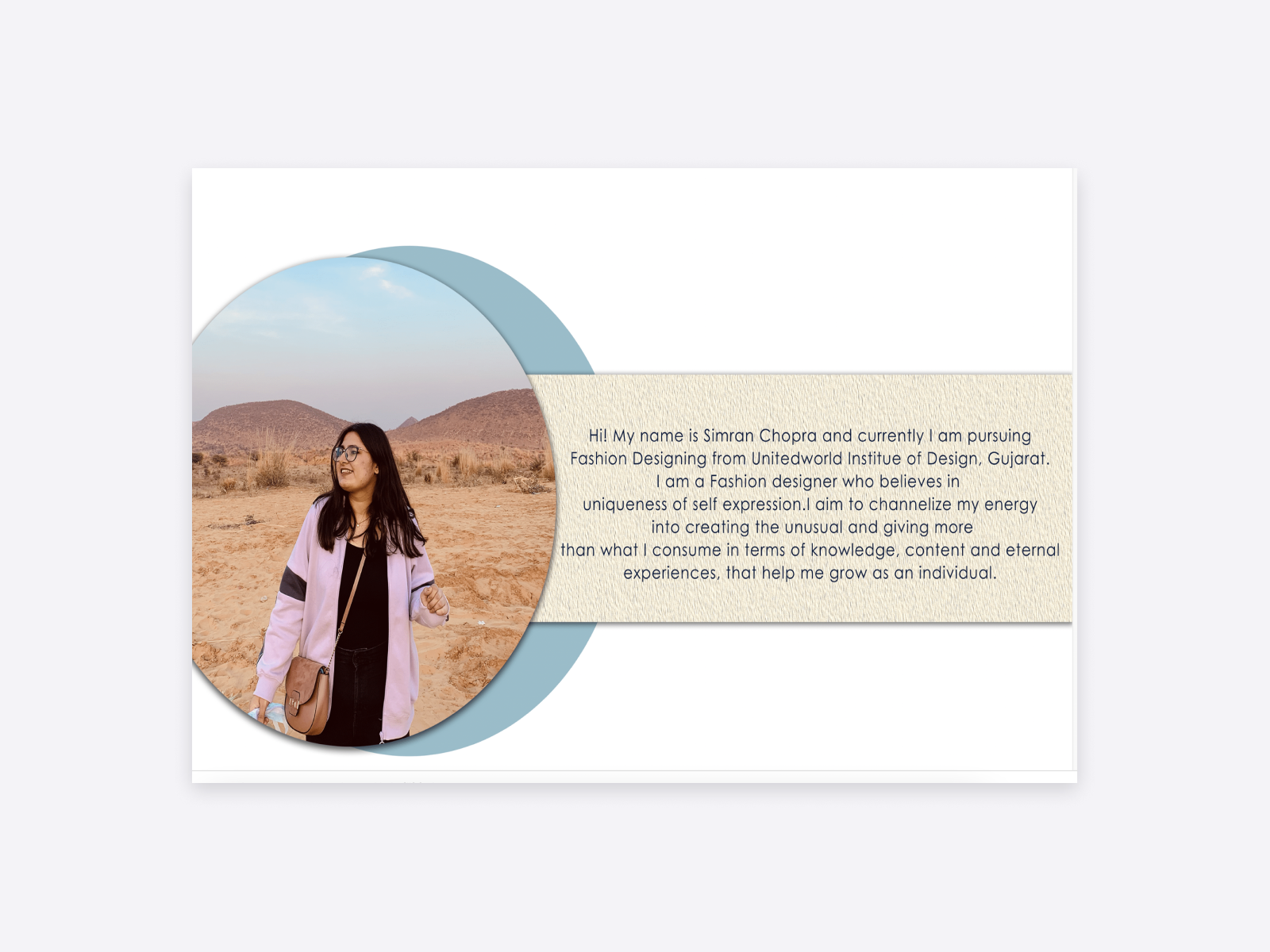
Simran's fashion portfolio
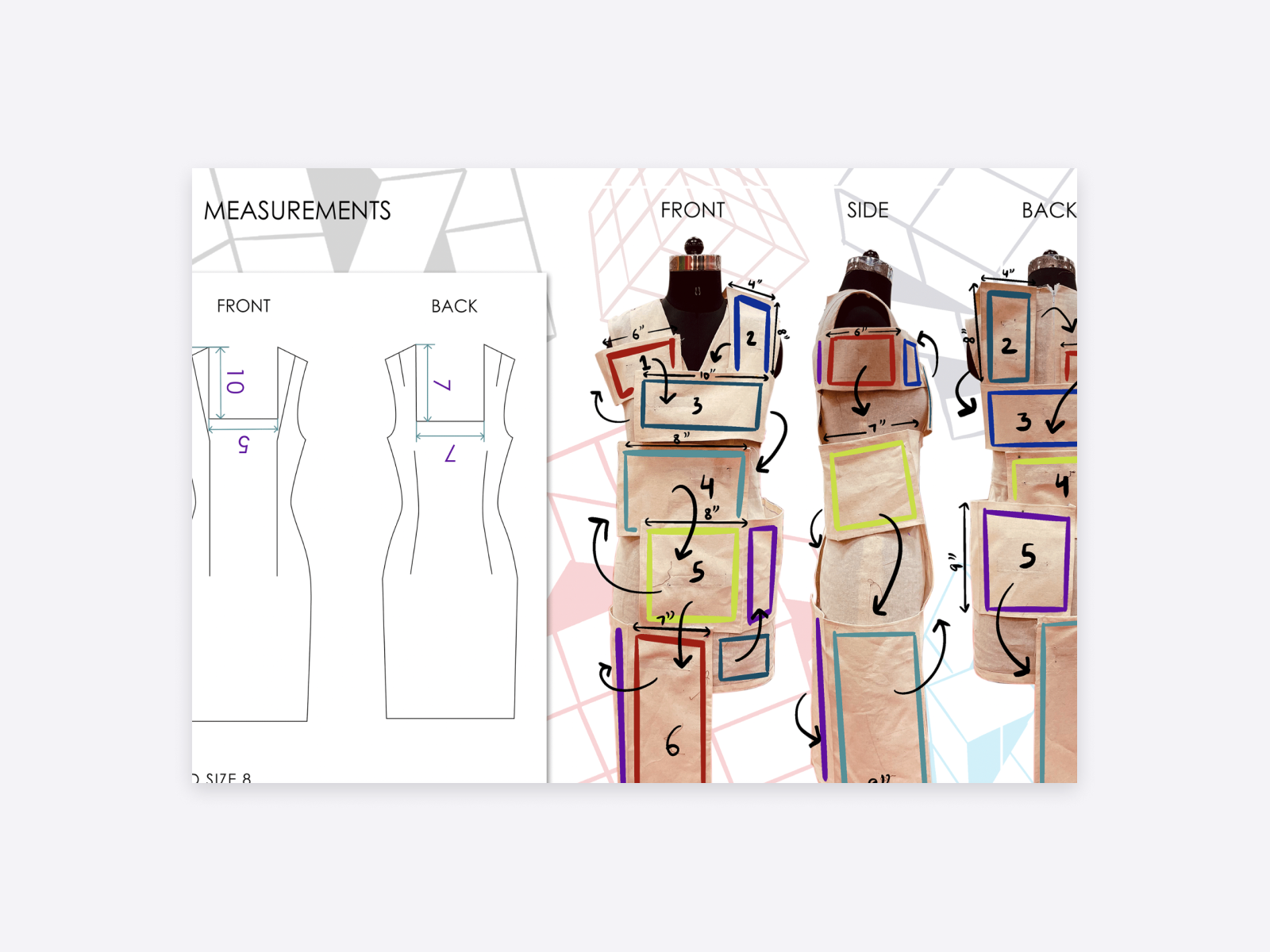
What can you learn from Simran Chopra’s fashion portfolio example?
- Short bio on the front page Simran’s portfolio starts with a short bio, where she summarizes her goals and beliefs as a fashion designer. This is a perfect way to introduce yourself in a couple of sentences. Read more about how to create the perfect about me page .
- Showing a detailed design project Recruiters and hiring managers are interested in your thinking, more specifically in your design process. Make sure to showcase that in your fashion portfolio.
- Motif ideation Show the inspiration behind your design process and highlight elements and themes that connect your creations.
6. Aditi Singh
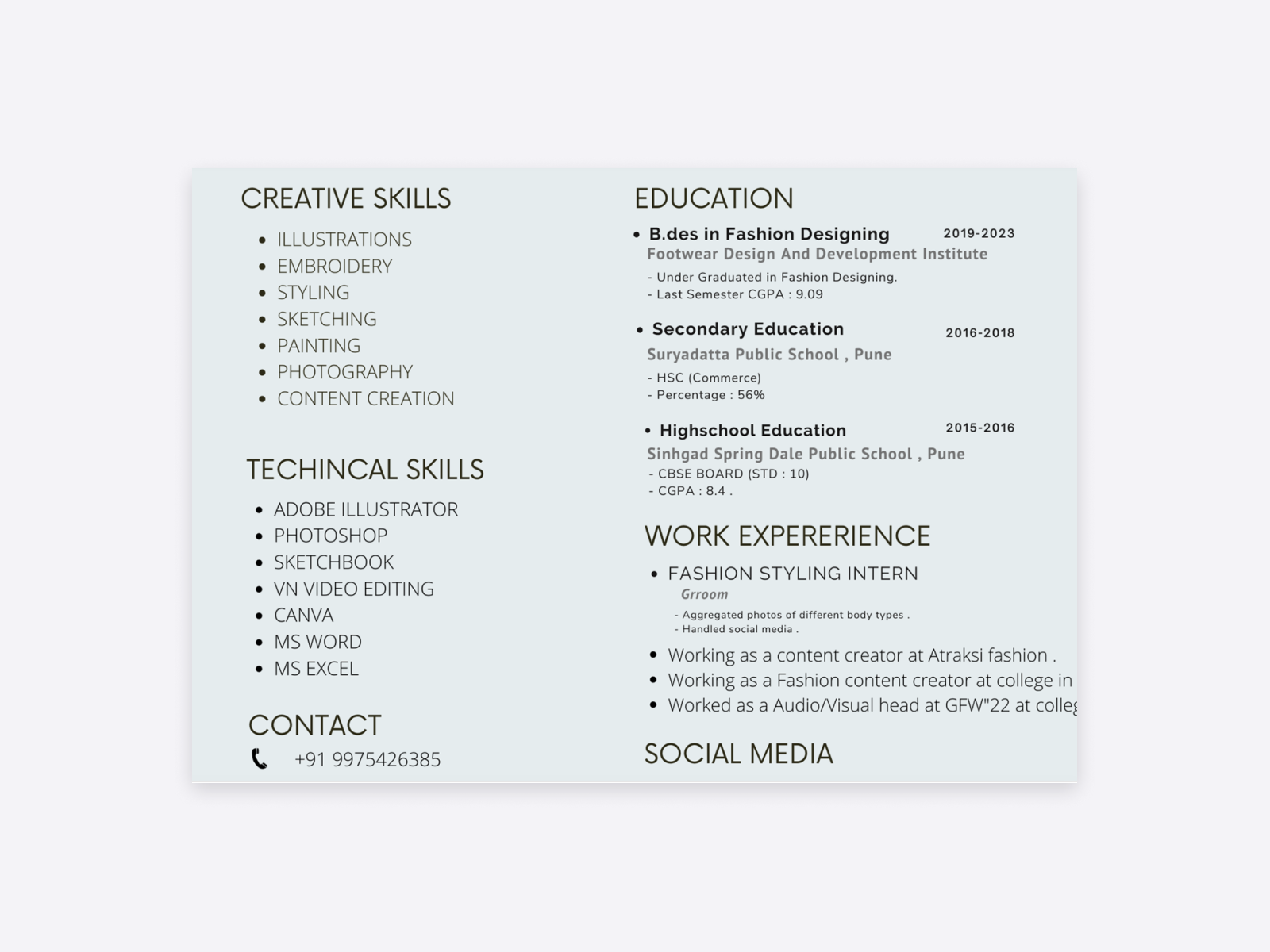
Aditi's fashion portfolio

What can you learn from Aditi Singh’s fashion portfolio example?
- Detailed skills Aditi is detailing not only her education and work experience but also her technical and creative skills. This is something that you can easily add to your portfolio.
- Inspiration board Inspiration boards are diverse: they vary from fashion designer to fashion designer. Aditi’s inspiration board includes fashion sketches and a set of plates, in blue and white colors. Don’t be afraid to experiment with your own personal inspiration board.
- Magazine features Highlight your accomplishments, and include magazine features or any other achievements in your portfolio.
7. Verrel Widura

Verrel's fashion portfolio
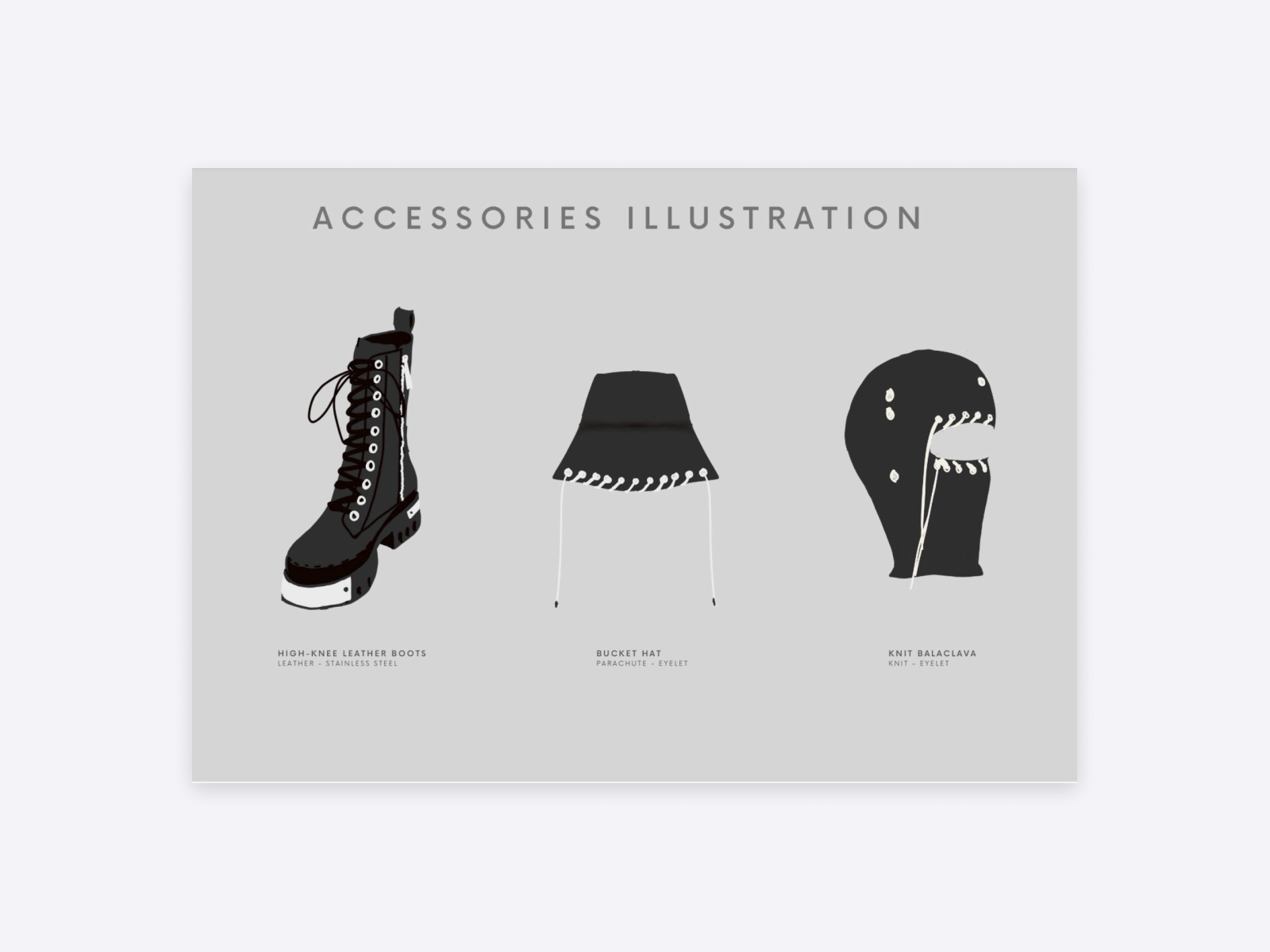
What can you learn from Verrel Widura’s fashion portfolio example?
- Target audience Verrel is showing his collection and his research work that led to his final designs. You can see that he includes an accurate potential buyer audience, with geographic, demographic, and psychographic details.
- Accessories illustration A good example of including not only sketches of dresses but also of accessories. Verrel included fashion sketches from three different accessories: a hat, a boot, and a knit balaclava.
- The design process with pictures Verrel illustrates his entire design process with photos, so you can have more insights and background information on how he works.
8. Anisya Fresha Zalsabila

Anisya's fashion portfolio
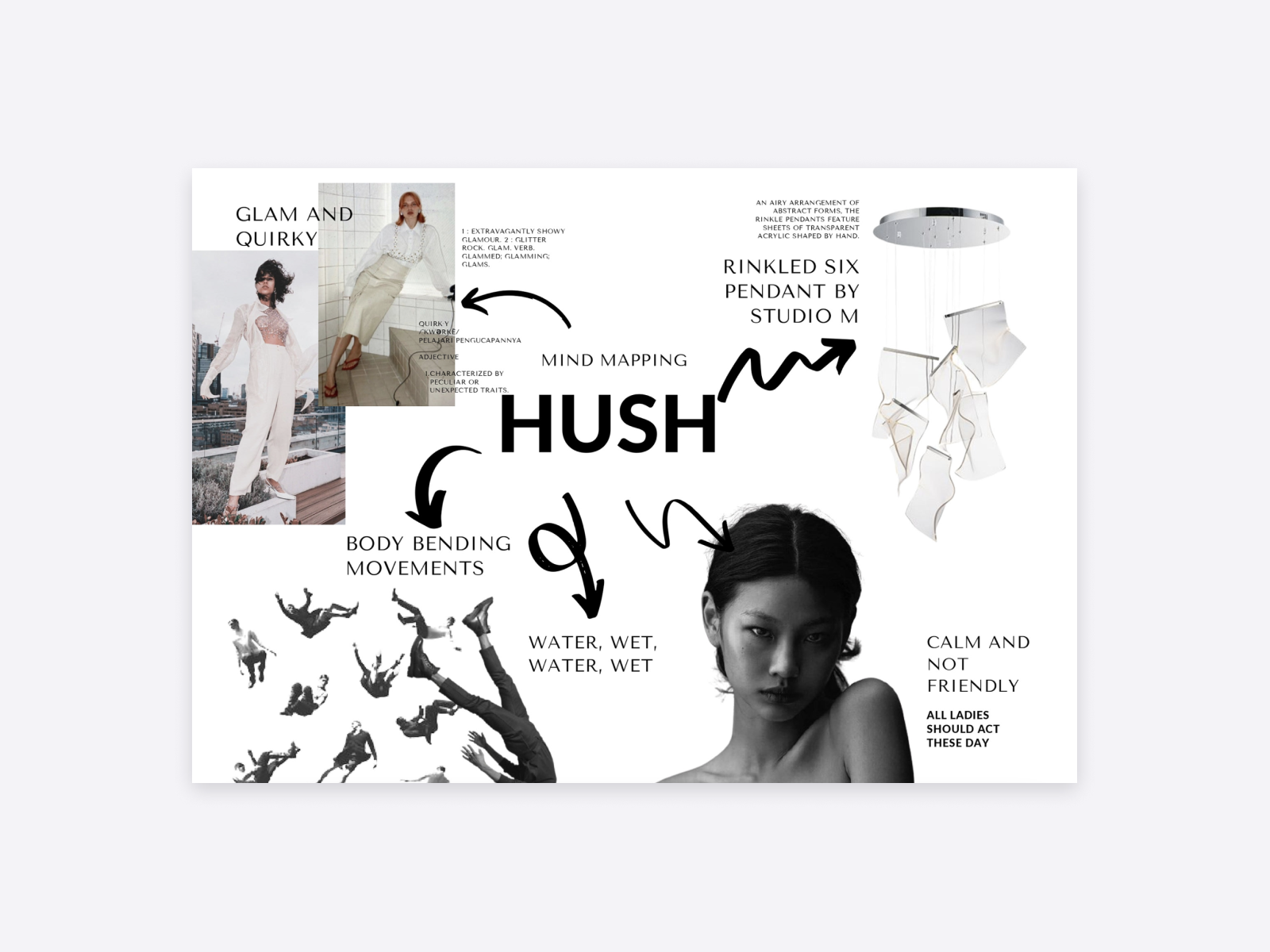
What can you learn from Anisya’s portfolio?
- Mixing photos and illustrations Anisya is mixing photos and illustrations in her sketching, which is not only unique but it's a great way to showcase your idea of the final product.
- Mind mapping Another great example of sharing your thoughts on future design is mind mapping. It's an intuitive and super easy way to plan different designs in the early stages of the design process.
- Explorations Don't be afraid to display your experiments and include discarded ideas. This shows not only your dedication to the project but also that you're not afraid to try different approaches.
9. Sushmitha S Gowda
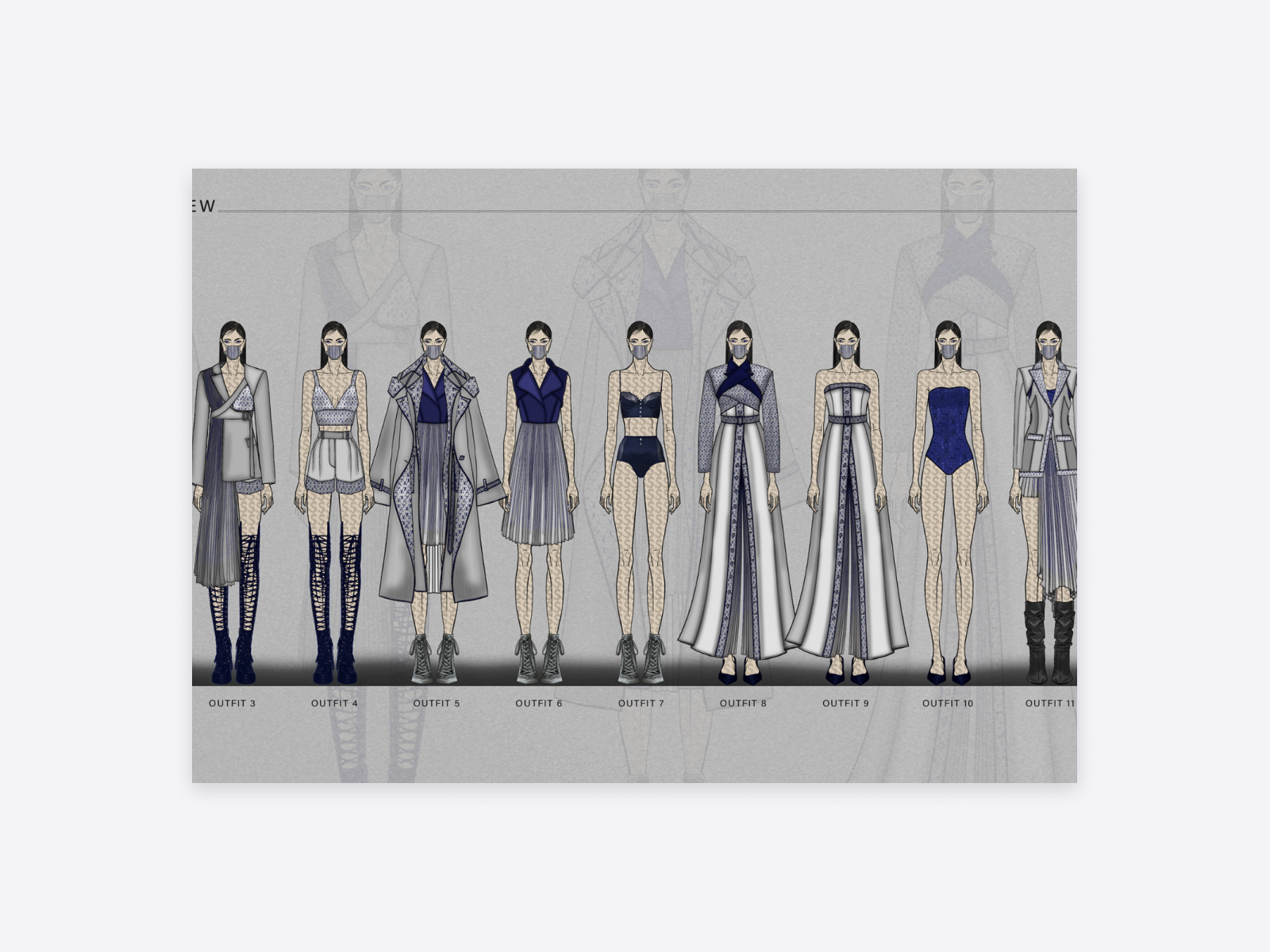
Sushmitha's fashion portfolio

What can you learn from Susmitha's fashion portfolio example?
- Show the sketches of the entire collection Susmitha chose to show the entire collection in sketches. If you have a chance, it's best to display your collection in its full entirety, for the full effect.
- Display your research process Hiring managers and recruiters are interested in every minor detail. This also includes your research process, where you can put a concept behind your collection.
- Introducing your muses Susmitha's womenswear collection was inspired by the French artist Yves Klein. Showcase what inspires you, however abstract. It says a lot about your personality and artistic vision.
10. Sandeep Nagar
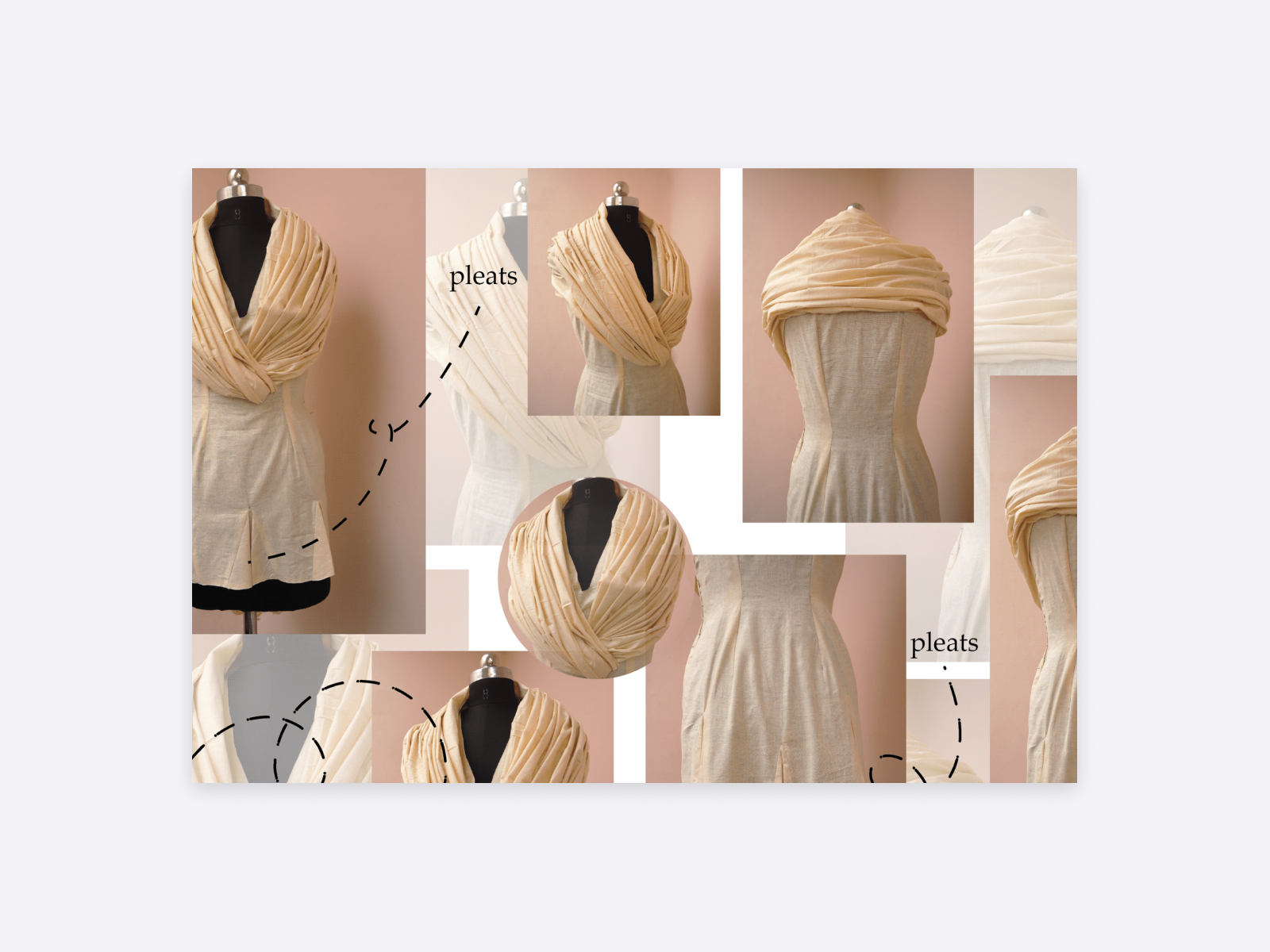
Sandeep's fashion portfolio
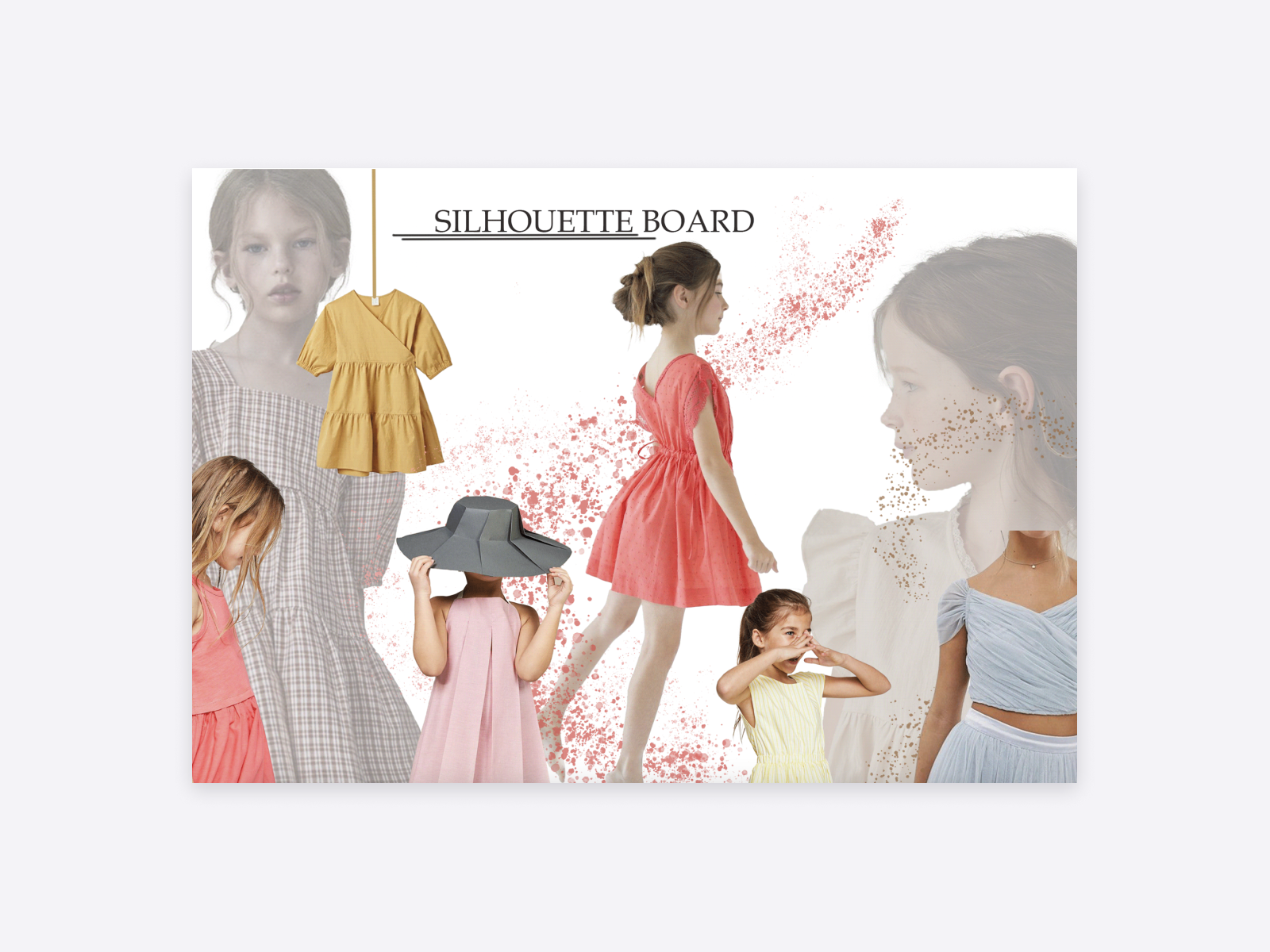
What can you learn from Sandeep’s fashion portfolio example?
- Photos and details We’ve got a glimpse through Sandeep’s photos about his design process. He shows us how he is creating the actual dress, and processes are happening in the background.
- Silhouette board Whether you use photos or sketches, making a compilation that highlights your collection's silhouettes is a great way to showcase the cohesion and craftmanship of your creations. Group them according to similar shapes, texture, fabric, color or theme.
- Silhouette board mixing with models and sketches Sandeep’s other silhouette board is a mixture of sketches and models. If you want to represent your collection in all kinds of ways, this is the best option to do it.
11. Yeo Wen Quing

Yeo's fashion portfolio
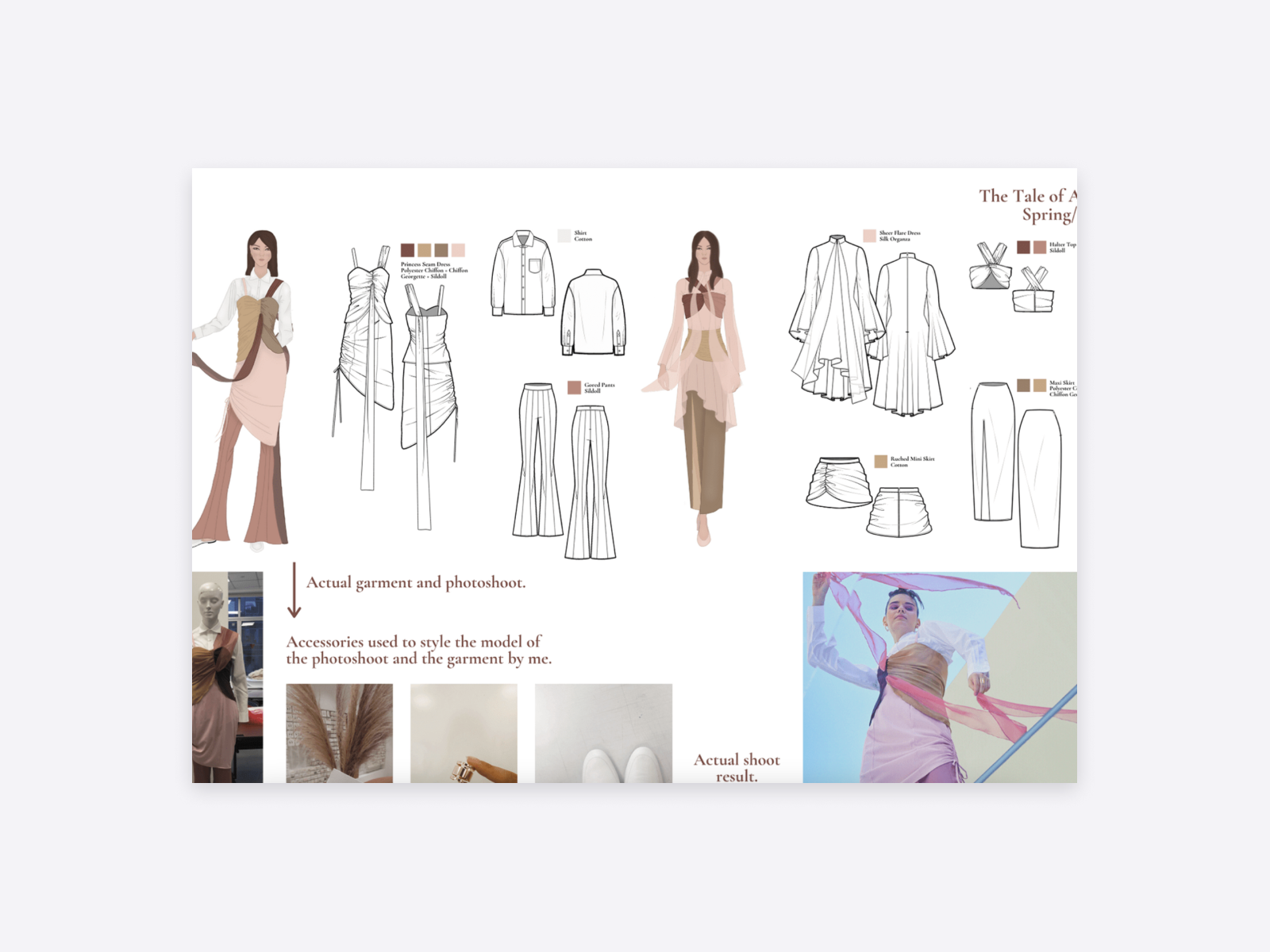
What can you learn from Yeo’s fashion portfolio example?
- Styling proposal It's always beneficial to show not only strictly your fashion design, but also other projects. This way hiring managers or recruiters are aware of your versatility and skills.
- Accessories and sketches Yeo is showing us her sketches and also the actual garment on the day of the photoshoot , on the same page. This before/after approach is very handy because you can see the ultimate results straight away.
- Research and design development It's worth showing the development not only for entire collections but also for accessories. It can say a lot about your approach.
12. Betsey Elias
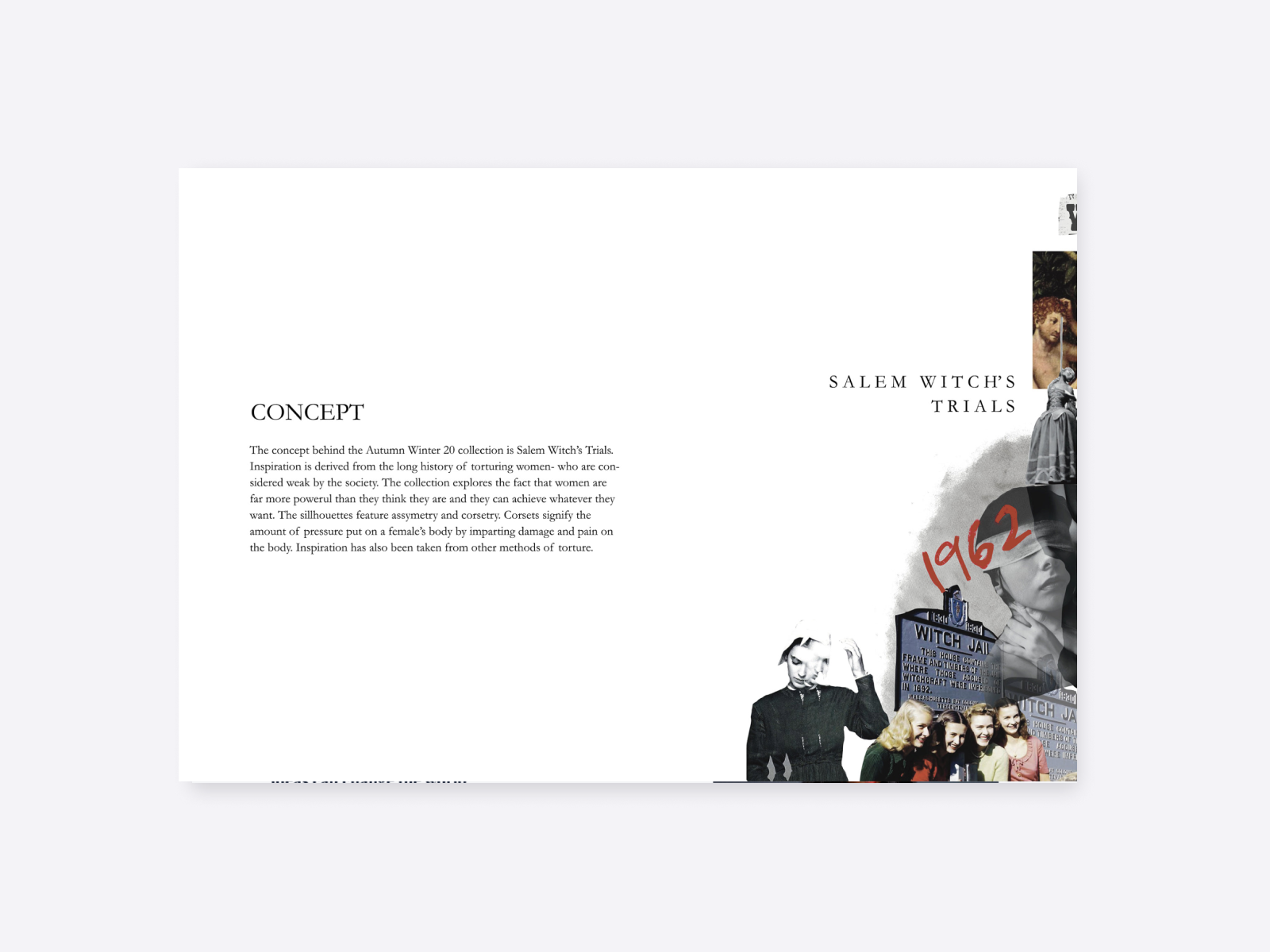
Betsey Elias's fashion portfolio

Betsey's fashion portfolio
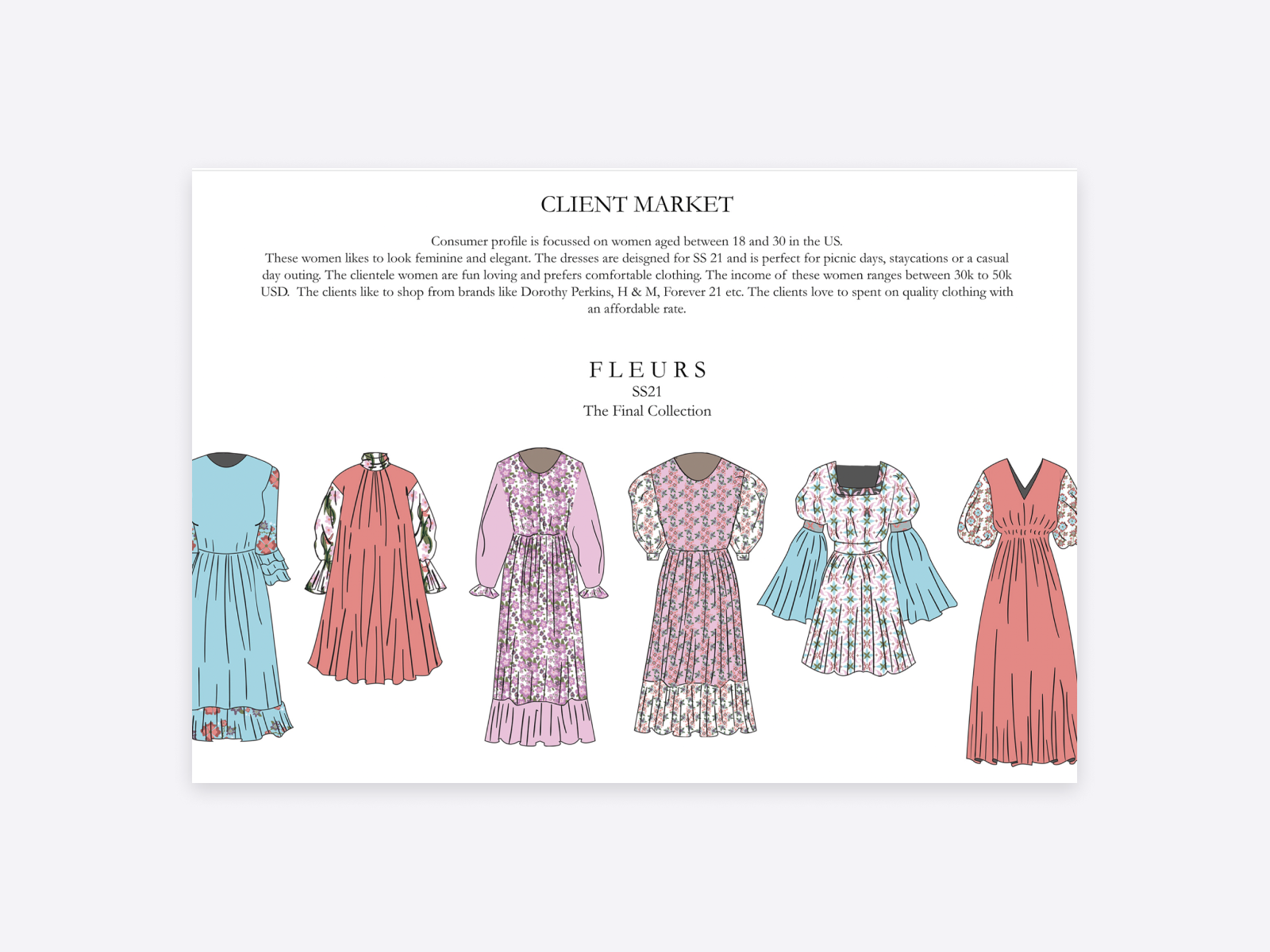
What can you learn from Betsey’s portfolio?
- Concept Betsey's portfolio is a graduation portfolio, which is why the concept of the design is different. She writes about it in detail, which can be quite useful because it highlights the context of your design.
- Show your other side Betsey does fashion illustration just for herself, but she isb'r afraid to show it to her audience. If you have work, which is related to fashion design, but not linked to your collection, you can still display it.
- Client market Betsey did some research on the client market for her collection. She included her fashion sketches next to it, therefore you can have a closer idea of what and to whom she wants to sell.
+1. Fransico Diegues
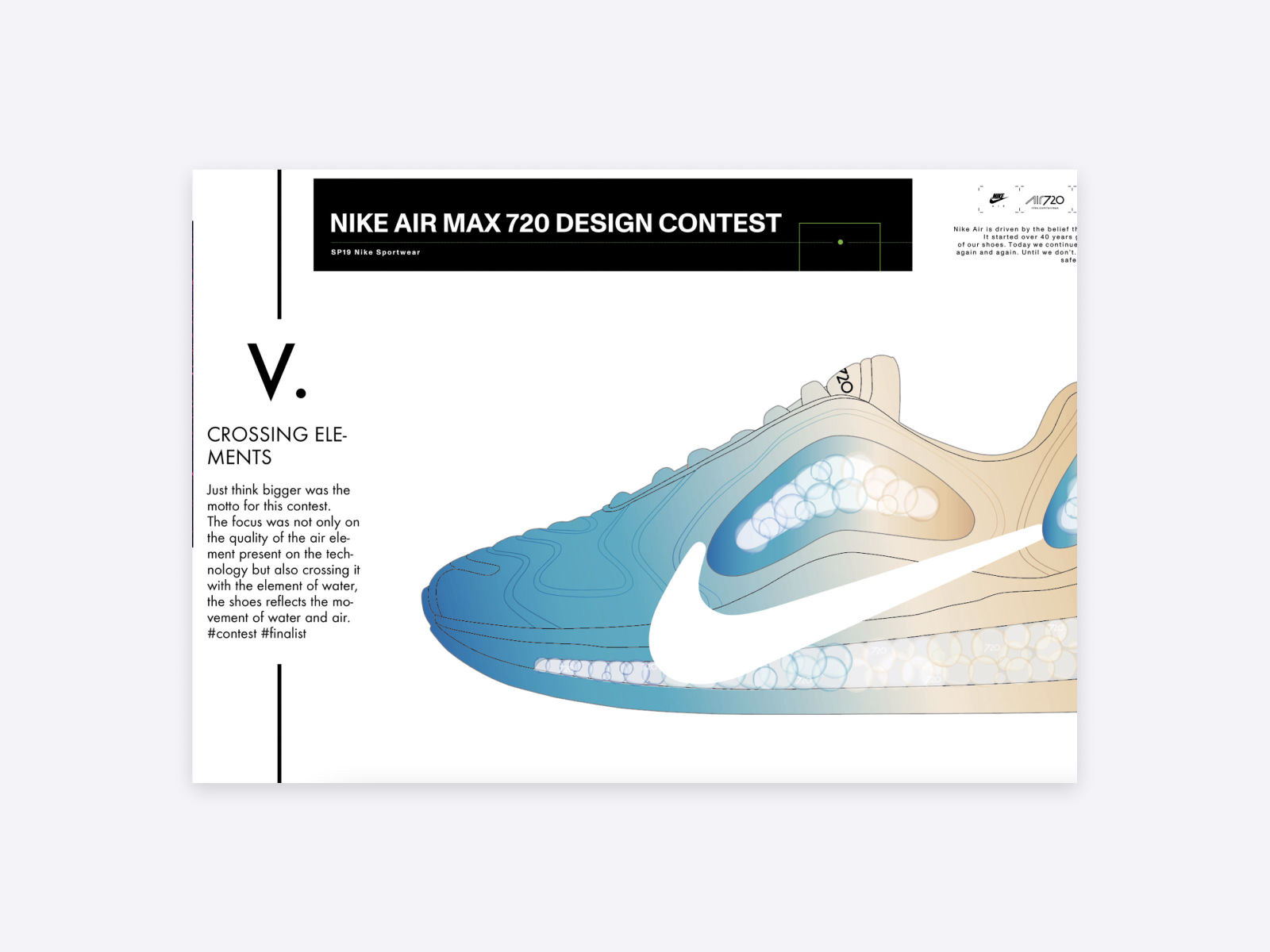
Fransico's fashion portfolio
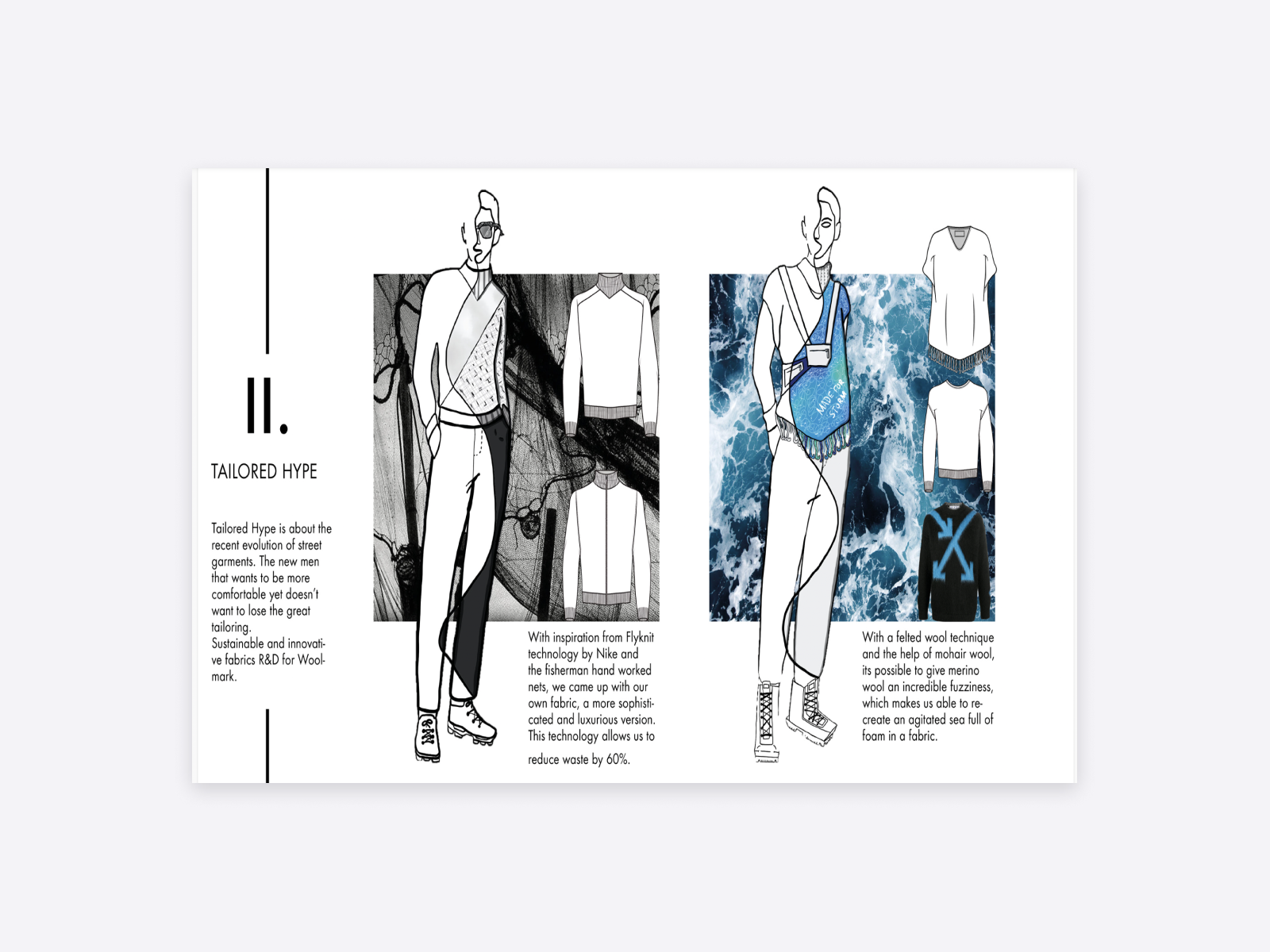
What can you learn from Fransico’s portfolio?
- Design contest Include your accomplishments and your design contest work. They show that you are up for the challenges and you like to test yourself: you can kill two birds with one stone.
- Fashion sketches in different colors Fransico included some concepts next to his unique designs which are black and white, and black and blue. You can see that he also highlighted that his design is not only unique but also eco-friendly.
- Pattern tests Fransisco gathered inspiration from Sicily, and from its mythological history. There are several pattern tests included, some of which made it to the final design.
4 + 1 key takeaways from these fashion portfolio examples
Now, as we browsed through some stunning fashion design portfolio examples, it's time to gather what you can learn from them, so you can get the ball rolling!
A short bio is a must
As you might have noticed, most of the portfolios included a short—or a more detailed—bio section. This is a place where you get to introduce yourself in a few sentences. Describe your journey as a designer, and also your technical and creative skills.
2. Show your design process
We have presented you with several approaches to showing your design process. Some of the designers used pictures, others chose to write about it. It's up to you which method you pick when it comes to your own portfolio.
3. Include inspiration boards and fashion sketches
For a fashion portfolio, inspiration/mood boards and fashion sketches are essential. How you display them is entirely up to you, and the mood of your design. Pitch black background, with white lines, or something more sophisticated? You decide.
4. Don't forget your accomplishments
Tv appearances, mentions from blog articles, or influencer collaborations? Include all recognitions, whether it's big or small, into your portfolio—because you are proud of them, right?
+1. Assemble and curate your work
It often happens that we have our work in several places. Gather them, so it is much more transparent and easier to work with. As you don't want to build an extensive fashion design portfolio, choosing your 3 - 5 best designs/projects is best. Make sure these show the scope and versitality of your skills.

Fashion portfolio tools
There are plenty of ways for designers to create their own fashion design portfolio. We collected 3 options to choose from.
We ourselves are currently working on a portfolio builder tool dedicated to fashion designers. Want to have early bird access? Subscribe to our newsletter and get the latest news straight to your inbox.
General portfolio builders
If you are committed to creating a portfolio, general portfolio builders can be a good option. Behance, Adobe Portfolio, or Format are decent solutions for general purposes. Although they have minor flaws, they are a good fit for those who don’t have any specific needs or expectations. Keep in mind that portfolio builders are not websites, they only show a series of work or a particular project.
A website contains a lot more information about the designer, each section with a different purpose. With general portfolio builders, you don’t have this option, it only focuses on a group of work. Different portfolio builders offer different levels of customization. Most of them use a pre-made template, where you can drag and drop your own content, but there is not much space for creative self-realization.
Website builders
You are probably familiar with general website builders, as they are often used for portfolio building. There are benefits to owning a website, but until then, the road can be pretty bumpy.
We only suggest using them if you have plenty of free time. As an example, you can choose WordPress, which is the most popular CMS in the world, but it can come with a steep learning curve.
Although WordPress offers a great deal of customization, this comes with a tremendous amount of plugins you have to download. This extends the date of the launch and also the setup itself.
Website builders such as Wix and Squarespace use built-in templates, which is a step easier than using WordPress, but still has its disadvantages. Wix templates are not interchangeable, so you can’t transfer content from one to another.
You can often face hidden fees you don’t expect first, and the plugins you need for a full-functioning website are pricey. Wix is a solid choice for someone, who only wants a general website, but probably not for those who wish for something more specific.
How to create your fashion portfolio website?
As you have seen several fashion portfolio examples above, you probably can't wait to start your own. Before you jump in, let us help you with some essential details. You will read about portfolio website builders, and how they can help you to reach your goal. You can also find out which is an ideal portfolio layout and structure.
How can a portfolio website builder help you?
How about having an outstanding portfolio website that's tailored to your needs right away? Sounds excellent, right? Let the facts speak for themselves. Here is how our tool can help you create your fashion portfolio.
- Forget HTML and CSS. Leave the coding to us. You don't need to become a programmer, a graphic designer, and a copywriter for the sake of building a website. We are here to help you out.
- Use built-in templates. Our portfolio website builder has an extensive collection of built-in templates to choose from. This makes website building quicker and you can also personalize your templates.
- Write with ease. Have a hard time finding the right words? While you're building your site, there are some guiding questions helping you out in our editor, so you can be even more confident with your copy.
- Build your online brand. As someone working in such a competitive industry as fashion design, it is essential to be present in the digital world. Put your best feet forward, shine the light on your work, and use your portfolio website for building an online brand.
Fashion portfolio layout and structure
The 4 fundamental elements of a fashion designer portfolio are the following:
- Contact page
- Link to your resume or a short bio
- Projects on your home page
These 4 elements are essential, but it is up to you how you tailor your portfolio website. As you are creating your website, think about your target audience and the goals you want to reach with the actual portfolio.
- What is your ultimate goal with your portfolio?
- Who is your target audience?
- How much time do they have to read your portfolio?
- How to showcase your work in the best way?
It might be worth pondering these questions while you are working on your website. If it helps, visualize it: write it down, or draw a picture of your perfect website.
Design your portfolio website in 4 steps
There is nothing left but to create your very own website, in only 4 steps. Let's get down to it!
- Choose a template that fits your style . You can browse through various templates, and you can change it anytime you like.
- Write the tagline and choose your main photo. Use a high-quality, and recent photo and write a couple of matter-of-fat sentences about yourself: who are you, what do you do, when did you learn to do it, why are you doing it?
- Add projects. Add projects on your home page you are truly proud of and write a couple of sentences about them. Consider the process behind them, the inspiration and the context.
- Fill in the contact page. Make it easy to get in touch with you. After all, this is the goal, right?
Share your fashion portfolio
Congratulations, you did the hardest part! There is only one thing left: to share your fashion portfolio with the world.
- LinkedIn. LinkedIn is the world's largest platform for professionals. Hiring managers and recruiters use it on a daily basis, therefore sharing your portfolio in a post and also in your profile can largely benefit you.
- Social Media . Do you have a dedicated platform for your professional work? Place your portfolio link in the bio, so your visitors can reach it, with only one click.
- Email. Place the link to your portfolio in your signature, so every email you send out automatically draws attention to it.

The key takeaways
- Assemble your work, and curate your best designs: quality over quantity should be your approach
- Choose your portfolio tool wisely, and find out what helps you to reach your goals
- A portfolio website has 4 key elements: home page, project page, contact details, and a short bio or link to your resume
- Always think about your goals and your target audience, and ask questions before you start to build your portfolio website
- Once you have done it, do not forget to share it!
Looking for more handy tips and tricks, straight to your inbox? Subscribe now, and learn more about fashion design portfolios!
Written by:

Barbara Bartucz
Enthusiastic photographer, bookworm.
Different professions, unique challenges. Get tailored tips for your portfolio here.
How to Make an Eyecatching, Job-Fetching Fashion Portfolio
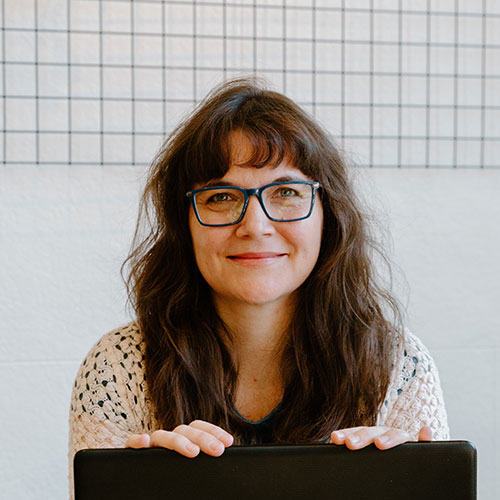
Jessica Michael
You became a fashion designer because you have a vision.
You create fashion that is unique to you, that tells the world a new story in a new way.
Your work is the key to your soul and expresses something intangible in a way nothing else can.
But now you need a job.
How do you make sure a potential employer or freelance fashion design client can see the power of your art and the importance of your work?
That's where a fashion design portfolio comes in.
Whether you're looking to freelance or want to land a job in fast fashion or with a luxury brand, a fashion portfolio is an absolute must to showcase your fashion design and highlight your talent.
What is a fashion portfolio?
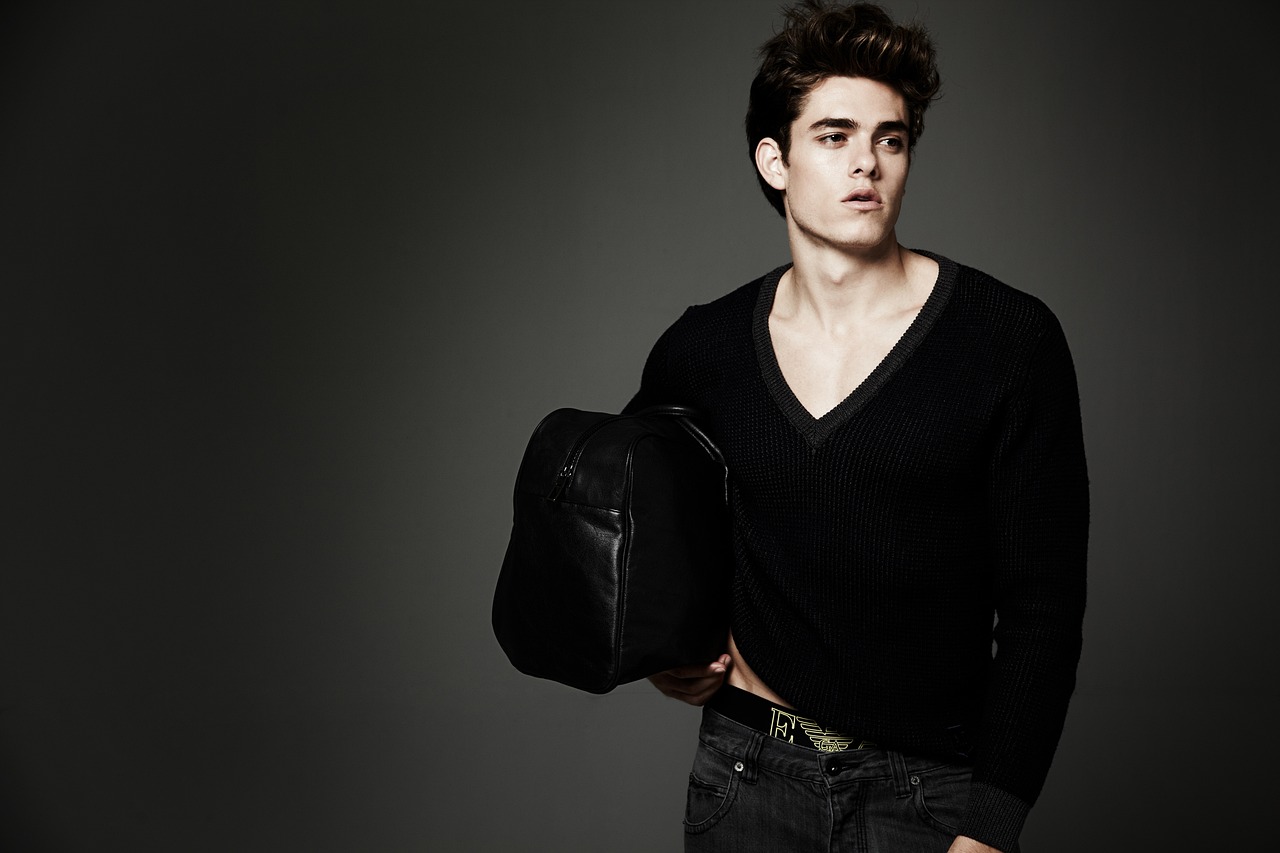
A fashion design portfolio is a collection of your work that you can share with potential clients, collaborators, and employers. It's a way to show people what your fashion designs look like and the process you use to create them. It can also be a chance to display any press or awards you've garnered, as well as showcase your professional fashion design experience.
In general, there are two types of fashion portfolios : a personal fashion design portfolio and a specific or professional fashion design portfolio.
A personal fashion design portfolio contains a broader spectrum of your work over a longer period of time. You'll want to focus on your best and most recent designs and collections, but a personal fashion portfolio is more of an overall statement of who you are as a designer. This type of portfolio is what a fashion house will want to see if they interview you.
A specific or professional fashion design portfolio focuses on one type of fashion and is created for a specific project or position. For example, if you are trying to get a job at a fashion house that focuses on leisure apparel, you would create a portfolio of your work in that area. It's what you would send to get an interview in the first place.
Benefits of an online fashion portfolio
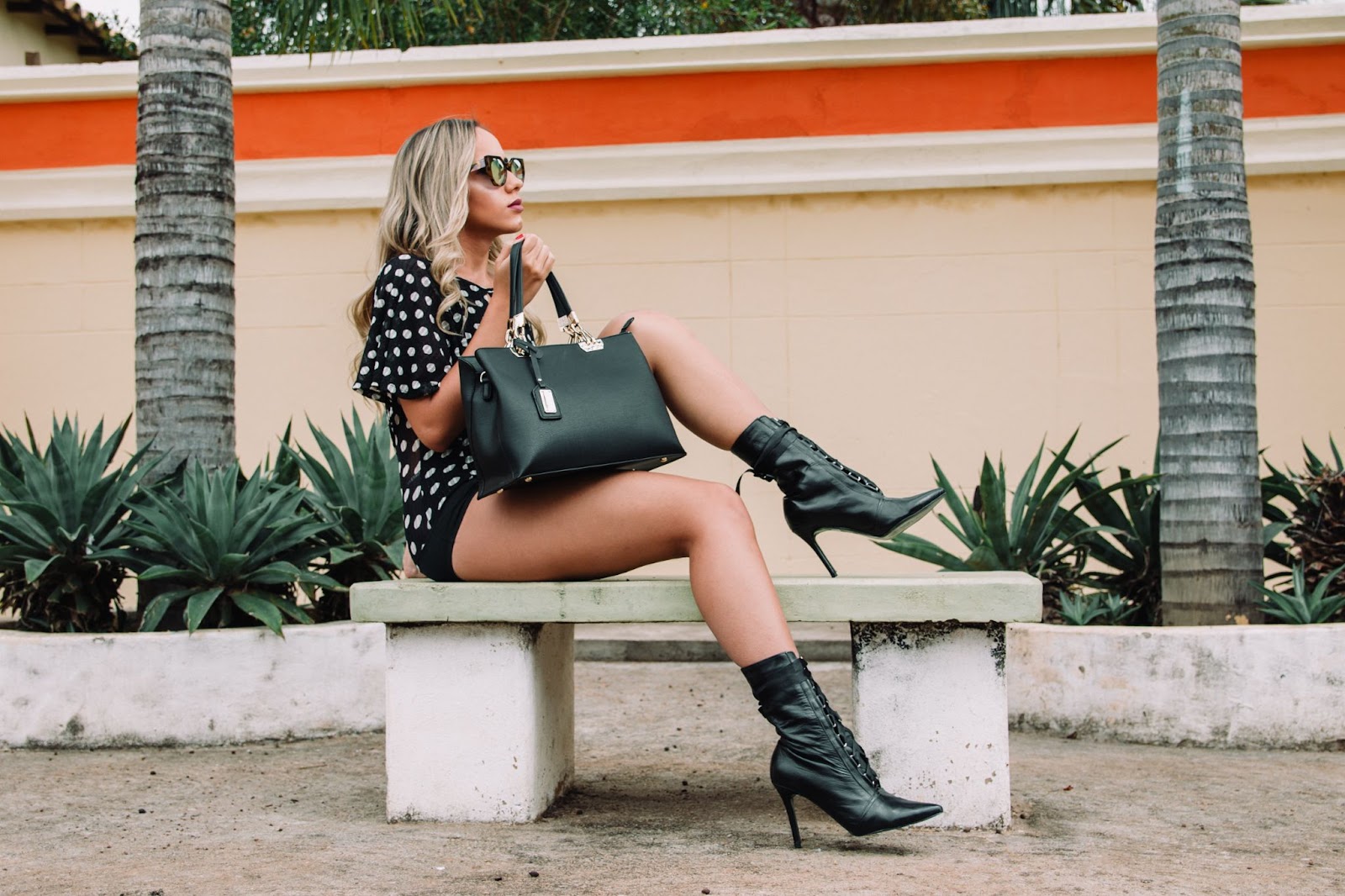
Nowadays, most fashion portfolios are digital. There are quite a few benefits to having a digital fashion portfolio, which we'll touch on here.
Combine your personal & specific fashion portfolio into one. A well-designed digital fashion design portfolio allows you to display both the scope of your designs as well as the specifics of a project that an employer or client may want to see. By creating separate pages for separate categories, you can make it easy for a client or employer to find the examples they're looking for within the broader context of your personal portfolio.
Easy to update. A good online portfolio hosting site will make it easy for you to keep your fashion portfolio updated. Uploading new designs and keeping the information on your site up-to-date ensures that your best work is always on display.
Visually appealing. Stunning photos go a long way in showcasing your work as a fashion designer, and photos excel in an online format. Not only will an online portfolio ensure that your photos really pop, digital portfolio hosting sites offer a variety of templates, so you can create a unique visual aesthetic to highlight your fashion style.
Simple to share. Sending a potential client a link to your site is much easier than trying to get a 3D fashion portfolio in front of them. That means you can easily work with clients from all over the world and apply for jobs from anywhere.
Combine with social media for more impact. An online fashion portfolio template should have easy to integrate social media buttons that you can add to your site. This makes it easy for any visitors to your fashion design website to become followers with just one click. And you can add a link to your fashion design portfolio to any of your social media accounts, so your followers can more easily be converted into clients or employers.
Scalable. Maybe when you first get out of fashion design school, you create a portfolio to find a job. After a while, you start to take on freelance clients. Eventually, you open your own fashion design studio and sell directly to the public. A digital fashion portfolio changes with you and can adapt and grow as you do, without having to start all over.
Fashion Design Portfolio Checklist
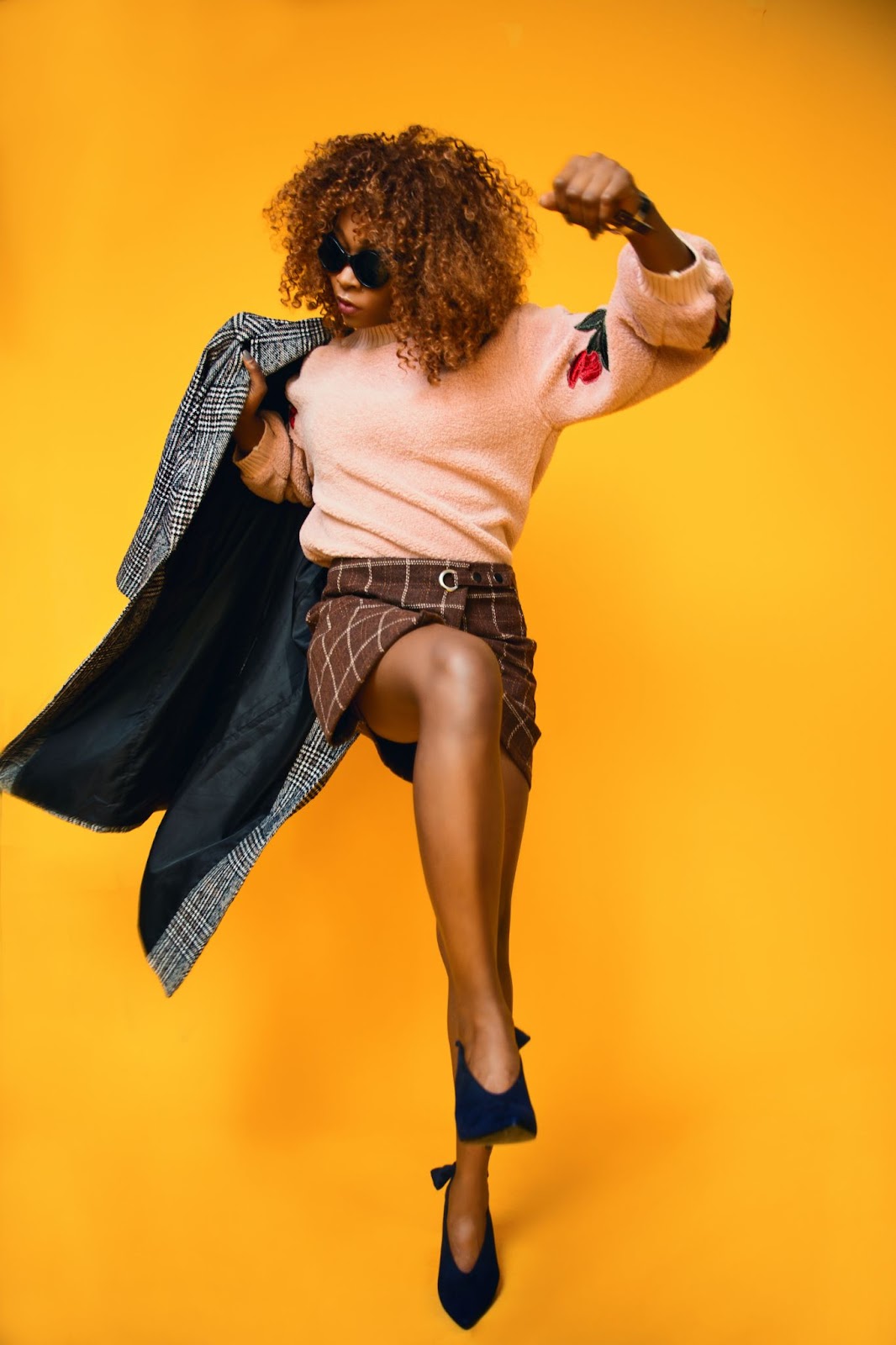
Introduction
A smart, short introduction to you and your work helps clients and employers get a sense of who you are as a fashion designer. Fashion design portfolio examples that succeed make sure to stay professional and stick to the rule that less is more when it comes to your bio. Take some time to clarify your most impactful statement about your work, and then let your designs do the talking for you.
The focal point of your fashion portfolio is your designs, but how you display and organize your designs can make a big difference.
First, you want to make sure that you are showcasing your best and most recent work. It's better to show fewer designs that are higher quality than overwhelm with too many fashion portfolio examples .
You'll also want to invest in high-quality photos . Maikans and flat lay pics aren't nearly as impressive as model photos or press photos. If you can, get some professional shots done that show off your fashions on real bodies.
Look for digital fashion portfolio templates that have an easy to navigate layout and an aesthetic that compliments your designs. You want immediate visual impact when someone visits your site.
Organize your site so it's easy for people to find what they're looking for. You can design your fashion designer portfolio so that each collection or category of design has its own section or page. You can also separate out designs from technical drawings and other elements of your portfolio. However you choose to organize your fashion designer portfolio, make sure a potential employer doesn't have to dig to find what they need.
Collections
If you've created collections, be sure to showcase them here. You can give each their own page or put them on a single page divided by section. Scrolling banners can be great for this, or include the option of clicking on a single design for a closer look.
Videos of any shows you've done can be great to add, but keep in mind that many people will primarily be evaluating your photos.
Mood Boards
Mood boards can go a long way in showing what inspires your fashion, and how you've turned that inspiration into art. In addition, many fashion designers already utilize online mood boards to help with their designs, so it can be easy to upload your inspiration to your digital fashion portfolio.
Mood boards can be incorporated alongside the designs and collections they inspired, or you can have a separate page or section with your mood board. Remember to keep this updated alongside your designs.
Hand-drawn sketches & technical drawings
Including hand-drawn sketches of your designs can help show how you went from inspiration to final design, and technical drawings are a must so employers know you can plan out a design.
If you're going for employment with a luxury brand, illustrations, finished silhouettes and technical drawings that are detailed and hand-drawn will be an expected element of your fashion designer portfolio. They'll want to see your creativity and artistry, and how exactly you sketch that out.
For fast fashion brands, it's more important to showcase technical drawings done in Adobe Illustrator or Adobe InDesign, as you'll be expected to have a thorough understanding of these programs. Including portions of your tech pack can also demonstrate your ability to spec a garment.
Make sure your contact information is easy to find on every page, or include a separate contact page for inquiries. You will also want to include social media buttons to your professional fashion designer social media accounts, so you can be contacted that way as well.
Optional additions to your fashion design portfolio
Process. Do you utilize 3D printing in your design process? Do you repurpose vintage fabrics or deconstruct couture? If you have a unique process you utilize in your fashion design, you may want to create a page that details what you do.
Press and Awards. Have you landed an editorial or been featured online or in print? Did you win a prestigious award? Be sure to give the attention you've received a place in your portfolio.
CV. Do you have relevant professional or educational experience you want to include? Make sure your portfolio has a pdf version of your CV available if an employer wants to know your cred.
Clients and Collaborators. If you've worked with some notable names or collaborated with other designers, your fashion design portfolio is a great place to display some of that work.
Luxury versus fast fashion
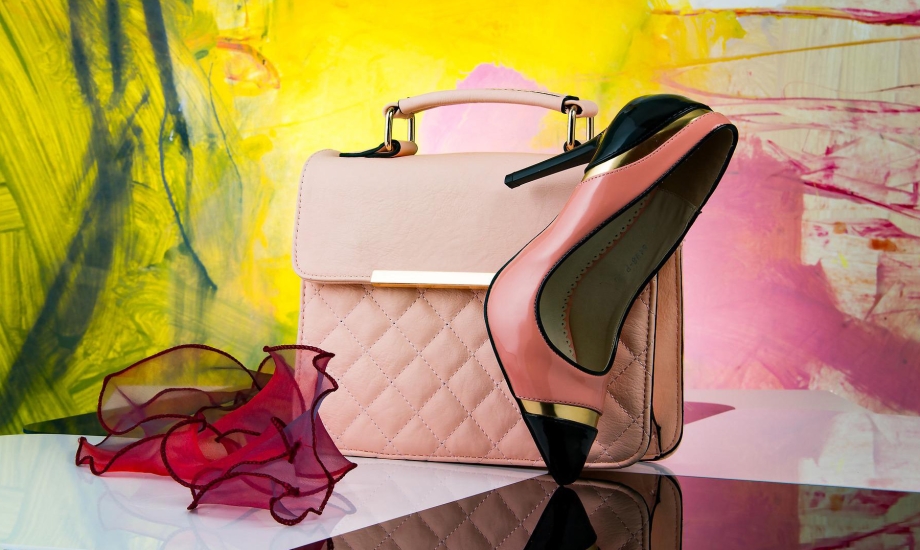
When you're seeking a specific position, you may choose to curate your fashion portfolio further. Alongside showcasing the designs that are specifically relevant to the position you are going for, luxury brands and fast fashion brands will want to see different elements in your fashion designer portfolio.
Luxury brands
Luxury brands are looking for creativity and innovation. They'll be looking for detailed hand drawings, silhouettes that show your design working with other pieces, and high-quality model photos that are styled appropriately for your fashion designs.
And while unique and thought-provoking are key elements that a luxury brand is looking for, they'll also need to see that your designs are commercially viable. They'll want to know that your fashion is marketable and can be manufactured, so focus on your vision while keeping it grounded.
Fast Fashion
Fast fashion is more concerned that you know how to technically produce a garment. Including technical drawings done with Illustrator or InDesign alongside pieces of your tech pack provide evidence that you know what you're doing.
In addition, the name of the game in fast fashion is marketability, so your portfolio must be commercial in all respects. This is the time to highlight your mainstream work, and what makes it quality and achievable.
For both luxury and fast fashion, research some fashion portfolio examples that you love from designers you admire. They'll give you ideas you can use in your own online portfolio design.
How to create a fashion portfolio
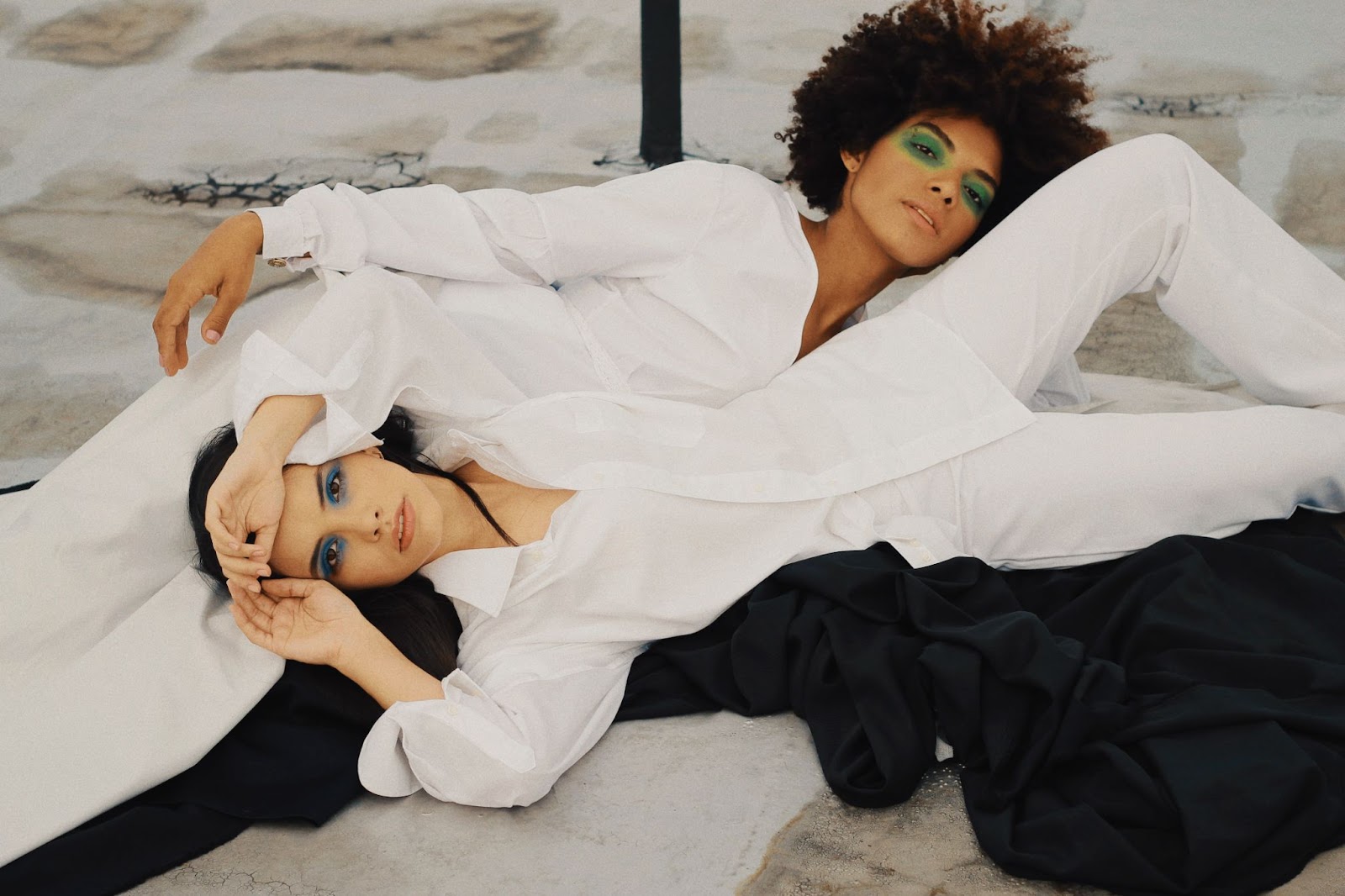
Now that you know everything that goes into a fashion design portfolio, and you've gathered each of the elements, you need to actually put one together.
The first step is choosing an online portfolio hosting site like Journo Portfolio . A great hosting site will offer you a multitude of templates, domain transfer, automatic back-ups and privacy settings. It should also be easy to set up and update, so that you're not having to hire a website designer every time you want to make a change.
Once you've chosen a hosting site and a template, play around with design elements until you find the aesthetic and functionality that works best for you. Focus on creating the most stunning display of your designs that you can, and then work the rest of your fashion portfolio around them.
Be sure to look at plenty of fashion portfolio examples from around the web. You'll see how many different ways there are to maximize impact. And fashion design portfolio examples can also show you what won't work for you, so do your research ( Pinterest is a great place to start).
Ready to create your fashion portfolio?
Your fashion design work deserves to be displayed in a fashion portfolio that sets you apart. Visual storytelling, impactful layouts, and a cohesive aesthetic will help you impress clients and employers and get your work seen in the world.
In addition, an online fashion portfolio website that is easy to design and supports important features like mobile-ready templates and password protection helps you scale your business and stay ready for any market.
Learn more about how Journo Portfolio can help you build the digital fashion portfolio your work deserves.
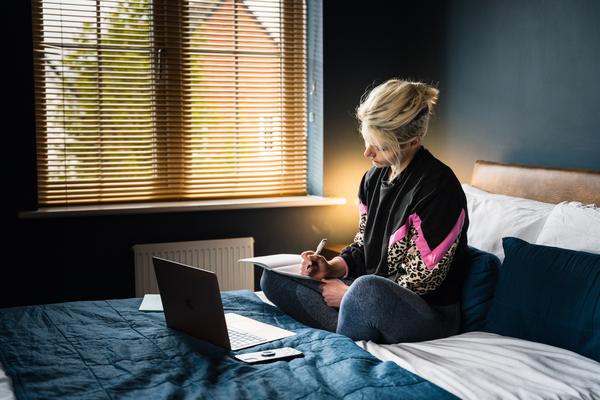

How to Create a Writing Portfolio for Freelancers

Introducing Our New & Improved Portfolio Editor
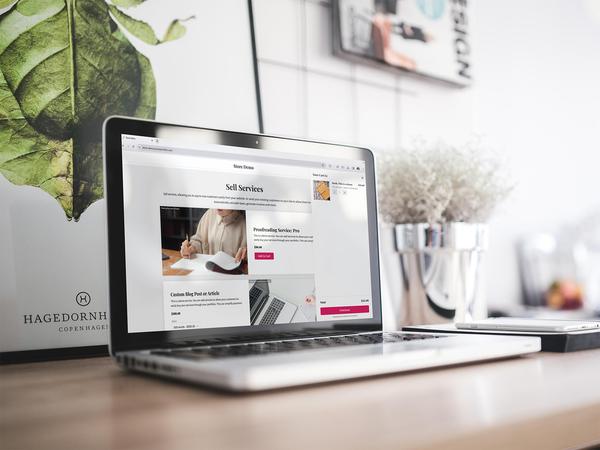
New Year, New Features: Every Upgrade to Journo Portfolio in 2023
Curated by journo portfolio.
Subscribe to a monthly email of useful links, tips and advice for people interested in portfolio-building.
No spam, ever. We take your data privacy seriously and you can one-click unsubscribe at any time.
Prefer English?

Help & Advice
- Fashion Industry Job Roles
- Application Process
Help & Support: Student Services
Information for parents.
- Student Blog
- Fashion Careers
Electra House
Fees & funding, careers & progression service.
- All Resources
- How To Get Into The Fashion Industry
- Schools Outreach Hub
Saturday Club
Business support.
- Get in touch
Jobs at the FRA
Level 4 diplomas.
- 1 A-Level and 5 CGCSE's (Grade 4 / C or above) inc. Maths & English
- Ideal for 18+ Students
- One year course, a nationally recognised qualification
- Three-week experience with a major fashion brand.
How To Make A Fashion Portfolio
Date 19th July 2023
A fashion portfolio is a collection of work by a person that showcases their skills and abilities. They are the best way to visually demonstrate what you can do and what your main skills are, and people across the industry use them, from stylists to buyers.
In this article, you'll find out how to make a fashion portfolio, what you should include, and our top ten tips for creating yours.
What Is A Fashion Portfolio?
Fashion portfolios are used across the industry by people in a variety of different sectors, including styling, visual merchandising and photography, and they can also be used by writers, buyers and designers. The main purpose of a portfolio is to showcase work and creativity, and everyone will present theirs slightly differently.
A fashion portfolio visually showcases your skills and knowledge, and is an easy way for you to demonstrate your abilities and the work you have done. Your portfolio will show people what you can do, and you can tailor it to promote your work in the area you are most interested in.
Types Of Fashion Portfolios
The way that you create and present your fashion portfolio will be different depending on whether you are using it for a university application, start a freelance career or to apply for jobs.
The content will vary based on your focus, too, as a designer's portfolio will look very different from a writer's. See below for examples of what you could include:
- Fashion Design: illustrations, technical drawings, photos of final garments
- Visual Merchandiser: trend and customer research, examples of in-store displays
- Fashion Styling: client research, hair and make-up concepts, photos of styled outfits
- Fashion Marketing: images from photo shoots, articles, advertising research, campaign strategy ideas
- Communications : articles, research, strategies and content plans
What Should Be Included In A Fashion Portfolio?
It can be overwhelming when you don't know where to start with your portfolio, but we've broken it down for you here. You should start by selecting your best work and editing your pieces to create a cohesive body of work that accurately reflects you and your skills.
Portfolios can include trend research, consumer research, illustrations, photography, articles and range plans (to name a few!). Adjust the content of your portfolio based on what skills and experience you most want to promote.
It's important that the portfolio is clear, easy to read, and nice to look at, so make sure that you have presented your work clearly and in a way that is easy for someone else who doesn't know your skills to understand. Have a friend or family member take a look at your portfolio to get their feedback.
10 Fashion Portfolio Tips
There are many elements of a fashion portfolio and there are several steps to making sure that it both represents you, and is suitable for who you are presenting it to (for example, getting a university place or applying for a job).
Here are our top ten fashion portfolio tips:
- Define your style : Before starting your portfolio, take some time to define your personal style and aesthetic. This will help you curate a cohesive collection of work that reflects your unique perspective.
- Select your best work : Choose a selection of your strongest designs, sketches, illustrations, photographs, projects, or any other relevant work that showcases your talent and skills. Quality is more important than quantity, so be selective.
- Show diversity : Include a range of designs and styles in your portfolio to demonstrate versatility. Showcase different types of garments, materials, colour palettes, and design techniques to highlight your ability to adapt and experiment.
- Create a narrative : Arrange your portfolio in a way that tells a story or conveys a theme. This can help create a more engaging and cohesive presentation. Consider the flow, transitions, and the overall visual appeal of your portfolio.
- Include technical drawings : Fashion is not just about aesthetics; it's also about construction and technical skills. If you are a designer, garment technologist, or visual merchandiser, incorporate detailed technical drawings or specifications that demonstrate your understanding of garment construction, patterns, and measurements.
- Showcase real-world projects : If you have collaborated with fashion designers, photographers, or stylists on real projects, include them in your portfolio. This demonstrates your ability to work as part of a team and provides evidence of your professional experience.
- Add variety in formats : Include a mix of sketches, digital renderings, photographs, fabric swatches, and mood boards. This showcases your proficiency in different mediums and adds visual interest to your portfolio.
- Pay attention to presentation : Invest time in presenting your work in a polished and professional manner. Use high-quality images, ensure clear and legible text, and maintain consistency in the overall design and layout.
- Include a CV and contact information : Alongside your visual work, include a well-designed CV that highlights your relevant education, work experience, and skills. Make sure to include your contact information, such as email address and website, so potential employers or clients can easily reach you.
- Regularly update your portfolio : Fashion is a dynamic industry, and your portfolio should reflect that. Continuously update your portfolio with your latest and best work to showcase your growth, new skills, and evolving style.
Remember, a fashion portfolio is your opportunity to showcase your talent and creativity, so make sure it accurately represents your skills and aspirations.
How To Create A Fashion Portfolio
When it comes to creating a fashion portfolio, the format and structure you choose are highly personal, but it's crucial to consider the industry you're in or aspire to be part of, as well as the ease of sharing your portfolio with others in the industry. We've compiled our top tips on creating a fashion portfolio:
Tools and Software
The tools you use to create your portfolio will depend on your chosen medium. For a physical portfolio, you may need traditional art supplies such as sketching pencils, paints, or photography equipment. If you're creating a digital portfolio, you can use graphic design software like Adobe Photoshop, Illustrator, or online portfolio platforms that offer pre-designed templates such as Canva.
The format of your portfolio can vary based on your preferences and the type of work you want to showcase. Some common formats include physical portfolios (printed and presented in a binder or portfolio case), digital portfolios (hosted on a website or presented as a PDF), or a combination of both.
The structure of your portfolio should be organised and easy to navigate. Here's a suggested structure:
- Cover: Start with an eye-catching cover page that includes your name and a relevant visual element that reflects your work.
- Introduction: Begin with an introduction or opening statement that provides an overview of your background, skills, and artistic approach. This section helps set the tone for your portfolio.
- Projects/Works: This is the main section where you present your best work. Divide it into separate sections for each project or type of work. Include a title or description for each project and provide some context or background information.
- Descriptions: Accompany each project or work with a brief description or caption that explains the concept, process, and any relevant details. This helps viewers understand your creative intent and the story behind each piece.
- Visuals: Include high-quality visuals of your work. For physical portfolios, use professional photography or scans of your artwork. In digital portfolios, make sure your images are well-lit, properly cropped, and showcase the details of your work effectively.
- Skills and Experience: Include a section highlighting your relevant skills, education, certifications, and any professional experience that is applicable to your field. This can include internships, freelance work, or collaborations. You may wish to do this in the form of a CV.
- Contact Information: Provide your contact information, including your email address, website, and social media handles. Make it easy for people to reach out to you.
Portfolio Length
The ideal length for a portfolio can vary depending on the complexity and extent of your work. As a guideline, aim for a portfolio that is concise and focused. Generally speaking, portfolios range from 10 to 30 pages. It's important to prioritise quality over quantity and ensure that each page showcases your best work.
Tailor your portfolio to the audience
Remember to tailor your portfolio to your target audience and field. Researching industry standards and seeking feedback from professionals in your field can also provide valuable insights for creating an effective portfolio.
Keep in mind that your portfolio is a dynamic representation of your skills and style, so it's important to regularly update and refine it as you create new work or gain more experience.
Getting Into The Fashion Industry
Are you looking to start your career in the fashion industry? If so, why not consider studying at the Fashion Retail Academy! We offer an excellent range of fashion focused courses that will give you the experience and skills you need to stand out in a competitive job market. Working with over 140 brands and retail partners, you can work on real-life projects whilst building your professional network.
Browse our courses or apply today !
Alternatively if you’d like to know more about the fashion industry as a whole, read our guides The Different Roles Within the Fashion Industry and How To Get Into The Fashion Industry.
Latest News

5 Tips For Exam Success
Find out the Fashion Retail Academy's top tips for succeeding in your GCSE and A-level exams.
19th April 2024

Why You Should Choose The FRA
Our top 10 reasons why you should study a degree at the FRA.
10th April 2024
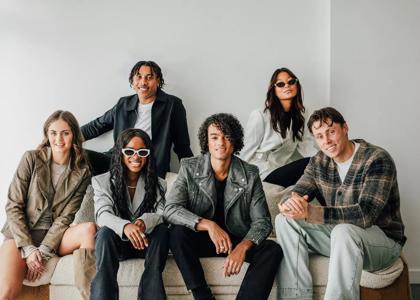
FRA Acquires London College of Beauty Therapy
The Education for Industry Group acquires leading beauty school, London College of Beauty Therapy.
19th March 2024
Register for an Open Day
Search site, international students.
We noticed you are visiting us from outside of the UK.
Did you know we offer online courses that might be suitable for you?
Allotted time popup modal
This popup will be displayed after an allotted time on the website.
This particular popup has been set to show after 5 seconds.
- AI Content Shield
- AI KW Research
- AI Assistant
- SEO Optimizer
- AI KW Clustering
- Customer reviews
- The NLO Revolution
- Press Center
- Help Center
- Content Resources
- Facebook Group
Effective Guide: Fashion Design Personal Statement Example
Table of Contents
Fashion design is a fascinating and ever-changing field. If you’re interested in pursuing a career in fashion design, it’s essential to create a personal statement that showcases your skills and interests.
In this article, we’ll provide a fashion design personal statement example and share tips on writing your own personal statement. So whether you’re still brainstorming ideas or putting the finishing touches on your personal statement, read on for inspiration!
What Is a Fashion Design Personal Statement?
A fashion design personal statement is a written document that outlines your goals and motivations for pursuing a career in fashion design. It explains why you are the best candidate for a coveted spot in a fashion design program. In addition, it also highlights your experience or qualifications related to the field. A well-written personal statement can be an effective way to demonstrate your passion for fashion.
Why Write a Personal Statement for Fashion Design?
A personal statement for fashion design is a great way to highlight your skills, experiences, and motivations behind pursuing this field . It can be a helpful tool when applying for colleges or scholarships. It allows admissions officers or selection committees to get to know you better as an individual.
When writing your statement, stay focused on what makes you passionate about fashion design. Avoid simply regurgitating information that can easily be found elsewhere in your application package.
Instead, take the time to reflect on what has drawn you toward this creative industry. Share stories of how your interest in fashion has developed over time. Showing off your unique perspective will help differentiate you from other applicants while demonstrating that you’re serious about pursuing a career in fashion.
Tips for Writing a Fashion Design Personal Statement
When it comes to writing a personal statement for a fashion design program, there are certain things you want to keep in mind. Here are five tips that will help your statement stand out:
- Be specific about your design experience and interests. What sparked your interest in fashion? Why do you want to study fashion design specifically? Make sure to highlight any relevant coursework or projects you’ve undertaken.
- Show off your personality! A strong personal statement should give the reader a sense of who you are as an artist. Share some of your creative inspirations and how they inform your work.
- Keep it concise and well-written. Avoid extraneous detail and highlight what makes you unique as a designer. The admission committee is likely going to read dozens (if not more) of statements, so make sure yours is sharp and easy to follow.
- Get feedback from others before submitting the final version. It can be helpful to get feedback from classmates, teachers, or anyone else with editorial expertise. This will help ensure that your statement represents yourself in the best possible light!

What to Avoid Writing in the Personal Statement?
When writing a personal statement, be sure to avoid the following:
- Generic statements about your love of fashion. Be specific about what intrigues you about the field and why you want to study it.
- Discussing other unrelated experiences or interests. Your focus should be on explaining why you want to pursue fashion design specifically.
- Writing anything that could be perceived as negative or self-deprecating. A positive attitude is vital when selling yourself in any application materials.
Fashion Design Personal Statement Example
A personal statement is your chance to share with the admission committee who you are and why you want to attend the program. It is a chance for you to voice your interests and desire to study in the field of fashion design. Below is a fashion design personal statement example to inspire you to craft one for yourself:
Personal Statement Sample
As an artist, I have always been intrigued by how clothes can dramatically change someone’s appearance and express their personality. For me, fashion design is not just about creating beautiful clothing; it is also a form of storytelling and self-expression.
Ever since I was young, I have loved playing with different textures and fabrics, experimenting with color palettes, and putting together unique outfits. When I discovered fashion design as a career option, I knew it was the perfect fit for me. I believe nothing is more satisfying than taking an idea and turning it into something tangible that people can wear or see on TV.
Fashion Design has allowed me to develop my artistic skills while also giving me a practical understanding of how garments are made and marketed. Over the years, I have participated in many fashion shows as a designer and model manager/coordinator. This experience has taught me valuable lessons about working as part of a team, dealing with last-minute changes, and interpreting feedback from others.
I am confident that my passion for artistry combined with my organizational skills would make me an excellent candidate for any Fashion Design program.
When writing a fashion design personal statement, the most important thing is to be yourself. Don’t try to imitate someone else’s style; instead, let your personality shine through.
Be sure to focus on what makes you unique and why you want to pursue a career in fashion design. Above all, make sure your statement is well-written and error-free. Following the tips in this post will help ensure that your personal statement stands out from the rest.

Abir Ghenaiet
Abir is a data analyst and researcher. Among her interests are artificial intelligence, machine learning, and natural language processing. As a humanitarian and educator, she actively supports women in tech and promotes diversity.
Explore All Write Personal Statement Articles
How to draft meaningful length of law school personal statement.
Are you confused on how to write a law school personal statement? One of the essential elements of your application…
- Write Personal Statement
Effective History and International Relations Personal Statement to Try
Are you considering studying history and international relations? Or you may be curious about what a degree in this field…
Guide to Quality Global Management Personal Statement
Are you applying for a global management program and want to stand out from the crowd? A well-written personal statement…
How to Draft Better Examples of Personal Statements for Residency
Achieving a residency can be a massive accomplishment for any aspiring medical professional. To secure your spot in one of…
Tips for Drafting a Free Example of Personal History Statement
A personal history statement can be crucial to many applications, from university admissions to job search processes. This blog will…
Writing Compelling Dietetic Internship Personal Statement
Applying for a dietetic internship is a rigorous process and requires submitting a personal statement, which is an essential part…
Winning Fashion Portfolio: Tips & Techniques
- Showcase your personal style
- Highlight your technical skills
- Use quality photography
- Include a variety of styles
- Feature your best work first
- Keep it organized and professional
- Display your creative process
- Update your portfolio regularly
- Get feedback on your portfolio
- Tailor your portfolio to your audience
Creating a fashion portfolio can seem like a huge task, but don't fret. It's all about showcasing your creativity, skill, and unique fashion sense. This blog post is here to guide you on how to create a portfolio for fashion design that stands out in the crowd and wins you plum assignments or that dream job. So, let's get started.
Showcase Your Personal Style
First and foremost, your portfolio should be a reflection of you—your unique style, your fashion voice. It's what sets you apart from the crowd. So, make sure your portfolio screams ‘you’ from every page. Here's how:
- Choose a theme that reflects your style : Are you into minimalistic design? Or do you prefer a more eclectic vibe? Choose a theme for your portfolio that matches your fashion sensibility. It’s one of the first things people see, so make it count.
- Showcase your signature pieces : Every designer has that one signature piece that screams their name. Make sure yours is featured prominently in your portfolio. It could be a dress you designed, a unique pattern you created, or even a fashion accessory that you can't get enough of.
- Use your personal style to tell a story : Your portfolio should tell a story, your story. Each piece should connect to the next in a way that provides insight into your fashion journey. This will give your portfolio a sense of flow and make it more engaging for the viewer.
- Be consistent : Consistency is key when it comes to showcasing your personal style. Make sure your portfolio has a consistent look and feel across all pages. This doesn't mean every page should look the same, though. Instead, think of it as each page being a chapter in the same book—that is the book of you.
Remember, your portfolio is your chance to show the world your unique take on fashion. So, don't shy away from letting your personality shine through. After all, in the world of fashion design, it's not just about what you create—it's also about who you are.
Highlight Your Technical Skills
Now that we've covered personal style, it's time to talk technical skills. When it comes to understanding how to create a portfolio for fashion design, showcasing your technical prowess is a must. This is your chance to show that you're not just a creative mind, but also a skilled artisan. Here's how you can do that:
- Include technical drawings : Technical drawings are a vital part of fashion design. They demonstrate your ability to translate abstract concepts into concrete designs. So, make sure to include some of your best technical drawings in your portfolio.
- Show off your sewing skills : If you're a whiz with a sewing machine, don't hide it. Include pictures of garments you've sewn yourself. You could even include a page dedicated to close-up shots of your best stitches.
- Highlight your knowledge of fabrics and materials : Understanding different fabrics and materials and how to work with them is a crucial skill in fashion design. Use your portfolio to showcase your knowledge. You could do this by including fabric swatches, discussing why you chose certain materials for specific designs, or even writing a short piece about your favorite fabric and why you love working with it.
- Don't forget about color theory : A good understanding of color theory can set a great designer apart from a good one. If you've got a knack for combining colors in interesting and unexpected ways, make sure to highlight this in your portfolio.
By showcasing your technical skills along with your personal style, you will show potential employers or clients that you have the full package—a unique design sensibility backed by solid technical expertise.
Use Quality Photography
Now, let's talk about photography. In fashion, presentation is everything, and your portfolio is no exception. While creating a portfolio for fashion design, you should ensure that you use high-quality images to present your work. Here's how:
- Invest in a good camera : Your smartphone might have a decent camera, but if you can, it's worth investing in a professional-grade camera. This will ensure that your images are sharp, clear, and have the right colors.
- Pay attention to lighting : Good lighting can make or break a photo. Natural light is your best friend, so try to shoot your photos in a well-lit area. If you're shooting indoors, make sure the area is well-lit and avoid harsh shadows.
- Consider hiring a professional photographer : If you're not comfortable behind the camera, consider hiring a professional. They can help you capture your designs in the best possible light.
- Don't forget about editing : Even the best photos can benefit from a little touch-up. Use photo editing software to adjust exposure, contrast, and saturation, and to remove any unwanted elements.
Remember, your portfolio is a visual representation of your work. High-quality images can help your designs shine and make a strong impression on anyone viewing your portfolio. So, don't skimp on the photography!
Include a Variety of Styles
When you're figuring out how to create a portfolio for fashion design, it's important to show off a range of styles. This doesn't mean you have to design in every style imaginable, but it's a good idea to show that you can flex your creative muscles in different directions. Here's how to go about it:
- Experiment with different fashion genres : From streetwear to haute couture, there are so many different types of fashion out there. Don't be afraid to dip your toes into different genres. This can show potential employers or clients that you're versatile and open-minded.
- Play with different fabrics and textures : Silk, denim, cotton, lace — the world of fabrics is vast and varied. Showcasing designs with different materials can demonstrate your understanding of how different fabrics work and move.
- Include different types of clothing items : Don't limit yourself to just dresses or just shirts. Include a mix of tops, bottoms, dresses, outerwear, and even accessories. This can show that you're able to design for different needs and occasions.
- Try out different color palettes : While it's great to have a signature color palette, try to mix things up a bit. Show that you can work with different colors and create harmonious color schemes.
Remember, variety is the spice of life—and fashion! Including a variety of styles in your portfolio can show that you're a well-rounded designer with a wide range of skills. So, don't be afraid to mix it up and show off all the different styles you can create.
Feature Your Best Work First
When you're learning how to create a portfolio for fashion design, it can be tempting to save the best for last. You might think that building up to your most impressive pieces will create a dramatic finale. But here's the thing: in the fast-paced world of fashion, first impressions matter—a lot. So, make sure you put your best foot forward right from the start.
Think of your fashion portfolio as a sort of visual elevator pitch. Within the first few seconds, you want to captivate your audience and give them a taste of what you're capable of. This means leading with your strongest, most impressive designs. Here's how to do it:
- Choose your showstoppers : These are the pieces that make people go "Wow!". They could be your most innovative designs, or the ones that have received the most praise or recognition. Whatever it is that sets them apart, these are the pieces you want to lead with.
- Consider the impact : Which of your designs are the most visually striking? Which ones instantly draw the eye and command attention? These are the kinds of pieces that can make a powerful first impression.
- Showcase your skills : Your best work should also demonstrate your technical skills and creative abilities. So, choose pieces that showcase your proficiency in design, sketching, draping, sewing, and other key areas of fashion design.
- Keep it fresh : While it's important to lead with your best work, you also want to keep things fresh and current. So, include recent designs that reflect your current skills and style.
Remember, your portfolio is your chance to make a strong first impression. By leading with your best work, you can ensure that you capture your audience's attention from the get-go—and make them excited to see more of what you have to offer.
Keep it Organized and Professional
Creating a portfolio for fashion design isn't just about showcasing your best work—it's also about presenting it in a way that's organized and professional. Remember, this isn't just a collection of your favorite sketches or designs. It's a reflection of you as a designer, and it should communicate not only your artistic abilities, but also your attention to detail and your professionalism.
Here are some tips on how to keep your fashion portfolio organized and professional:
- Structure it well : Like a well-designed garment, your portfolio should have a clear and logical structure. This might mean organizing your work by collection, by date, by theme, or by some other method that makes sense for your work.
- Keep it clean : Avoid clutter and ensure each piece of work can breathe on its own. You don’t want to overwhelm the viewer with too much at once.
- Pay attention to details : This includes everything from the quality of the images you use, to the font and layout you choose for your portfolio. These details might seem small, but they can make a big difference in how your work is perceived.
- Include necessary information : Make sure each piece is accompanied by relevant information, such as the collection it belongs to, the materials used, the inspiration behind it, etc. This not only provides context for your work, but also demonstrates your thought process and attention to detail.
Remember, your portfolio is like a job interview in visual form. So, just as you'd dress up for an interview, you should make sure your portfolio looks its best. By keeping it organized and professional, you can ensure that it makes a positive and lasting impression.
Display Your Creative Process
When you're learning how to create a portfolio for fashion design, it's important to remember that your portfolio is not just a showcase of finished products. It's an opportunity to tell your story as a designer. And a big part of that story is your creative process.
Showing your creative process allows viewers to understand how you think, how you approach design, and how your ideas evolve from initial concept to final piece. This can make your work stand out and can give potential employers or clients insight into what it would be like to work with you.
Here are a few ways to display your creative process in your fashion portfolio:
- Include sketches and drafts : Show your work in various stages of completion. This could include initial sketches, fabric swatches, or even photos of a garment in progress. It gives a 'behind the scenes' look into your work.
- Explain your inspiration : Share the story behind your designs. What inspired you? Was it a particular culture, a historical era, a piece of art, a mood or emotion? Including this narrative can make your designs more meaningful and relatable.
- Show your problem-solving skills : Did you face any challenges during the design process? How did you overcome them? Sharing these experiences not only makes for an interesting story, but also shows your ability to solve problems and adapt.
- Illustrate your technique : If you use any unique techniques or processes in your work, make sure to highlight them. This could be anything from an unusual fabric manipulation technique, to a unique way of draping or pattern cutting.
Remember, the goal is not just to show what you create, but how you create it. By showcasing your creative process, you give viewers a deeper appreciation of your work and a better understanding of you as a designer.
Update Your Portfolio Regularly
Just like the fashion industry, your portfolio should never be stagnant. It should evolve as you gain new experiences, develop fresh ideas, and refine your style. By regularly updating your portfolio, you can ensure it always reflects your best and most recent work.
So, how often should you be updating your portfolio? Well, there's no one-size-fits-all answer. It depends on how often you're producing new work. If you're constantly working on new projects, you might want to update your portfolio every few months. If you're more of a slow and steady designer, updating once or twice a year might be enough.
Here are a few tips to keep your portfolio fresh and relevant:
- Out with the old, in with the new : If a particular piece no longer represents your current style or skill level, don't hesitate to replace it with something new. Your portfolio should always showcase your best work.
- Stay current with industry trends : While your portfolio should definitely showcase your personal style, it's also important to show that you're aware of and can work with current fashion trends. This shows potential employers or clients that you're up-to-date and adaptable.
- Don't forget to update your skills section : If you've learned a new technique or started using a new design software, make sure to add this to your portfolio. Remember, your portfolio is not just about your designs, but also about your skills and abilities.
- Keep the presentation clean and professional : Even as you update your portfolio, make sure it remains organized and easy to navigate. The focus should always be on your work.
Remember, your fashion portfolio is a living document of your journey as a designer. By keeping it updated, you're not just adding new work, but also showing your growth and progress in the field of fashion design.
Get Feedback on Your Portfolio
When you're learning how to create a portfolio for fashion design, feedback can be a game-changer. It's like having a mirror that reveals what's working and what needs tweaking. But, where can you get valuable feedback?
Here are a few places you can turn to:
- Professionals in the field : Reach out to experienced fashion designers or industry professionals for their perspective. They've been where you are and can provide insights that you might not have considered.
- Fashion design teachers or mentors : These are people who know your work and understand the principles of design. They can provide constructive criticism and practical suggestions for improvement.
- Peers and fellow designers : Share your portfolio with your classmates, colleagues, or friends in the field. They can offer a fresh set of eyes and might spot things you've overlooked.
- Online communities : There are many online forums and communities for fashion designers where you can share your portfolio and get feedback. Just remember to take online feedback with a grain of salt and trust your instincts.
Remember, feedback is not about pleasing everyone or making a portfolio that's liked by all. It's about understanding different perspectives, identifying strengths and weaknesses, and making informed decisions to improve your work. So, don't fear criticism—embrace it. It's all part of the process of creating a winning portfolio for fashion design.
Tailor Your Portfolio to Your Audience
As you learn how to create a portfolio for fashion design, one of the key things to consider is your audience. Who are you creating this portfolio for? Is it for a potential employer, a client, or for a fashion school application? Understanding who your audience is can help you make strategic choices when presenting your work.
Here are some tips to help you tailor your portfolio to your audience:
- Understand your audience's preferences and expectations : Do some research to find out what your audience values. If you're applying for a job, look at the company's style and the kind of designs they favor. If you're applying to a fashion school, look at their curriculum and the work of their successful students.
- Select relevant pieces : Choose pieces that align with your audience's preferences and expectations. If you're applying for a job in a company that designs sportswear, showcase your designs in that genre.
- Speak their language : Use the same terms and language that your audience uses. This can show that you understand their world and can fit into it.
- Show you can solve their problems : If you understand your audience's challenges, you can present your work as solutions to those challenges. This can make your portfolio more compelling to them.
Remember, your portfolio is not just a collection of your designs—it's a way to communicate your understanding of your audience and your ability to meet their needs. So, take the time to understand your audience and tailor your portfolio to them. It's an essential step in creating a successful portfolio for fashion design.
If you're eager to create a winning fashion portfolio, we highly recommend checking out the workshop ' The Ultimate Role-Getting Portfolio Layout ' by Jasmine MacPhee. This workshop will provide you with essential tips and techniques to help you craft a portfolio that showcases your unique style and stands out in the competitive fashion industry.

Live classes every day
Learn from industry-leading creators
Get useful feedback from experts and peers
Best deal of the year
* billed annually after the trial ends.
*Billed monthly after the trial ends.
- International edition
- Australia edition
- Europe edition
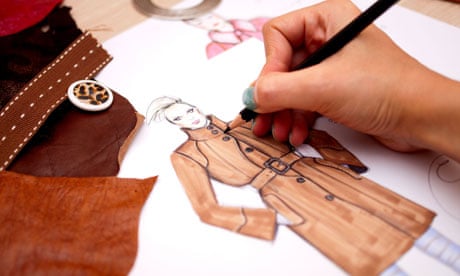
How to write a personal statement for fashion
Fashion courses at university are incredibly competitive, so how do you make your personal statement stand out? Be original, think business, and don’t quote Chanel
"F ashion is not simply a matter of clothes; fashion is in the air, born upon the wind; one intuits it." That's a quote from Coco Chanel – and it's how not to start a personal statement for a fashion degree.
When applying for a university fashion course, your personal statement won't even be read though if your portfolio is not good enough.
Willie Walters, programme director for fashion at Central St Martins, said the personal statement is "secondary" to portfolio work.
"I don't even read the statements unless the work looks interesting," she says.
Walters advises applicants to make their portfolio work as clear as possible, and to include research and sketchbook work, as well as photographs of design pieces. "We look for originality and something fresh."
When it comes to the written statement, saying you have a "passion for fashion" is an immediate no-no, says Josephine Collins, course leader for fashion journalism at the London College of Fashion.
"It's easy to do and sounds great but we've seen it so many times before," she warns. Similarly, admissions tutors cringe when confronted with yet another tired quote from a fashion icon.
Fashion related courses are notoriously competitive, so avoiding clichés is an important way to make your application stand out, says Andrew Groves, course director for fashion design at the University of Westminster.
"Put yourself in my shoes," says Groves, who reads over 1,000 personal statements each year. "How would you make yours different from all those other applications?"
Although mentioning your favourite designer is a good idea, you should think carefully about who you cite, says Mal Burkinshaw, programme director of fashion at Edinburgh University.
"We always have the same designers quoted. Every now and then someone says they are interested in a more conceptual designer and it makes them stand out. You can tell they are engaging more deeply."
Evidence of engagement with fashion is essential, agree tutors, but make sure you are thinking about it as a serious industry.
"Fashion is the third largest industry in the UK," says Jane Gottelier, programme leader of the fashion department at Falmouth University.
"I steer clear of students who talk mainly about celebrity fashion and TV programmes in their personal statements because it makes me think that they see fashion as something rather fluffy," she says.
As well as explaining why you want to study fashion and listing any relevant work experience, it's also important to show interests outside of fashion, say tutors.
"Some of our fashion courses are really business-orientated," says Liz Barnes, senior lecturer in fashion at Manchester University, "so demonstrating a commercial mind is key."
Outside interests show an engagement with general society that is important for a fashion student, and key to fashion admissions tutors.
It's important to be up to date on current news, to prove an academic interest and to show curiosity about the world and an inquisitive mind. If you have an unusual hobby don't be afraid to mention it as it might help yourself get noticed.
"I've had ice skaters, an Olympic-standard gymnast and stick insect collectors," says Anne Chaisty, principal lecturer in fashion studies at the Arts University Bournemouth.
Fashion may be portrayed as a cut-throat industry, but people who are interested in giving something back interest Chaisty.
"We look for students who want to make a positive difference through what they do as a designer," she says.
Accuracy and a good flow are things all tutors agree on when it comes to a good personal statement, but Barnes says you should also be in tune with the specifics of your course.
"There are lots of courses that are called fashion marketing, for example, but the content of those courses will vary enormously," Barnes explained.
"Understand the course you are applying for and tailor the personal statement to match."
For courses where a portfolio carries a heavier weighting than the personal statement, it is still important to express personality in your written statement.
Tutors say individuality and character are perhaps the most important things to convey.
"Don't contrive something for the sake of it," advises Chaisty, "just be honest, be natural and be yourself."
Just don't quote Coco Chanel.
This article was amended on 19 September to correct an error, changing Willie Walters' job title from course leader to programme director of fashion at Central St Martin's.
- Guardian Students
- Personal statements
- Higher education
- Applying to university
- Advice for students
Comments (…)
Most viewed.
Clearing Universities & Courses
Clearing advice.
Recommended Clearing Universities
Popular Course Categories

Course Search & Discover
Start the search for your uni. Filter from hundreds of universities based on your preferences.
Search by Type
Search by region.
Recommended Universities

Ravensbourne University London
London (Greater) · 88% Recommended

Swansea University
Wales · 100% Recommended

University of Surrey
South East England · 98% Recommended
Search Open Days
What's new at Uni Compare

University of Roehampton
Study a teaching degree at one of the UK's leading teacher training providers

University of Sussex
Prepare for a digitally advanced workplace with cutting edge Finance Degrees
Ranking Categories
Regional rankings.
More Rankings

Top 100 Universities
Taken from 65,000+ data points from students attending university to help future generations

About our Rankings
Discover university rankings devised from data collected from current students.
Guide Categories
Advice categories, recommended articles, popular statement examples, not sure what to search for, take our quick degree quiz.
Find the ideal uni course for you with our Course Degree Quiz. Get answers in minutes!
Take our full degree quiz
Get more tailored course suggestions with our full Course Degree Quiz and apply with confidence.
PERSONAL STATEMENT EXAMPLE Fashion Buying/Merchandising
Submitted by Grace
Fashion Buying/Merchandising
What we choose to wear mirrors how we wish to be perceived. Fashion is a continuation of personality; individuals can take the same item of clothing from a retailer and envision it completely differently, thus making it unique to them. Another aspect of fashion that I find interesting is its many forms of influence, such as culture. On their travels, buyers see something that inspires their trend board and feeds into the design process. This shows the power that buyers and merchandisers have in controlling what reaches consumers. The dynamic nature of the industry makes the risk taken rewarding when it's a success. It's this uncertainty that I think makes the roles of buyers and merchandisers so exciting.
To gain a better understanding of working for a fashion house, I completed a placement at Debenhams Head Office in the Men’s Footwear Buying department. I gained valuable insight into how the buying sector functions and the production process from beginning to sign-off. Having this opportunity confirmed my career aspirations in fashion. It also introduced me to the importance of merchandising, showing me how closely both sides work together to finalise a range. I also spent time with a design team, going through stages of product development, from identifying a potential trend to production and distribution, which greatly widened my understanding. During this time at Debenhams, I realised the importance of having specialist knowledge of materials. This is why I believe that studying Buying and Merchandising will provide me with essential skills fundamental to working in fashion.
Being a sales consultant at Next, I have a good understanding of in-store operations. One task I carried out is comparing the best and worst data and applying this to the store’s layout. This shows the importance of visual merchandising, how the placement of certain products enhances sales. Another aspect of working in-store that I love is witnessing the change in stock overtime, and observing customer’s reactions to this first hand. What fascinates me is how a design concept initiated at Head Office is developed into a range that evolves over more than one season. Having a job has helped me to better my time-management, as well as improving my team-working skills. I utilised these skills when my family and I organised a Charity Dinner and Dance in aid of JDRF (Junior Diabetes Research Foundation), seating 135 guests. We raised £10,000, which motivated us to continue fundraising, planning our next event for 2018.
Studying Art has challenged me to take more risks in my work. It has also greatened my appreciation for different art forms, and has inspired me to visit more exhibitions. From engaging in the subject, I have good awareness of the formal elements, such as colour, texture and composition, which is essential when working in retail, from product design to marketing and branding. My decision to study Business has greatly broadened my understanding of commercial principles and practices, from regional to international scale. I have a good understanding of the functional areas and the influences of one on another, for instance, the effect of a business’s financial performance on its marketing budget, or level of operations. Finally, from studying Psychology , I have learned how individuals often adapt their fashion choice in order to feel valuable within a group. This has greatened my appreciation for fashion as a way of expressing identity and its effects on confidence and self-worth.
I feel that my chosen A-Level subjects of Art, Business and Psychology, along with my work experience placement and job are providing me with a solid educational background and the practical experience necessary to gain further knowledge and understanding which I hope to continue to develop at your institution. The course that you provide will hopefully enable me to secure a successful career in Buying and Merchandising, the path I have chosen to pursue.
Want to learn more about a university?
Get your questions answered by sending them an enquiry now.
undergraduate Universities
Undergraduate uni's.

Ravensbourne
103 courses

Swansea Uni
1319 courses

Uni of Surrey
750 courses

Uni of East London
575 courses

Uni of Portsmouth
761 courses

114 courses

Northeastern Uni

Uni of Sunderland
340 courses

Leeds Beckett Uni
454 courses

Uni of Chester
645 courses

Uni of Brighton
407 courses

Cardiff Met Uni
501 courses

Goldsmiths, UOL
344 courses

Uni of Winchester
259 courses

Middlesex Uni
634 courses

Uni of Roehampton
468 courses

West London IoT

Escape Studios

467 courses

Uni of Kent
580 courses

Wrexham Uni
289 courses

Uni of Suffolk
186 courses

Uni for Creative Arts
672 courses

Uni of Leicester
432 courses

886 courses

Uni of Westminster
503 courses

Uni of Bradford
390 courses

Uni of Hertfordshire
584 courses

Staffordshire Uni
472 courses

548 courses

Heriot-Watt Uni
334 courses

Queen's Uni
635 courses

Coventry Uni
480 courses

ARU Writtle
104 courses

Kingston Uni
617 courses

Uni of Bedfordshire
656 courses

Uni of Essex
1400 courses

709 courses

Leeds Arts University

Bath Spa Uni
520 courses
,-Bristol.jpg)
UWE, Bristol
497 courses

Uni of C.Lancashire
798 courses

Uni of Huddersfield
668 courses

Uni of Reading
685 courses

Anglia Ruskin Uni
808 courses

Edge Hill Uni
383 courses

Nottingham Trent
912 courses

Uni of Hull
498 courses
FIND THE IDEAL COURSE FOR YOU
Degree Course Quiz
Find the ideal university course for you in minutes by taking our degree matchmaker quiz today.
Find the latest from Uni Compare

Heriot-Watt University
Discover career-focused degrees at a top ranked uni for graduate employability

University of Law
Ranked Top 20 amongst English universities in the 2023 National Student Survey, click here to learn more!
- Colleges and Institutes
- Accessibility --> Accessibility tools
- --> Subjects -->